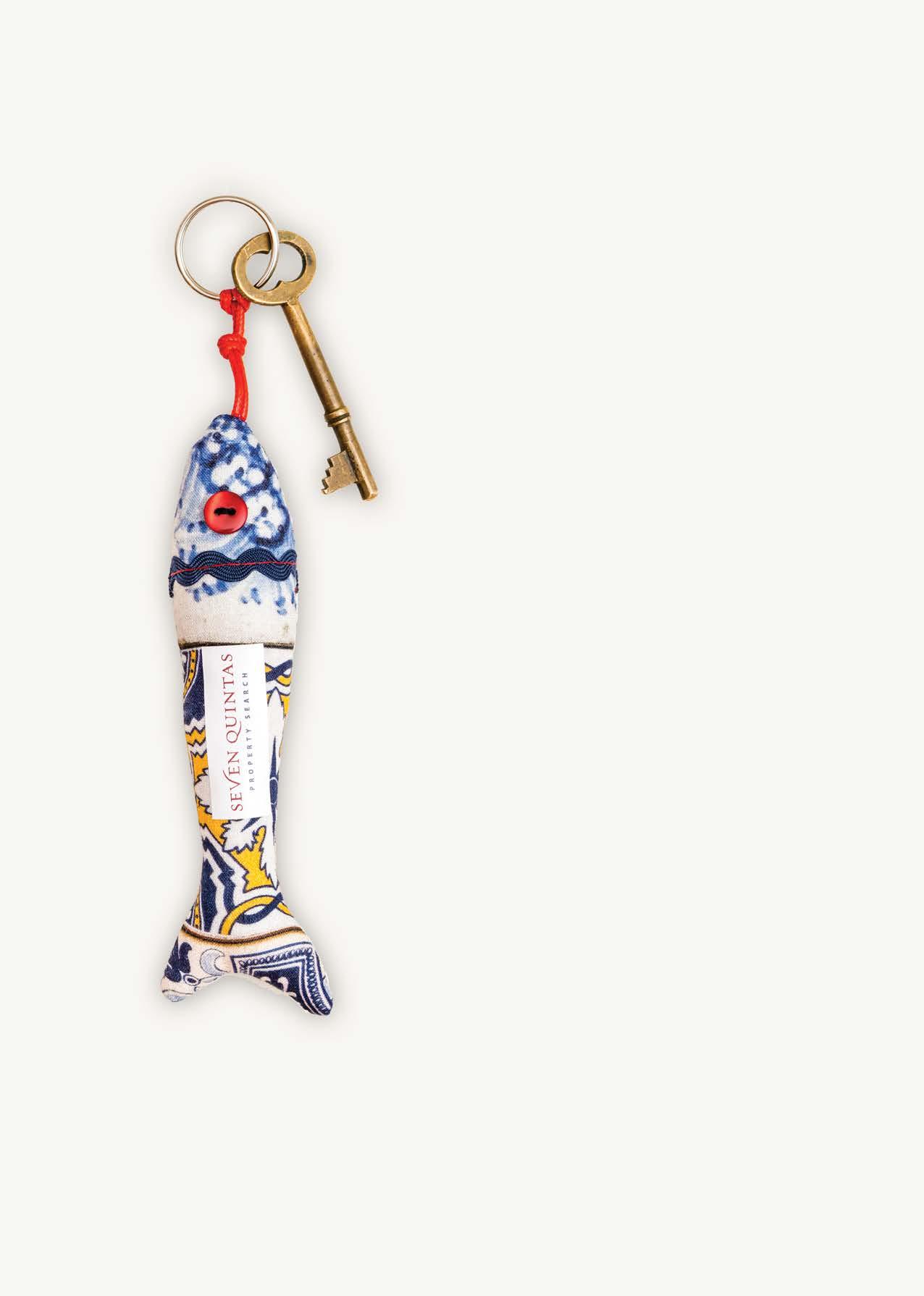
MORE BLOOMING GORGEOUS THAN YOU EVER IMAGINED










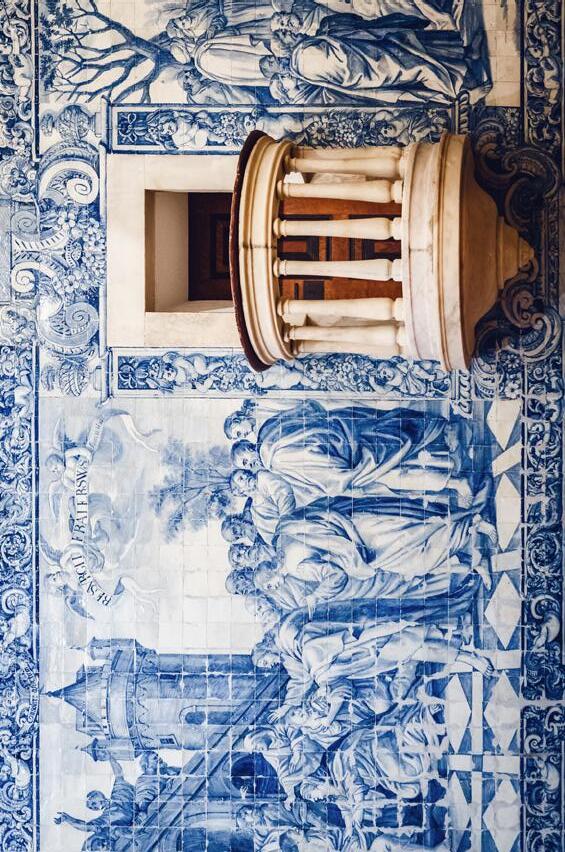





MORE BLOOMING GORGEOUS THAN YOU EVER IMAGINED














Mãe Soberana, on 4 May in Loulé, is the largest religious festival south of Fatima when many thousands turn out to see the Patron Saint’s statue returned to her sanctuary on the hill. This is an event like no other, deeply religious and enthralling and attended by locals, residents and visitors alike.

May is a month full of promise. And that gives us, at AlgarvePLUS, the opportunity to dive into new things and find new favourites. Places to stay that are decidedly different; people who have taken up fresh interests and can’t wait to share their views; foods that will flex the tastebuds; and design that stands out and makes an impression.
Portugal is packed with personality, its history and culture, habits and traditions, its wide open spaces, its coves and caves, its architecture old and new, its galleries that feature fine art. This month, in our biggest issue yet, we’ve looked at the specialist tour operators who know what will enchant and whose clients come back for more time and time again; the shops that never fail to delight with hand-picked products chosen for our lifestyle here; the grand cafés in the major cities, and the foods that are unique to a particular region.
I suppose that makes us lifestyle guides of sorts – we have long been pledged to introducing readers to the country they are now calling their own, or perhaps their holiday destination, and to promoting local businesses and the people behind them. When the sun is out, there is even more to enjoy.

Susi Rogol-Goodkind, EDITOR +351 965 581 831 | susi@rogol-goodkind.com
MARTIN GOODKIND
Publisher +351 963 146 398 martin@algarveplusmagazine.com
KIM COLLEY
Art Director
+44 (0)7973 426196 dk.colley@btinternet.com
(COST OF CALLS AT YOUR MOBILE PROVIDER’S RATE)


Short and chic for a stylish swim. Check out the new numbers from Mr Blue, sized from small to XXL, and a regular fit. €45.99. Mar Shopping, Algarve Shoppinng and online.
mrblue.pt


Lucie Marquis is a British designer who is now based in Porto and known for her flamboyant collections made from deadstock fabrics. Sarongs are the big story for the season ahead, perfect with a matching hat! Good to know is that a proportion of the proceeds of sales go to charity. luciemarquis.com
IF YOU HAVE ANYTHING YOU WOULD LIKE TO SHARE, EMAIL susi@rogol-goodkind.com

Love this little cropped linen blend jacket, great for both casual and dress-up looks. €29.95. zara.com
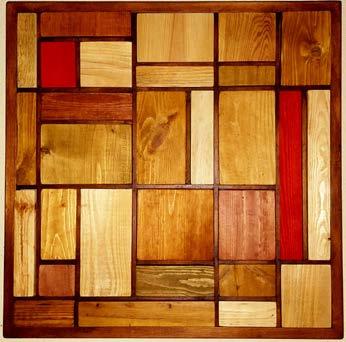
Take a seat. Gemma is a deluxe cotton velvet striped ottoman pouf in a choice of six colours, by Opala Home Talisman. €611. opalahome.com


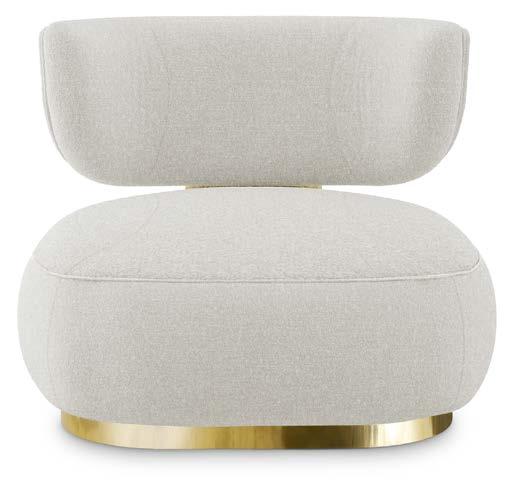
Voluptuous or what!
The Talie Single Sofa by Luxxu is upholstered in Monet Pearl fabric. Its backrest is slightly curved for added aesthetics and attached to a golden metallic support reminiscent of the mid-century modern era. luxxu.net
Dishy numbers
Microwave and dishwasher safe, a delightful collection of handcrafted and handpainted dishes by a ceramicist in Caldas da Rainha. €10–€38.50, from Ange Boutik in São Brás.
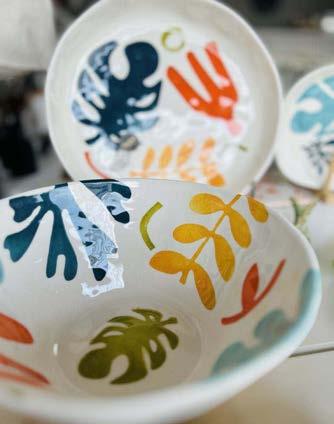
but in the meantime check him out


Custom paintings tailored to your style and space, starting at €0.09 per cm2. Book a studio visit with Paulin Hanuise in Vale Telheiro, Loulé, 920 546 908

Gustoko is a name you should know if you have a passion for unusual stylish bags. Find them at Vila Vita Parc in the Mimo store in V-Life. This one, Nina, is a must-have, €345. vilavitaparc.com
wish list



The new collection has arrived at Alamaya in Almancil. Don’t miss out on Paula Pinto’s latest finds. alamayadeco.com
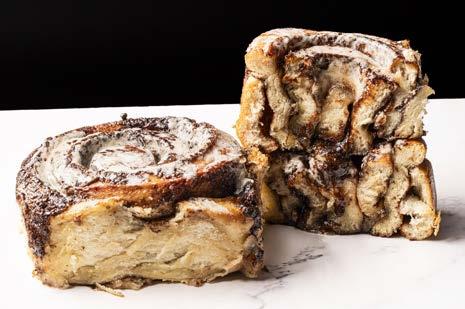

WALKING LOUL É ? SEEN THE LATEST EXHIBITION AT ART CATTO? BEEN TO THE PICTURES AT IN THE PINK? VISITED THE MUNICIPAL MARKET? SHOPPED AT MARTINA? TIME IN BETWEEN TO VISIT CINNAROMA BAKERY TO SATISFY THE TASTE BUDS. WE TALKED TO OWNERS PHILLIP AND KATHARINA
When did you open? We officially opened our doors on 31 January 2025, after 18 months of perfecting our recipes and bringing our vision to life.
Why Loulé? Loulé is full of charm, history, and a strong sense of community. We felt it was the perfect place to introduce something unique – a bakery focused on perfecting cinnamon rolls and cookies. The warm welcome from locals and visitors has been amazing!
What were you doing before? We’ve had various experiences over the years, but most recently, we worked in online marketing before deciding to turn our passion for baking into a business.
How many varieties of cinnamon goodies do you offer – and what’s special about them?
Right now, we have six different rolls and six different cookies. Each one is crafted with high-quality ingredients and attention to detail. Our rolls range from classic to creative new flavours, and our cookies are thick, gooey, and indulgent – NYC-style. We also have vegan-friendly options to ensure there’s something for everyone.
Where are the recipes from? Our recipes are the result of one and a half years of testing and refining. Inspired by what we experienced in New York City, we worked tirelessly to perfect every element, from texture to flavour, making them truly our own.
How many pieces do you produce each day? We bake fresh daily, adjusting production based on demand. We sell out quickly, so we always recommend visiting early!
Are you supplying other shops/restaurants, etc? At the moment, our focus is on creating the best experience in our bakery. While we’re open to possibilities in the
future, right now we’re keeping things exclusive to Cinnaroma Bakery.
Best-sellers? Our Cinnaroma Classic is always a favourite – soft, buttery, and filled with cinnamon and brown sugar, topped with smooth cream cheese frosting. But flavours like Apple Twist (with spiced apple filling) and Pure Pistachio (with a creamy pistachio filling and crushed pistachios) have built a fanbase of their own.
For cookies, our New York Cinnaroma (semi-sweet chocolate, walnuts, and sprinkled with sea salt) and Pistachio Bite (pistachios, white chocolate, and a pistachio filling) are customers’ first choices. But Triple Treat (loaded with three kinds of chocolate) is catching up fast.
Where do you buy your raw ingredients? We carefully select our ingredients from trusted suppliers to ensure top quality in every batch.
Do you offer anything else?
Our focus is on perfecting our rolls and cookies, but we also serve specialty coffee to complement them. It’s all about creating the best sweet experience possible!
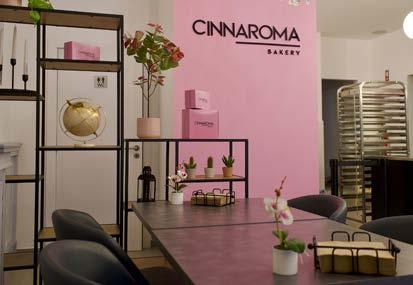
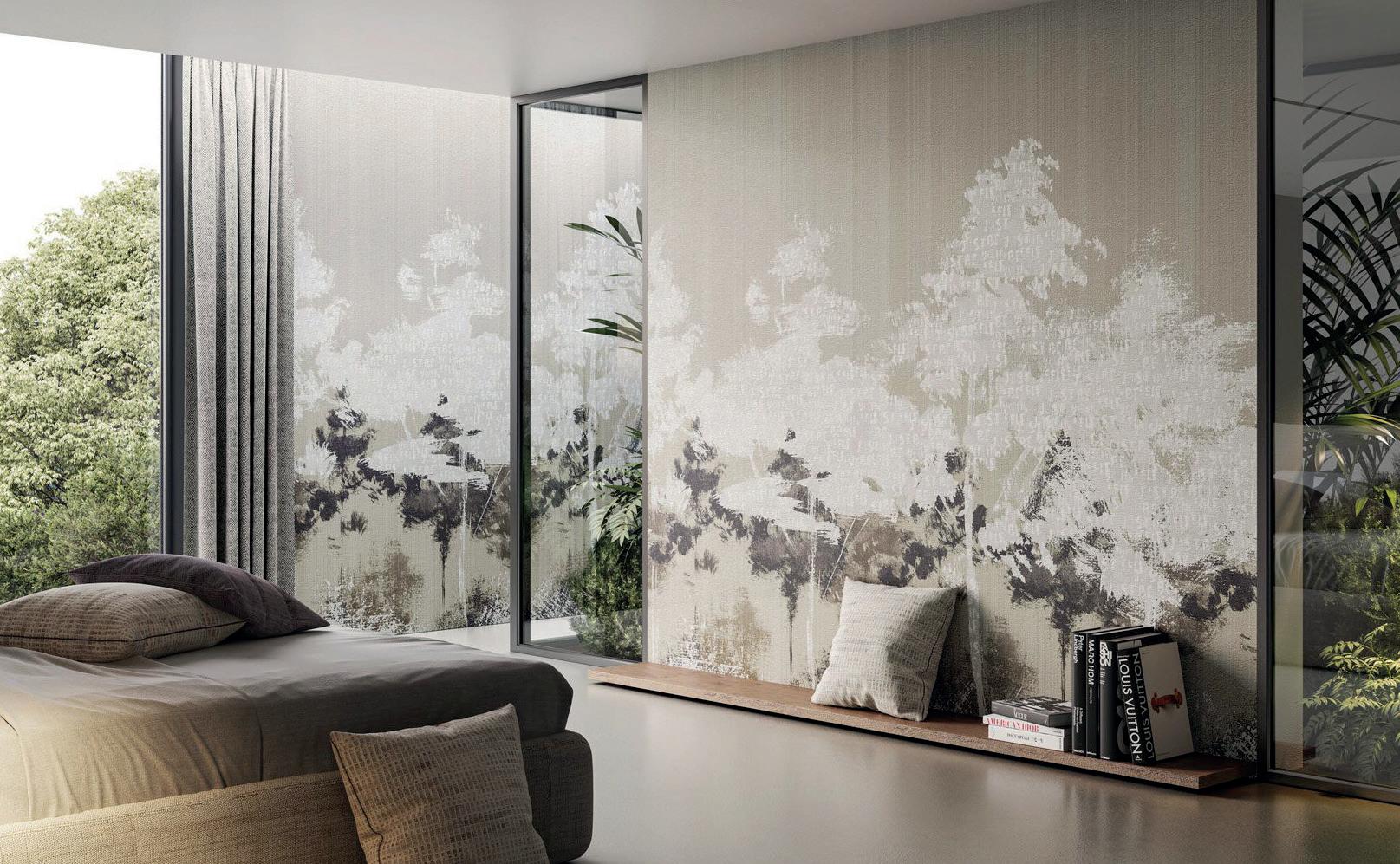

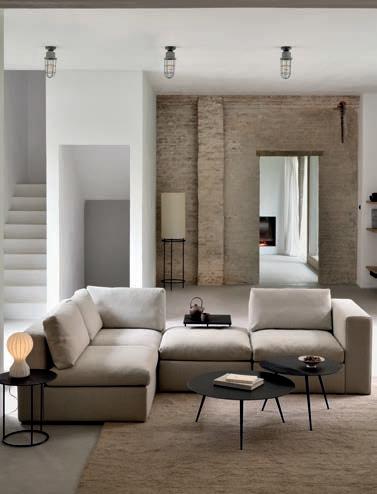

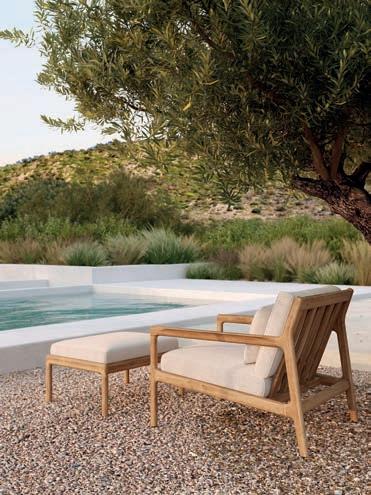
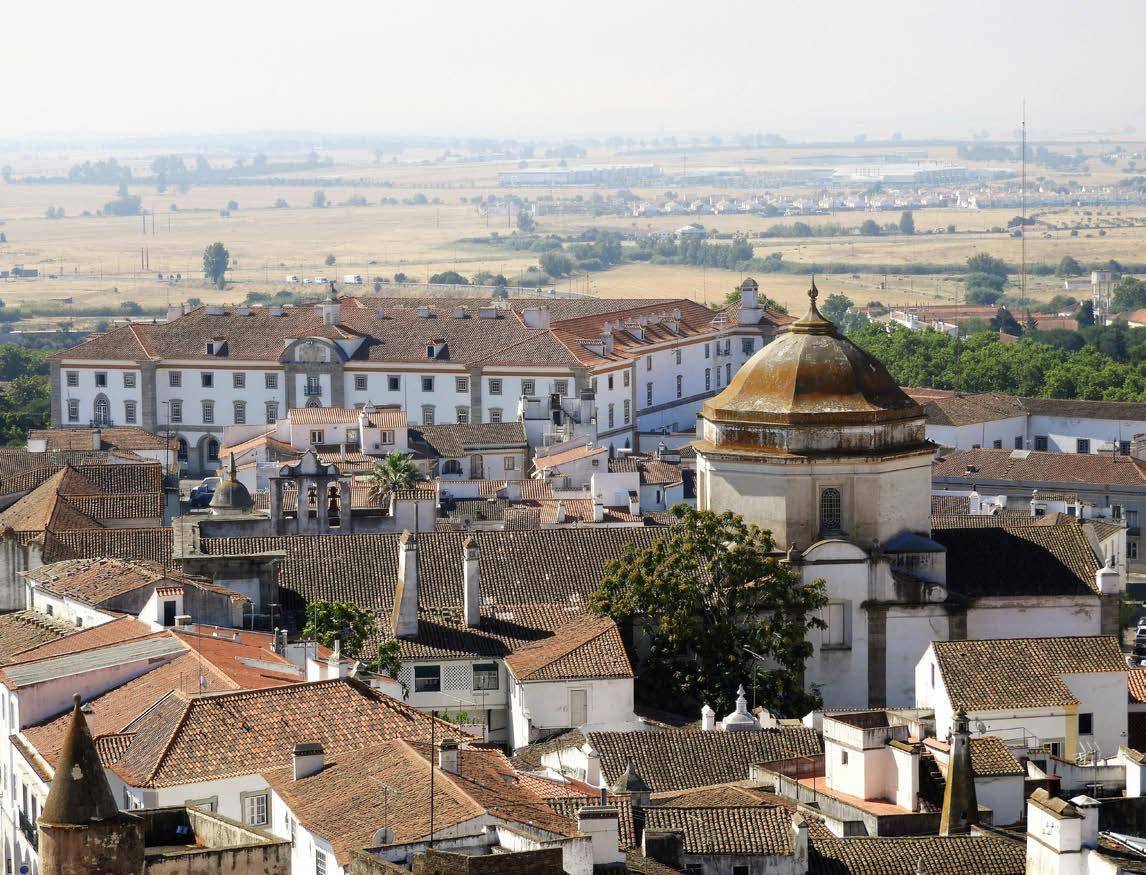
DRIVING INTO ÉVORA IS LIKE SHIFTING INTO A DIFFERENT GEAR – ONE THAT RUNS NOT ON SPEED BUT ON STORIES. THE KIND OF PLACE THAT MAKES YOU PAUSE, BREATHE IN THE DRY ALENTEJO AIR, AND WONDER JUST HOW FAR BACK THE FOOTSTEPS ECHO IN THESE PARTS. I CAME HERE CHASING HISTORY, BUT WHAT I FOUND WAS A LIVING, BREATHING TIME CAPSULE PERCHED QUIETLY ABOVE THE GOLDEN PLAINS OF PORTUGAL
Words: NICK ROBINSON

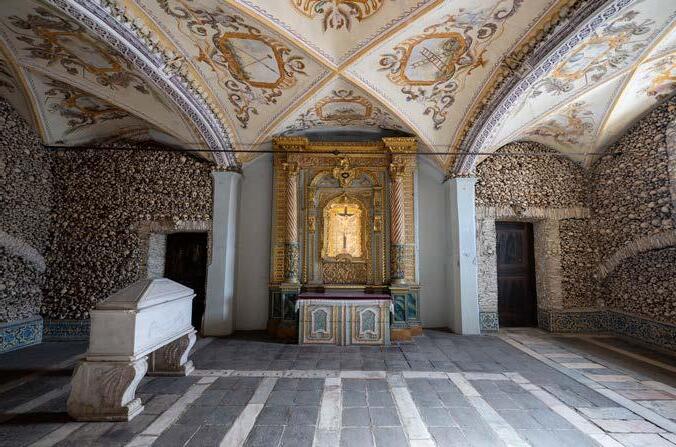
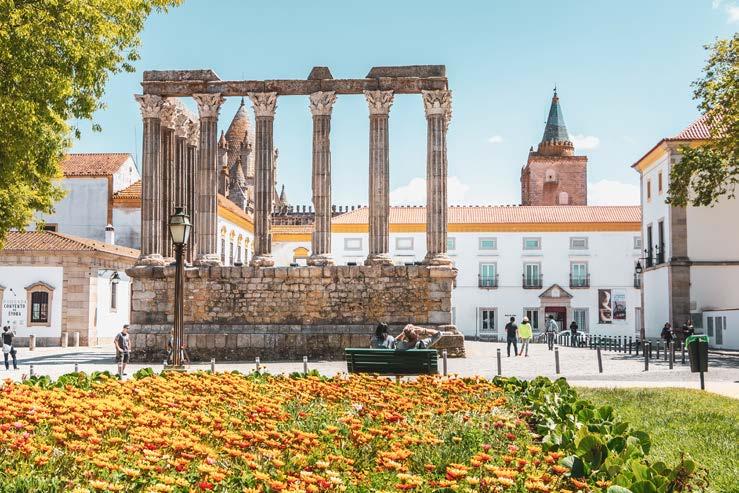
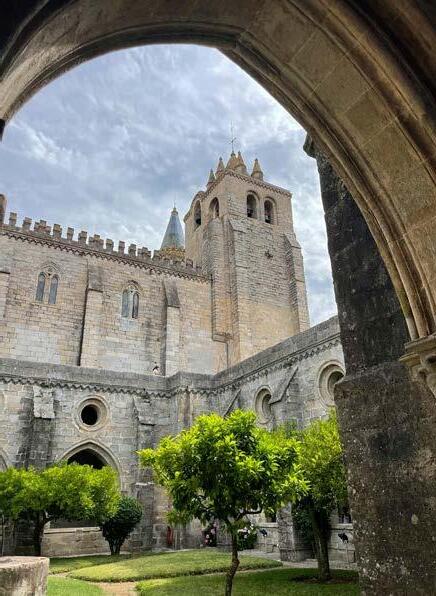
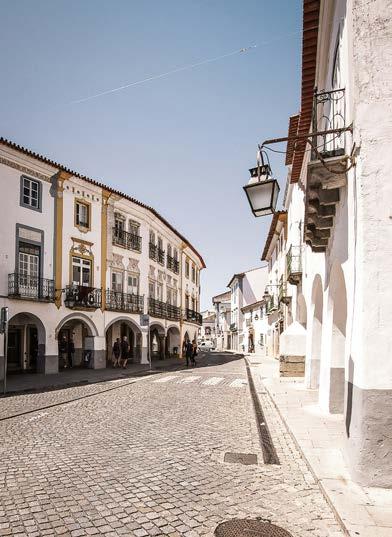
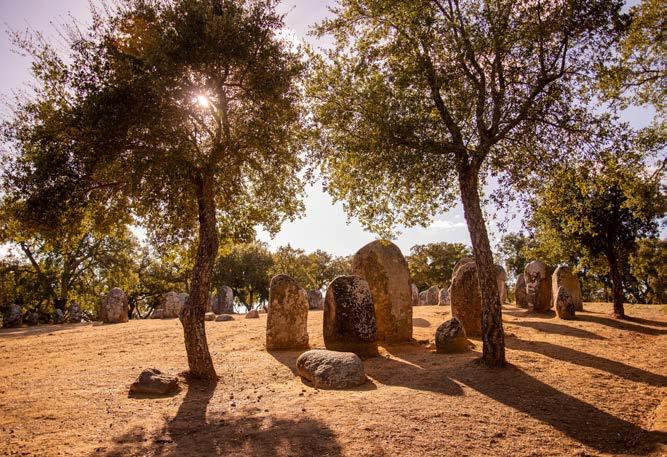
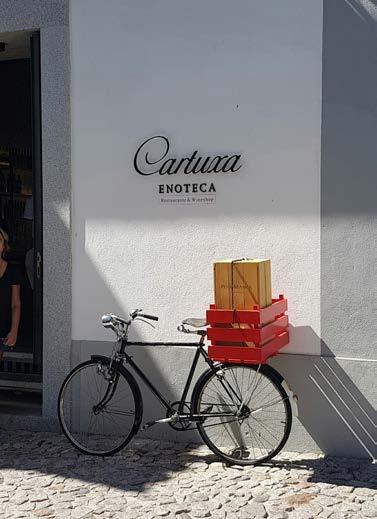
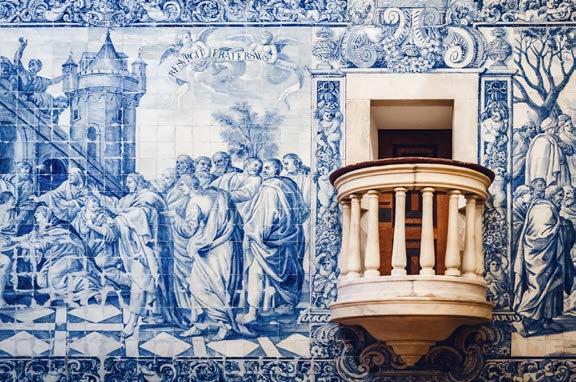
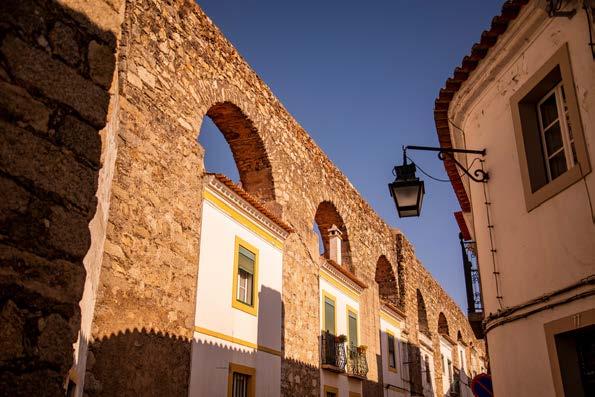
MY FIRST stop wasn’t in Évora itself, but just outside of town –Cromeleque dos Almendres, the largest megalithic complex on the Iberian Peninsula. Think Stonehenge, but Portuguese, wilder, and with less selfiestick action. A winding drive through olive groves and cork trees spat me out near a dusty trailhead. From there, it was a short walk to the site.
And there they stood: 95 granite menhirs, some leaning slightly like tired old men, others standing defiantly upright, forming concentric ovals across a sunbaked clearing. No one knows exactly what they were for – rituals, astronomy, fertility rites, or some prehistoric Sunday market, perhaps. But they’ve been here for over 2,500 years, and that alone boggled my mind.
I tried to imagine life back then – when this entire region was just beginning to stir with human activity. No Roman temples, no tiled rooftops, no cafés serving buttery pastéis. Just hunter-gatherers,
This page clockwise: From the local winery; the pulpit of the baroque Igreja da Misericórdia with its masterpiece of azulejos painted tiles; homes buit into the aquaduct.
Opposite page: Praça do Giraldo
big skies, and rocks that meant something sacred. These stones stood witness to the dawn of organised human expression in Portugal. That’s powerful stuff.
With the stones stirring my imagination, I cruised back toward Évora proper, stopping at a lesserknown but completely worthwhile lookout: Alto de São Bento. It’s a small hill west of town, topped with a few windmills and a whitewashed hermitage, offering one of the best panoramic views of Évora. The city lay before me like a dream. Just 43,000 people live here, but the density of history packed into that low-rise skyline is ridiculous.
I parked and walked into town, instantly charmed by Évora’s vibe. It’s the kind of place where every turn offers a new photo, a new plaque, a new doorway to the past. My next destination: the famous Roman Temple of Évora.
You’ll often hear people call it the Temple of Diana, which makes it sound all the more mystical and classical. Turns out that’s mostly fiction. The whole ‘Diana’ attribution was added in the 17th century when someone tried to jazz up the ruins by linking them to the Roman goddess of the hunt. Cute idea, but no historical evidence backs it up. In reality, the temple was likely dedicated to Emperor Augustus or some other Roman big shot of the time. Still, those 14 granite columns – capped with Corinthian capitals – have held up remarkably well. It’s one of the best-preserved Roman structures on the Iberian Peninsula and feels bizarrely at home in a Portuguese square.
After soaking up some imperial energy, I continued my climb – literally. The Sé Cathedral of Évora, a hulking granite presence in the town’s core, offers the most immersive view of the city if
Évora isn’t flashy. It offers a kind of quiet, confident presence that comes from surviving and thriving through millennia of change.
you’re willing to climb to the roof. I paid the entrance fee, huffed up the spiral stairs, and emerged into one of the best dronelaunching zones I’ve ever found.
Up there, you realise why Évora was built where it was: strategic elevation. The land around is flat for kilometres in every direction, and from the roof you can practically see the history stretching out. Fields, groves, the occasional medieval wall segment… and nothing tall enough to challenge the city’s skyline. It felt like standing on the prow of an ancient ship, surveying the Alentejo sea.
With the drone buzzing above and my legs feeling the stairwell burn, I wandered the old town with renewed appreciation. Évora is the kind of place that rewards slow wandering. Each narrow street seems to offer something new – an azulejo-covered façade, a hidden courtyard, a moment of utter silence broken only by church bells.
I passed the Câmara Municipal (city hall), which happens to be sitting atop another Roman remnant – the ancient Roman Baths. Sadly, the building was under renovation, so no subterranean wanderings for me. But it’s wild to think of municipal workers upstairs, drafting policies, while centuries-old Roman bathing rooms wait quietly below.
By now, I was thoroughly soaked in history and ready for something more grounded – dinner. I returned to the chic, modern hotel I’d checked into earlier (say what you want about heritage, but decent Wi-Fi and soft sheets matter, too) and freshened up for the evening. Tonight’s destination: Café Alentejo, one of those places that locals recommend and never disappoints (969 318 901 / restaurantecafealentejo.com)
The meal? Fantastic! White wine from the region, a rich oxtail stew slow-cooked in red wine, buttery migas (a kind of garlicky bread pudding made with pork fat and herbs), and a spread of sides that left me slightly dazed. Every bite told a story – one of local pride, generations of recipes, and the rich, fertile land surrounding Évora. I waddled back to the hotel in that perfect state of full-bellied contentment.
The next morning started, as all good mornings should, with coffee and pastries. I headed to Café Arcada, a classic establishment right on Praça do Giraldo, the town’s central square. It’s been serving
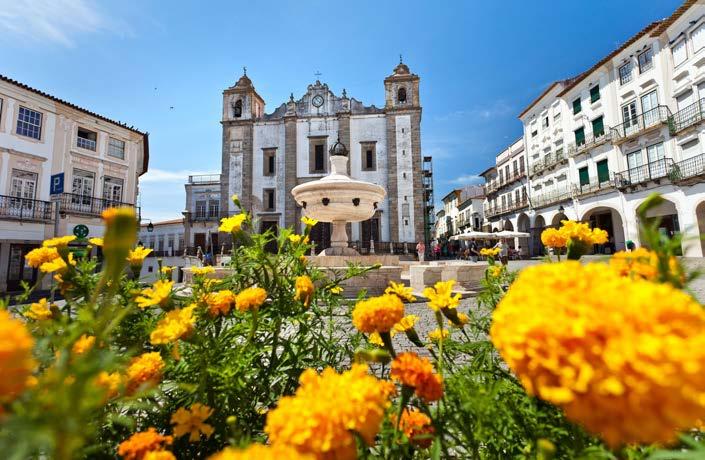
up caffeine and flaky treats since 1942, and there’s something beautifully cinematic about watching the square wake up from one of its outdoor tables.
Praça do Giraldo is more than just a pretty face – it’s been the beating heart of Évora since the 16th century. Once a site of royal proclamations, inquisitions, and markets, today it’s framed by elegant arcades, bustling cafés, and a steady flow of tourists snapping pictures and locals chatting over espresso. At the far end of the square, the Igreja de Santo Antão towers with baroque confidence, reminding you that Évora never does subtle when it comes to architecture.
Between bites of bolo de mel and sips of strong espresso, I thought more about Évora’s legacy. It’s not just the Roman stuff. It’s the layers. You’ve got the Moorish influences tucked into the town’s urban layout, the medieval walls still tracing the city’s perimeter, the aqueduct stretching in from the west, and the university – one of the oldest in Portugal, founded in 1559.

There’s even a chapel made of bones (yes, real human bones), but I’ll save that one for another day.
Évora isn’t flashy. It’s not trying to be trendy or Instagram-perfect. What it offers instead is depth – a kind of quiet, confident presence that comes from surviving and thriving through millennia of change. From Neolithic stone circles to drone-enabled rooftop views, this town embraces every part of its past and continues to welcome new explorers like me.
As I packed my bags and reluctantly loaded the car, I felt like I was leaving a friend behind – one who still had more stories to tell. But that’s the thing about Évora. You never really finish discovering it. You just pause, promise to return, and carry its warmth with you wherever you go.
If you’re planning a trip through Portugal and looking for a place that blends rich history, hearty food, and human scale, you’d be hard-pressed to find anywhere better than Évora.
Until next time....
Nick Robinson of Algarve Addicts has been travelling Portugal – by car, by train, by foot, and even by paddle, for more than two decades and advises newcomers about where and how to live. His YouTube channel, broadened now to cover all regions of Portugal, has more than 30,000 subscribers. Check out algarveaddicts.com – and visit his monthly column right here, in AlgarvePLUS.

CTHIS MONTH WILL SEE PORTUGAL’ S THIRD PARLIAMENTARY ELECTION IN THREE YEARS. BELOW ARE THE PERSONAL REFLECTIONS OF NELSON RAMOS ON THE CAUSES FOR THE POLITICAL CRISIS AND WHY FOREIGN INVESTORS, PARTICULARLY THOSE WHO ARE RESIDENTS, SHOULD ENGAGE IN POLITICAL AFFAIRS, AS IT AFFECTS BOTH THEIR LIVES AND THEIR INVESTMENTS
ORRUPTION in Portugal is not just a political issue; in my opinion it is also cultural, as it is widely tolerated. The rightwing party Chega, whose main slogan is fighting corruption, won only in the Algarve in the last parliamentary elections. The region has the highest percentage of foreign residents and a significant number of naturalized Portuguese citizens, suggesting a different cultural perspective on corruption.
Portugal’s political instability, marked by corruption scandals and governance failures, raises concerns for foreign investors. So, given their economic role, why don’t they involve themselves in the nation’s internal politics? I examined the the political turmoil of the past four years, its impact on governance, and the potential role of resident investors in ensuring a stable business and living environment.
In 2023, Prime Minister António Costa resigned amidst a corruption probe into government contracts for lithium exploration and a green hydrogen initiative. His office was raided, prompting early elections. In 2024, the Social Democratic Party (PSD) under Luís Montenegro faced corruption allegations. His family business, Spinumviva, was accused of benefitting from government contracts. To avoid a parliamentary inquiry, Montenegro triggered a no-confidence vote, leading to another election, which was called by President Marcelo Rebelo de Sousa for 18 May 2025. Frequent elections highlight Portugal’s fragile political landscape and raise investor concerns.
Corruption scandals erode trust in political institutions, weaken accountability, and fuel public discontent. Political uncertainty disrupts economic policies, affecting business operations and foreign investments. Some disruptions occur through direct political decisions, such as the acquisition and renationalization of TAP, which damaged Portugal’s
Foreign investors play a crucial role in Portugal’s economy, contributing to job creation, infrastructure, and technology. Their impact is evident
credibility as a reliable business partner, and cost millions to tax payers, Portuguese and foreign.
Foreign investors play a crucial role in Portugal’s economy, contributing to job creation, infrastructure, and technology. Their impact is evident in sectors like real estate, tourism and renewable energy.
International entrepreneurs contribute largely to Portugal’s growing tech sector, not to speak of local business growth, especially in the Algarve.
However, political instability creates economic uncertainty, as seen in recent changes to the AL (Alojamento Local), NHR (Non-Habitual Resident tax regime), and Golden Visa legislation, which had serious consequences to thousands of foreign investors. Foreign resident investors are not just economic contributors; their quality of life is directly affected by political decisions. Some have voting rights, while others can still lobby and advocate for political stability to protect their long-term investments, ensuring a predictable policy environment.
For those uncomfortable with direct political involvement, alternative strategies include promoting good governance, advocating for ethical business practices and transparency, supporting economic development, investing in community-based initiatives to foster progress, engaging with civil society, and partnering with NGOs to encourage accountability, taking corporate social responsibility, promoting ethical and sustainable business practices, or policy advocacy, and working with chambers of commerce to influence pro-investment policies.
Foreign resident investors, as both economic contributors and community members, have a unique role in promoting transparency and stability. While direct political involvement is sensitive, investors can encourage ethical business practices, support local initiatives, and advocate for fair policies. By fostering accountability and responsible investment, foreign residents contribute to Portugal’s long-term prosperity – after all, this is where they live.

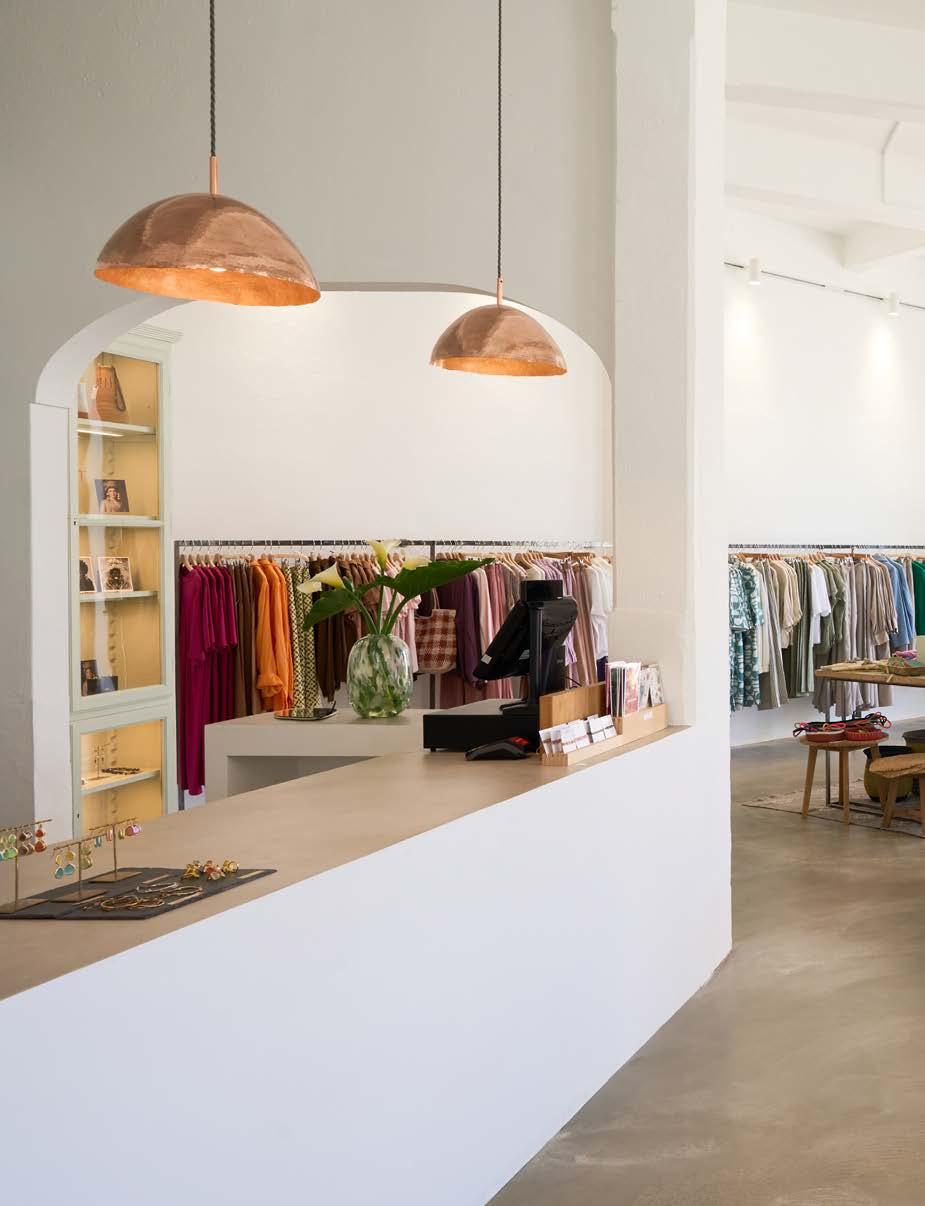
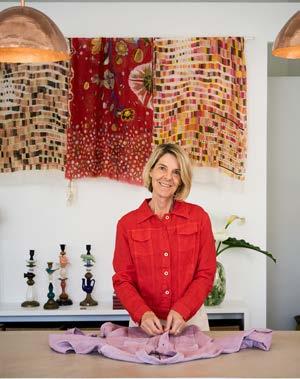
HERE IN THE ALGARVE, CHIC HAS A VERY DIFFERENT MEANING WHEN IT COMES TO DRESSING THE PART. SHARPLYTAILORED SUITS AND SOMBRE COLOURS ARE RELEGATED TO THE BACK OF THE WARDROBE WHILE WE GO WITH THE FLOW AND ALL SHADES OF THE RAINBOW. AND NO ONE DOES IT BETTER THAN MARTINA, WHOSE NEW STORE IN LOUL É MAKES A LAID-BACK INDIVIDUAL STATEMENT
Words: JOANA KATYA
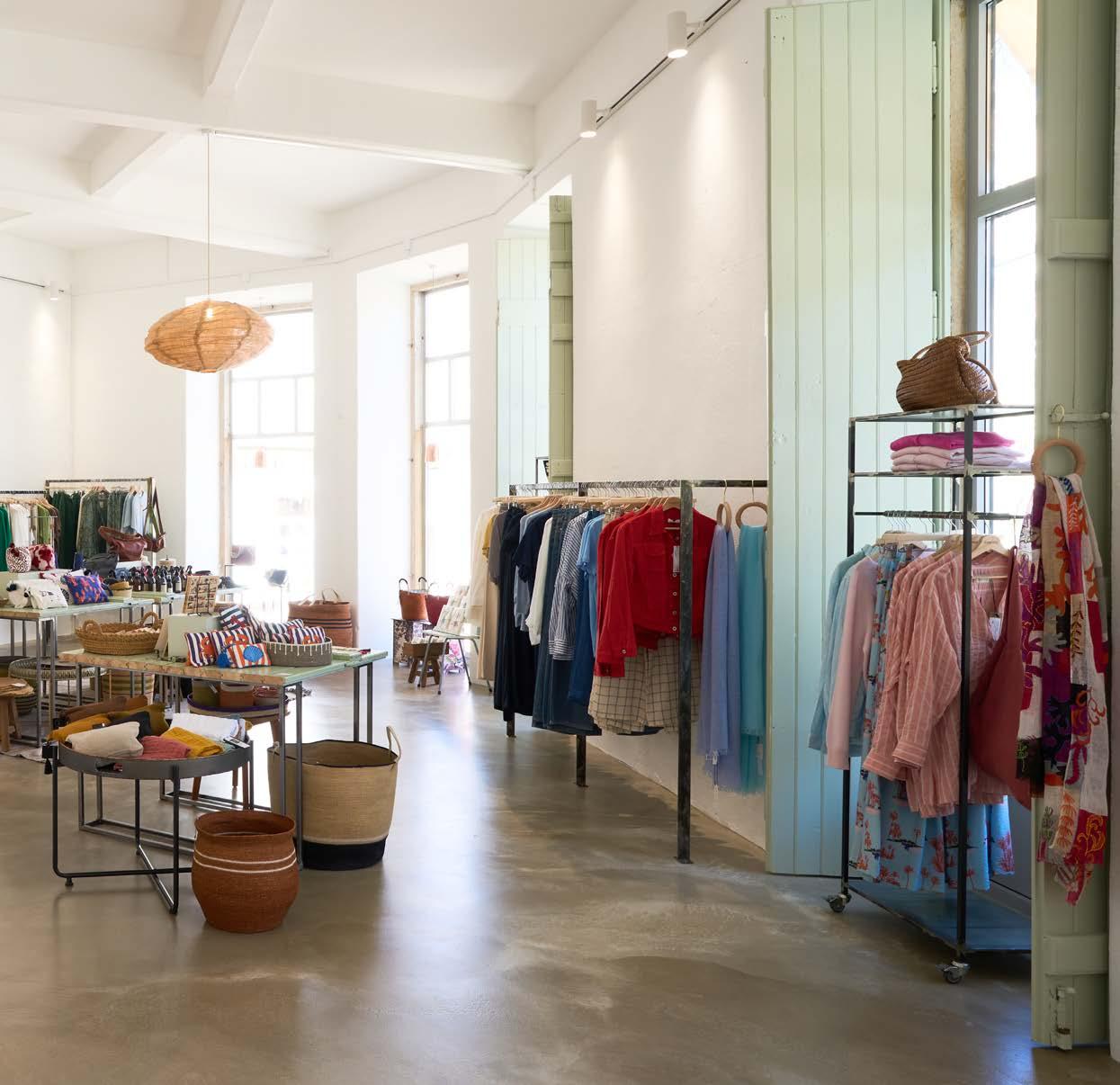
IT IS SOME 20 years since architect Martina Kaiser left the grey skies and cool of the UK to start a new life in the sunshine in southern Portugal. The relaxed sense of freedom and wide-open spaces suited her mindset perfectly, introducing a very different world – one away from the demands and deadlines of city living and client expectations.
Yes, you can take the girl out of the high-powered work environment, but you can’t contain her artistic thinking, and what changes in a new chapter is the direction in which those creativity juices flow.
For Martina, it was the intricacies of jewellery design that first captured her imagination. She studied technique and materials and what was and wasn’t possible, and produced a collection of individual pieces that had a clearly defined personality. Necklaces and earrings, bracelets and rings, mix and match pieces that became her handwriting. And once word got around, there was an audience clamouring to buy into her story.
In 2012, Martina opened a small, inviting atelier-style shop in Loulé’s walking street, Rua das Lojas, where locals and visitors alike tended to look when in search of something that little bit special. And at a time that was already seeing chain stores in the few shopping malls and online buying opportunities leading to a ‘more of the same’ approach, Martina was deemed to be different. Alongside her jewellery, she offered handpicked ceramics, chosen from the artisans whose work she most enjoyed and appreciated, and gift ideas that could not fail to enchant.
Why Loulé? “It was still then a bit of a sleepy market town with traditional shops, but I felt there was something special about it that was ready to blossom,” Martina tells us. In 2017, with a well-earned
reputation for offering adventurous and innovative design pieces, she introduced a small, carefully curated selection of clothing pieces, focusing on natural fabrics and easy-going styling – the sort of things she would wear herself. In just a couple of weeks, every hand-picked item had been sold, and Martina found herself looking further afield and at what the designers she personally liked were producing. And so her reputation for sourcing good-looking stylish casuals was established, and applauded.
Three and a half years later, in April 2021, straight after lockdown, Martina opened her second shop, in the street beside Loulé’s buzzing municipal market and bordering on the old town that had become home to cafés, bars and creative workshops... and a growing audience ready to investigate everything on offer.
The new premises had the position, the space and the light to fast become a dream destination. With Martina’s partner Lars taking charge of the original ceramics boutique down the road, the new shop proved to be a haven for those looking for stylish linen pieces, cool cottons, fine knits, relaxed cuts and a wonderful collection of accessories – embroidered shawls, scarves, bags and belts, and, of course, the signature jewellery with Martina’s handwriting.
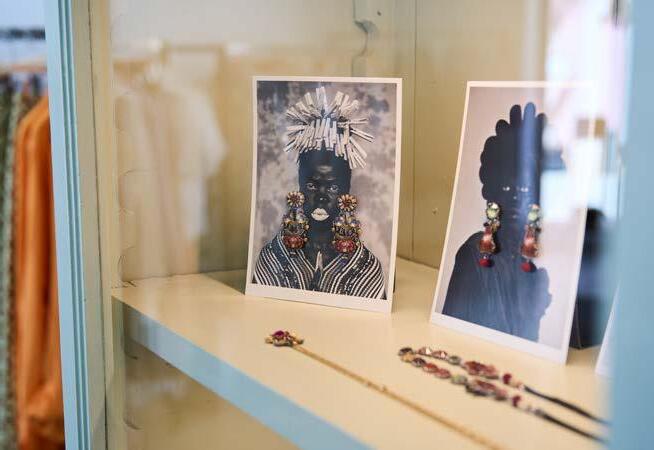
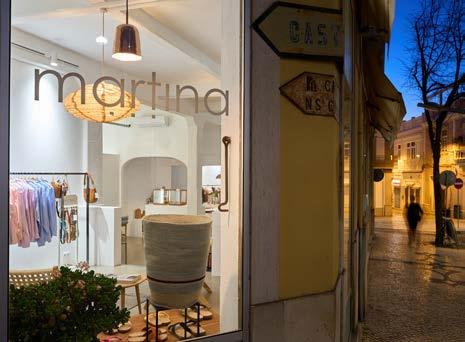
I don’t follow every fashion trend and I don’t do ‘fast fashion’ –that’s not what I am about, nor what my customers want.


Martina’s men’s section includes, shirts, pants and jackets, belts and woven sandals. And there’s room just to sit back and relax
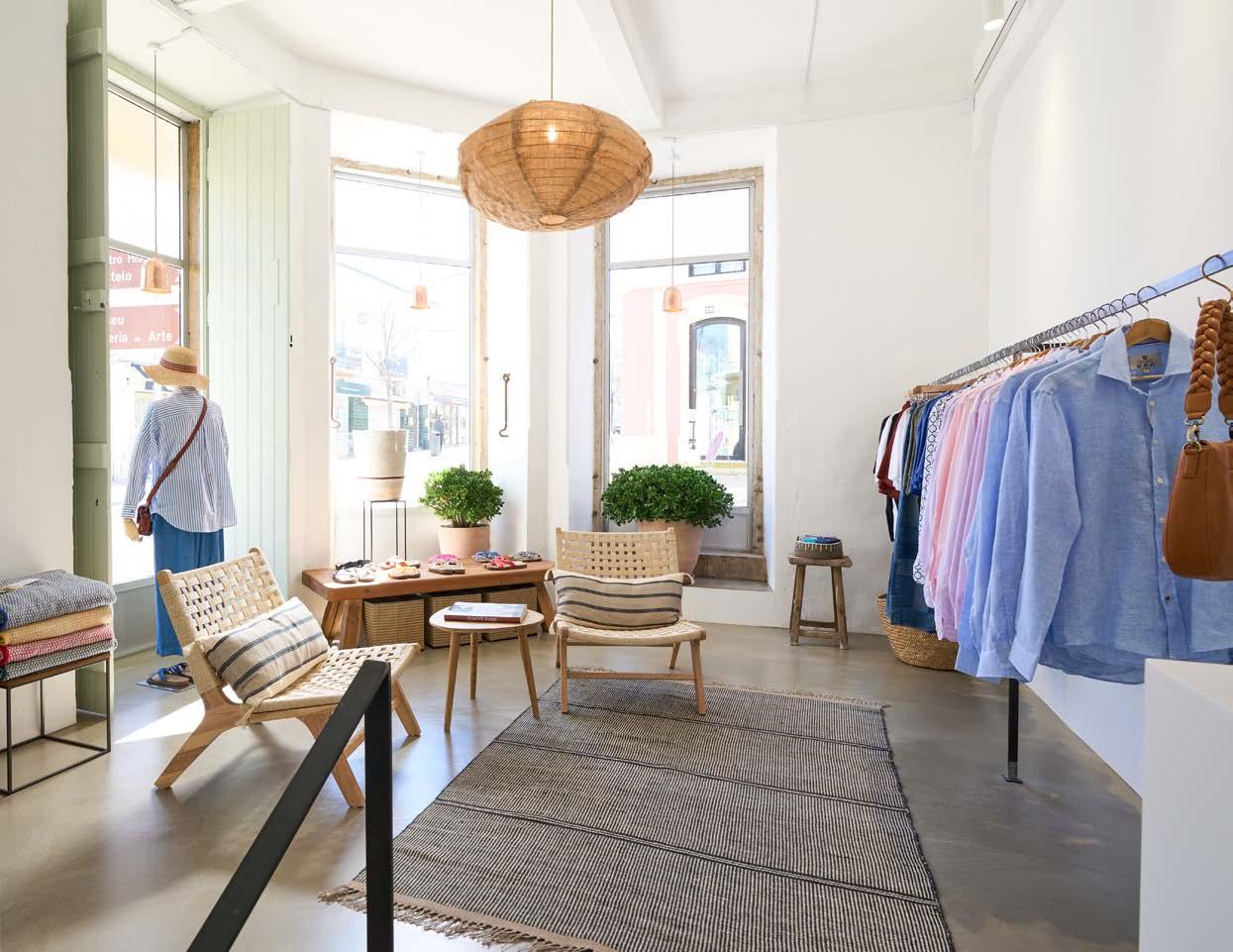
All things new
Was she happy there? Naturally. Thinking of moving? Not at all. Until, that is, the opportunity – or should we say challenge – came up in the shape of the big yellow building down the road. A traditional pronto a vestir for more than 60 years, it had lain empty for one year, and in that time had fallen into a devastating state of disrepair. But that’s the sort of wake-up call Martina and Lars find hard to resist.
It took the couple a long and often gruelling 18 months to see through the decay, to strip the interiors back to bare framework, to plan what could be achieved practically and creatively. And who better to transform a dark, humid and neglected space into a cool, contemporary environment to showcase a selection of very special merchandise. And all this, while running the fashion store beside the market, and the ceramics shop in the walking street carrying brands like Casafina, Costa Nova and Terrafina.
The new store opened in April. It was busy from day one, and continues – no surprise there – to be busy every day of its six-day week. Thirty percent larger than the previous shop, it curves around the corner of Praça da República, at the top of Rua das
Lojas, a few steps from In The Pink and Café Calcinha.
With the freedom to grow the merchandise selection, Martina has introduced a dedicated menswear area (prints, plains and great cuts), enlarged her swimwear selection, and included decorative items and more accessories along with the latest seasonal collections from houses like La Salle, Natalie, Lanius and OmyBag. She also has created more ‘husband space’ for partners to relax while their other half shops.
“Sourcing individual fashion designers, preferably the ones based in Portugal or producing in Portugal, is important to me, and often personal relationships are established as we meet regularly at fairs and fashion shows. I am always on the lookout for new styles, personality-driven brands, artists and designers. And if time allows, I am still designing and creating my own jewellery range, especially earrings and gemstone necklaces which become sought-after pieces.
“It is crucial to me to always meet my ideal of regional, sustainable and fair fashion, which has its price but never fails to deliver the absolute best. I do not follow every fashion trend and I certainly don’t do ‘fast fashion’ – that’s not what I am about, nor what my customers want. Timeless clothing and wearable styles with a twist is my heart-felt merchandise message.”
Visitors to the Viceroy resort in Ombria will see more of Martina’s magic – she curates the in-house store there.
OPEN: Monday to Friday 10h00-18h00, Saturday 10h00–14h00 / T: 964 222 612 IN: @martina.loule
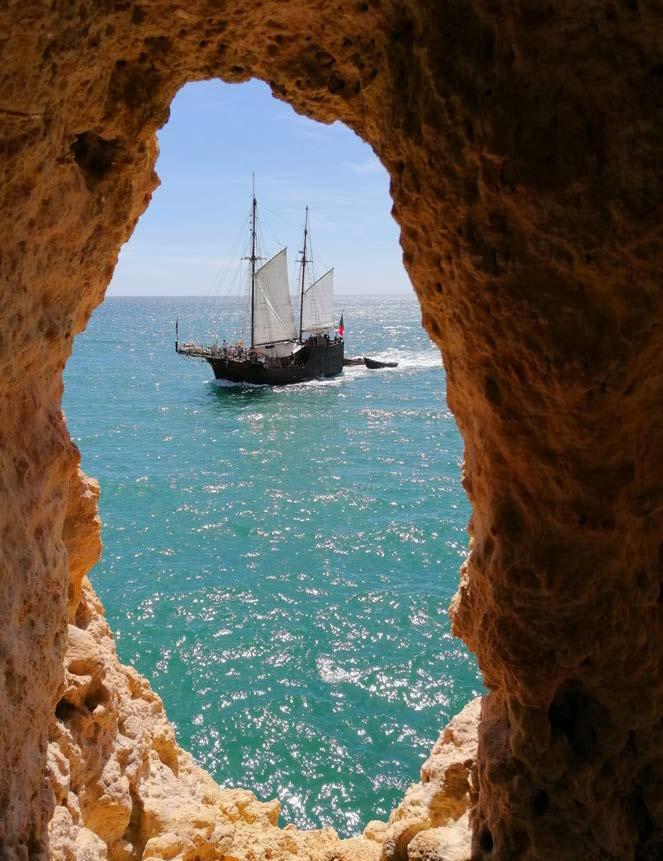
IN OUR DIGITALLY SAVVY SOCIETY, EXPLORING THE WORLD HAS BECOME A WHOLE LOT EASIER, BUT SOMETIMES THE OVERLOAD CAN BE CONFUSING. SO WE’VE DONE THE HOMEWORK FOR YOU AND UNEARTHED SOME OF THE ALGARVE’S TOP-NOTCH TOURS. AND THIS IS JUST PART I!
Words: DEBBIE REYNOLDS

JOÃO MANUEL BARRATO FREITAS, aka Johnny, makes it quite clear that he’s a “proper tour guide and NOT a driver”.
Having studied tourism at Faro University and then becoming a certified tour guide, Johnny most definitely knows his stuff and promises unique experiences for his guests.
“I’m a one-man and two-van operation,” he laughs, “and I promise no two of my tours are ever the same. I will always adapt them depending on what my guests want, which I usually work out within the first half hour of meeting them.”
For this exercise, we’ve chosen his Loulé to Olhão and Faro tour, which offers the perfect mix of culture, history, shopping and eating.
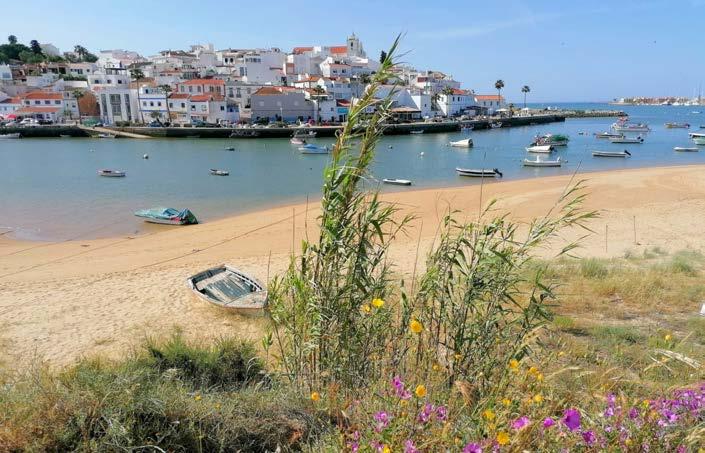
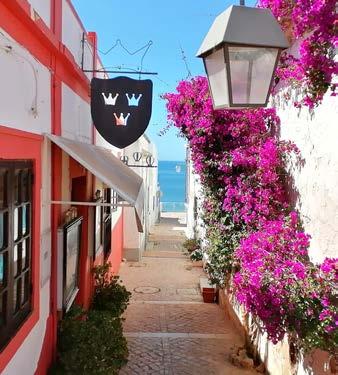
My tours are unique, because while I include some of the area’s highlights, I like to go off the beaten track so that guests get a real experience rather than just ticking a typical tourist box.
If the guests like churches, he starts at Mãe Soberana, the largest Marian sanctuary in the Algarve, which includes a 16th-century hermitage, and a modern temple built in the 20th century. “The sanctuary is one of the most religious places in Portugal and it also has a stunning view over Loulé.”
The next stop is usually the historic Loulé Market where, says Johnny, guests can immerse themselves in the atmosphere, smells and delicious local products, some of which they get to taste. “We then have time to lose ourselves in the old city streets, before heading to the Cubist city of Olhão on the Ria Formosa lagoon.”
Some tour groups choose to have lunch in this authentic Algarvian fishing town, which has enjoyed an amazing regeneration in recent years, and buzzes all year round.
“Or we eat in Faro, but I always give my guests recommendations and never send them to restaurants that I haven’t tried and loved.”
The afternoon usually includes a visit to the 13th-century Faro Cathedral and its bell tower with panoramic views of the Ria Formosa and its barrier islands. “We then go to the Bishop’s Residence to see the
Opposite page: The main shot, taken from Carvoeiro, won João Freitas the Algarve GuidesInterpreters Photography Competition (AGIGARVE), 2023; below: Ferragudo.This page left: Albufeira’s little secrets; below: Pirate Deluxe clients out for a ride
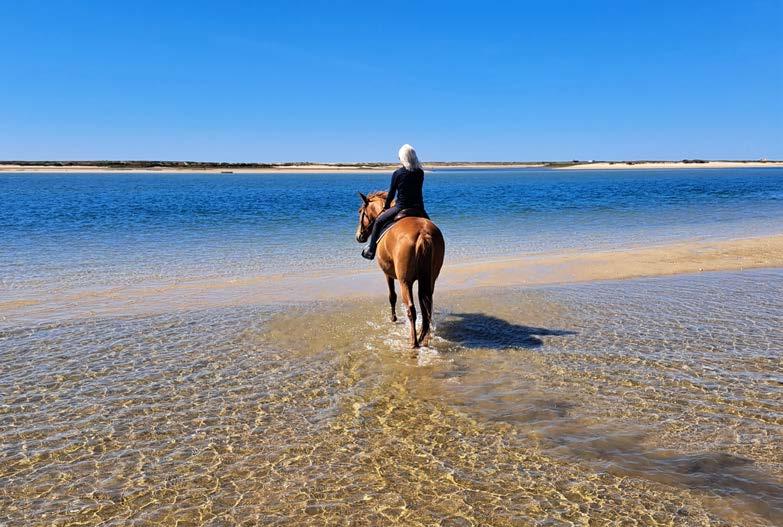
beautiful old azulejos (tiles) so typical of the Algarve.”
Johnny then cleverly gives a “free hour” where guests can shop or explore, before heading home or, if they choose, enjoy a drink at one of Faro’s rooftop bars.
“My tours are unique, because while I include some of the area’s highlights, I like to go off the beaten track so that guests get a real experience rather than just ticking a typical tourist box.”
Johnny considers himself an ambassador for his country, so he pours all his passion into his tours.
“My wife is to blame for this obsession,” he laughs. “It started in 2020 when, after showing some people around, she saw how much I loved it and suggested I made it official.”
Times: All year round, except December when Johnny usually takes some time out.
Cost: All the tours are private and vary depending on the group and individual wants, but you should allow around €100 per person for a full-day tour.
Suitable for: Anyone who is interested in the “real Algarve”.
Contacts: info@johnnystours.com / 966 507 051
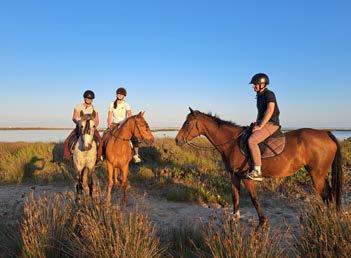
CREATED FIVE YEARS AGO, Pirate Deluxe is an eco-friendly family-run company offering horse tours, yoga lessons, massages and kayak discovery tours of the Ria.
On frequent walks along the salinas in Arroteia, Tavira, I fell in love with a pretty quinta and its friendly horses. My fascination was fueled when I met its owners, Alexandra and Arnaud Lunelli after a friend suggested we try one of Alexandra’s aerial yoga classes.
And, so, I met the horses and found out that Alexandra is also a skilled rider, and avid nature lover.
“My husband and I moved from France to the Algarve eight years ago to settle in the Ria Formosa natural park,”
“Our horses were rescued in the Alentejo, and our aim is to give them the best life possible. Our guests contribute by working with us to improve animal welfare and nature protection in Portugal.”
says Alexandra. “We have always been charmed by this amazing landscape and its ecosystem, so we decided to learn more about it. We were running a luxury B&B in Saint-Emilion, France, so coming back to tourism was kind of natural.”
The horse tours offer the chance to ride along the stunning lagoon in front of Tavira and Armona islands, known for its prolific endemic and migrant bird species.
“We pass by a little typical Portuguese fishing harbour and cross the salinas where we often spot flamingos, egrets, herons, avocets, storks and a whole lot more,” says Alexandra. “I think the beautiful setting and the high-quality, intimate experience make our tours and adventures unique.
“We’ve also done training with the IPMA (Instituto Português do Mar e do Ambiente), the UAlg (Algarve University) and Ciênca Viva to be able to give our guests accurate scientific information about the specific ecosystem of the Ria Formosa, she adds. Another attraction is that the horses are all “rescues” in line with their belief in improving animal welfare in Portugal.
“Our horses were rescued in the Alentejo, and our aim is to give them the
best life possible,” explains Alexandra. “Our guests contribute by working with us to improve animal welfare and nature protection in Portugal.”
Guests have several options. Those who are experienced riders get to enjoy being on horseback in a private, intimate group (there’s a maximum of three riders), while the walking tour with the horses is perfect for families or large groups. Both take two hours.
“There’s also the option of spending the whole day with us where you can do the horse tour in the morning and then kayak in the lagoon in the afternoon to discover secret beaches and the magic of the Ria Formosa.
“We love our special place so much that we’re happy to customise treats for our guests. Once we know what they like, we can adjust the programme.”
Times: All year, except July and August when the horses have their summer holiday.
Cost: Horse-riding €65 and walking with a horse partner €20.
Suitable for: Experienced riders and anyone who can manage a twohour walk.
Contact: info@piratedeluxe.com / 925 477 997

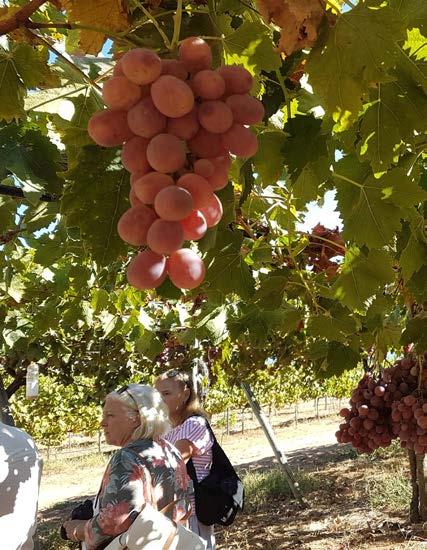
IN NOVEMBER 2015, Michael Guerreiro and Catarina Araújo launched their tour company specialising in nature tours and hiking experiences throughout the Algarve.
“As the founder and main guide here in the Algarve, I’m passionate about sharing the beauty of this region and creating unforgettable experiences for our guests,” says Michael. With one of his interests being wine, experiencing a private wine tour with Michael is a real treat.
“I promise a more intimate and relaxed atmosphere as we explore the world of Algarve wines,” he explains. “While the Algarve is not widely known for its wines, it has a rich and ancient history that dates back to Roman times.”
The tour includes visits to two exceptional local wineries – Quinta do Francês and João Clara – where you taste a selection of their wines but also gain insight into the winemaking process.
“You will learn more about the unique local grape varieties and take in the stunning views of the vineyards and the surrounding Algarve countryside.”
Michael says theirs was one of the first wine tours in the Algarve, and soon became their most popular tour, earning a Viator Certificate of Excellence.
“The way I designed this tour was simple yet meaningful – by forming partnerships with local producers. I


take great pride in building connections between the producers and our visitors. It’s a win-win situation: our guests get to experience the best of Algarve wines, and the local producers benefit from the exposure. I’m happy to say that our clients often leave with bottles of Algarve wine, helping to support the businesses we work with.”
Being a boutique tour company means that Michael can also design the tour to suit his guests’ preferences.
“Some of our guests have requested a full-day experience with a typical lunch in Silves, or an additional winery visit, and we’re always open to tailoring the experience to create the perfect day for you.”
He loves that he has return guests who bring along friends or family to experience

Wine tours with Quimera Travel Experiences have proved to be really popular, so much so that guests return time and time again with friends to share the enjoyment
“You will learn more about the unique local grape varieties and take in the stunning views of the vineyards and the surrounding Algarve countryside.”




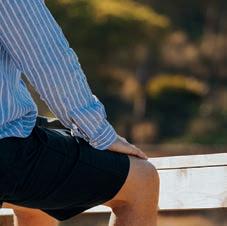
the tour and taste the exceptional wines.
“The feedback I hear most often is that people love the information I share, along with the intimate, personalised atmosphere of the tour.”
One of his stand-out memories was helping a client plan a surprise marriage proposal during the tour.
“I arranged a special spot in the vineyard, and it turned into an unforgettable, magical moment.
Experiences like this are what make this work so incredibly rewarding.”
Times: Tuesday to Friday 14h00–18h00 all year round, except holidays.
Cost: €80 per person, including wine tastings and tapas at the first winery.
Suitable for: Wine lovers of any age. Contacts: quimeratravelexperiences.com / 969 467 275
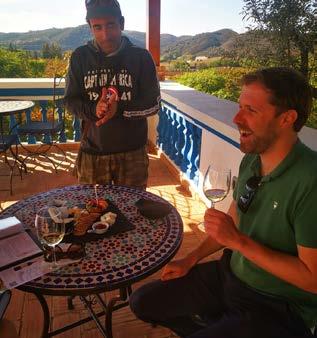
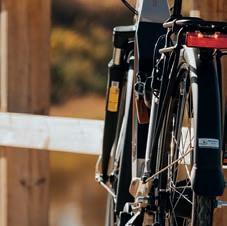



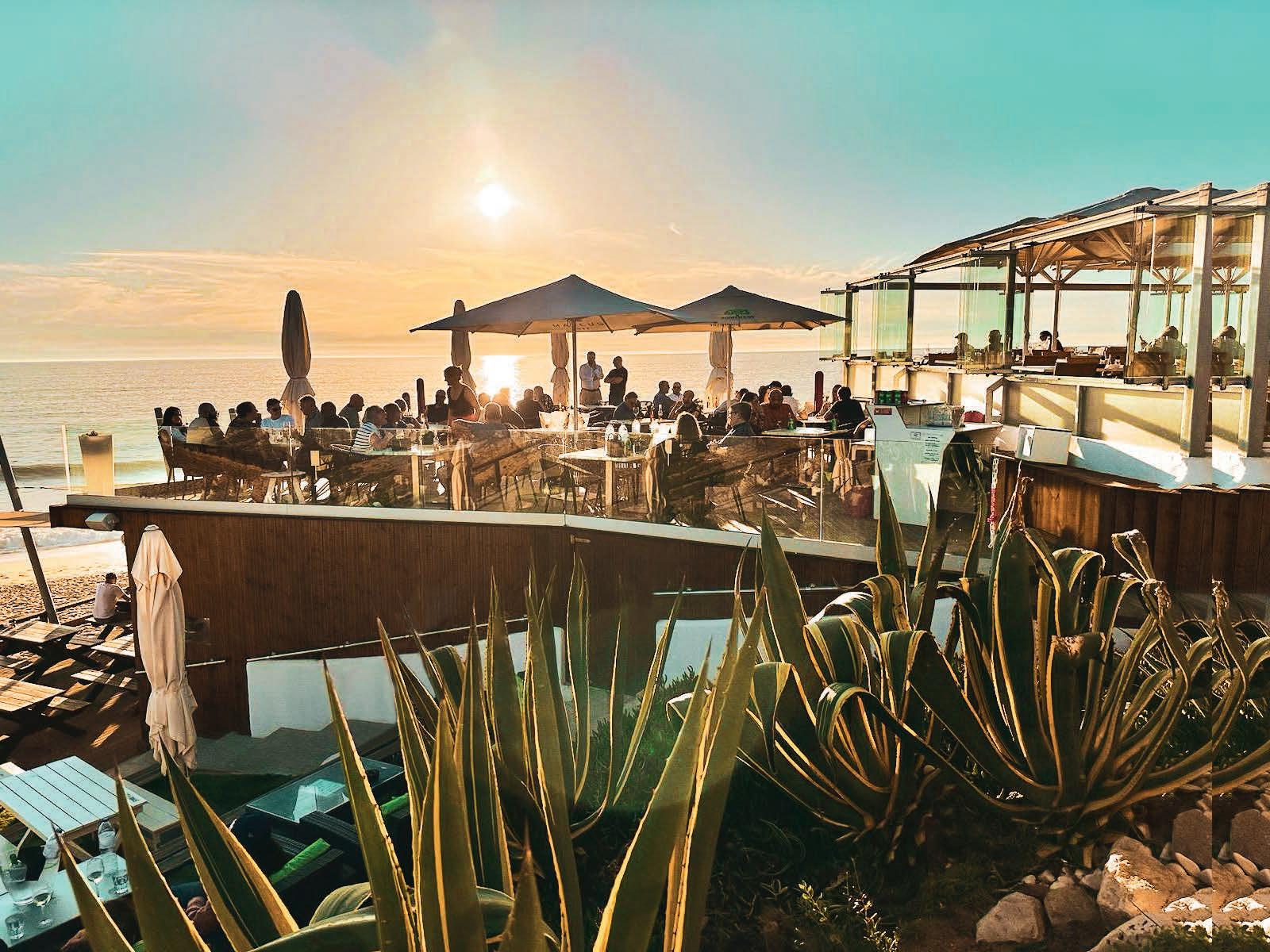
CARCAVELOS IS A RICH AND UNIQUELY PORTUGUESE FORTIFIED WINE STEEPED IN HISTORY, MUCH OF WHICH IS INTERTWINED WITH THE REMARKABLE FIGURE OF THE MARQUIS OF POMBAL WHOSE INFLUENCE HELPED SHAPE NOT JUST THIS WINE, BUT THE ENTIRE LANDSCAPE OF PORTUGUESE VITICULTURE
Words: LÍVIA MOKRI

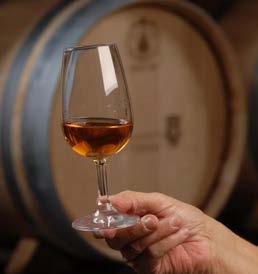
CARCAVELOS WINE dates back to the 15th century when Portugal established itself as a global maritime power through exploration and trade. The region’s unique terroir, blessed with a microclimate that enjoys the Atlantic’s maritime influence, made it ideal for the production of white fortified wine, known then as Eiras. The area’s sandy soil and proximity to the Tagus River created an optimal environment to cultivate grapes that thrive in lower acidity, such as Arinto and Galego Dourado.
Carcavelos became an international celebrity in the wine field featuring at one of the first Christie’s House wine auctions in September 1769, after the Marquis of Pombal, a progressive statesman and visionary, turned his focus to enhancing the quality and marketability of Portugal’s wines. His work in the Douro Valley led to the demarcation of the Port region, and had ripple effects throughout the whole country, including Carcavelos, which became the smallest demarcated region in Portugal and one of the smallest in the world.
While Carcavelos wines became less popular in the 19th century, in recent years local producers and enthusiasts have worked diligently to revive the old vineyards and production techniques, breathing new life into this historic wine. With increasing numbers of tourists eager to sample Portugal’s rich wine heritage, wineries are re-establishing their presence in the market, and storytelling around Carcavelos is re-establishing its allure. The hope is to bring this fortified wine back into the limelight, where it rightfully belongs.

Born Sebastião José de Carvalho e Melo in 1699, Marquês de Pombal rose to prominence in the mid-18th century, serving as the Prime Minister of Portugal under King José I. His leadership came at a time of great upheaval, particularly following the devastating Lisbon earthquake of 1755. Pombal took bold steps to modernise the country, focusing on commerce, education, and the arts, while also emphasising the importance of the wine industry—a chief contributor to the national economy.
One of Pombal’s significant contributions was the introduction of the first formal classification of quality wines, which laid the groundwork for what would become the modern Denominação de Origem Controlada (DOC) classification system, identifying and endorsing regions that produced high-quality wines, elevating Portugal’s viniculture on the European stage.
The Palace of Marquês of Pombal is located in the Historic Centre of Oeiras. Built under the supervision of the Hungarian architect Carlos Mardel in the second half of the 18th century, the palace served as the official residence of Sebastião José de Carvalho e Melo, also known as the Count of Oeiras. The palace and gardens boast rare and wonderful architectural and artistic elements. They were classified as a National Monument in 1953. The Oeiras City Council has invested considerable funds in recent decades in the preservation and maintenance of the existing vineyard in the old Quinta, in the planting of new areas and the restoration of buildings.
The wine cellar of the Palace of the Marquis of Pombal played a major role in the development of the region, where one of the most traditional wines in Portugal is produced.
Characteristics of Carcavelos wine
Carcavelos wines are primarily known for their distinct characteristics; the blend typically incorporates traditional Portuguese grape varieties like Castelão, Preto Martinho, Galego Dourado, Ratinho and Arinto (Pedernã). What distinguishes Carcavelos from other fortified wines, such as Port or Madeira, is its particular production method.
In addition to the grape varieties, the clay-limestone soil, the proximity to the sea and the orientation of the slopes allow for a daily and intimate relationship with the sea. Every night, the sea enters the land and bathes the vineyards, bringing humidity and salts that give this wine a unique character. During fermentation, Lourinhã’s famous brandy is added to the wine to preserve some of the natural sugars. This process results in a honey-coloured sweet wine with an alcohol content typically between 17-20%.
Carcavelos must be aged in Portuguese and French oak barrels for an average period of 7-15 years, then, for six months in bottle before it can be released. This oxidative ageing process helps to develop complex flavours, which add layers of rich aromas and tastes that evoke dried apricots, candied orange peel, nuts, and subtle hints of honey, and a backdrop of spices.
This wine demonstrates extremely high-quality standards and, together with the wines of Port, Madeira and Moscatel de Setúbal, is part of the exclusive group of Portuguese fortified wines, and is considered by numerous experts to be one of the best Portuguese aperitifs and an excellent digestive.
Villa Oeiras 15 Years by Villa Oeiras
Velvety body and elegant acidity is well matched with sweetness. The pronounced intensity with aromas of dried fruits, spices, tobacco and toffee. The palate is semisweet, with a persistent finish. garrafeiratiopepe.pt/en/loja/garrafeira-2/ espirituosos-garrafeira-2/licores-2/vinhogeneroso-carcavelos-villao-eiras-15anos-2/
Quinta dos Pesos – Carcavelos – 1995 by Quinta dos Pesos
A blend of red and white grapes, this wine boasts a beautiful topaz colour and complex aromas of dried fruits, spices, and nuts. The palate is fresh and elegant, with notes of wood. With a long, persistent finish and lively acidity, this one is a true delight. grandesescolhas.com/pesquisa-de-vinhos/ quinta-dos-pesos/
Quinta da Bela Vista Carcavelos 80 years by Companhia Agricola do Sanguinhal
Intense notes of spices, almonds and hazelnuts, wrapped in a smooth and pleasant finish and a remarkable acidity. Velvety with a caramelised flavour and notes of dried figs, raisins and some persistent smoke. A full-bodied wine with a good balance between its structure and a remarkable final acidity. portugalvineyards.com/en/carcavelos/9973quinta-da-bela-vista-carcavelos-80years-5602507030044.html
Carcavelos Última Reserva by Quinta do Barão
Produced from the region's traditional grape varieties, such as Espadeiro, Galego Dourado, Negra Mole and Trincadeira, this wine has an 18% alcohol content and extraordinary depth. On the nose, it reveals a complex and enveloping bouquet, with notes of resinous wood, vanilla, and candied fruits. In the mouth, its semi-dry profile perfectly balances delicate sweetness with vibrant acidity, providing a long and memorable finish. garrafeiraestadodalma.pt/en/149carcavelos/26-001070.html
Carcavelos by Quinta Da Ribeira De Caparide
From one of the most important historic farms in Cascais, this is a very interesting Carcavelos. On the nose, aromas of dried fruits, coffee, spices, candied orange peel. On the palate, the alcohol takes centre stage with minerality and liqueur dominating. garrafeiraspedro.pt/pt/450-moscateis-abafados/80015719-vinho-de-carcavelosquinta-da-ribeira-de-caparide-75cl.html






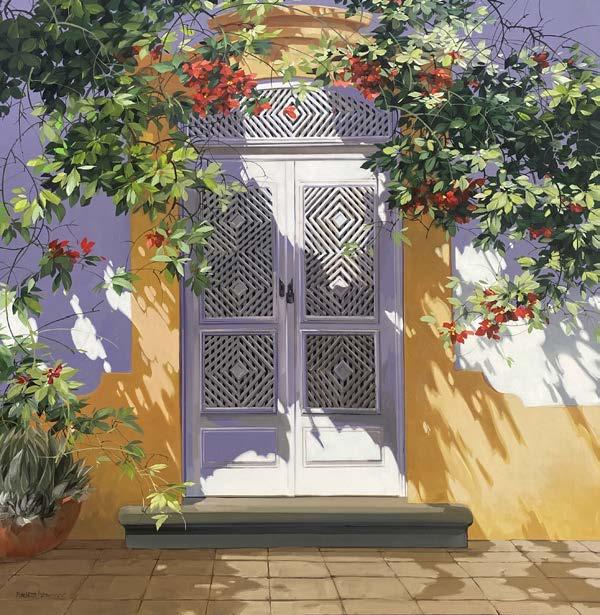
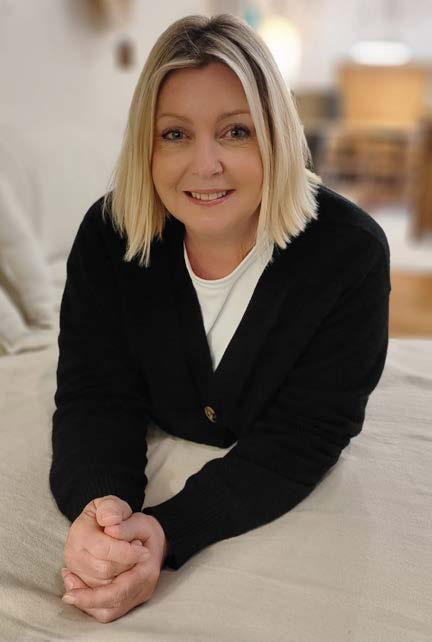
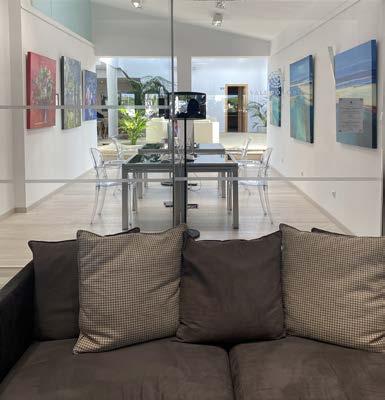
TAVIRA D ’ ARTES HAS LONG BEEN REGARDED AS ONE OF THE MOST INTERESTING AND INNOVATIVE GALLERIES IN THE ALGARVE. MASTERMINDED BY OWNER KAREN D ’ OLIVEIRA, HERSELF A RESPECTED ARTIST, THE BUSINESS HAS BLOSSOMED AND NOW HAS A SECOND HOME, IN VALE DO LOBO, WHICH IS ATTRACTING A NEW AUDIENCE
Words: JO Ã O EDUARDO
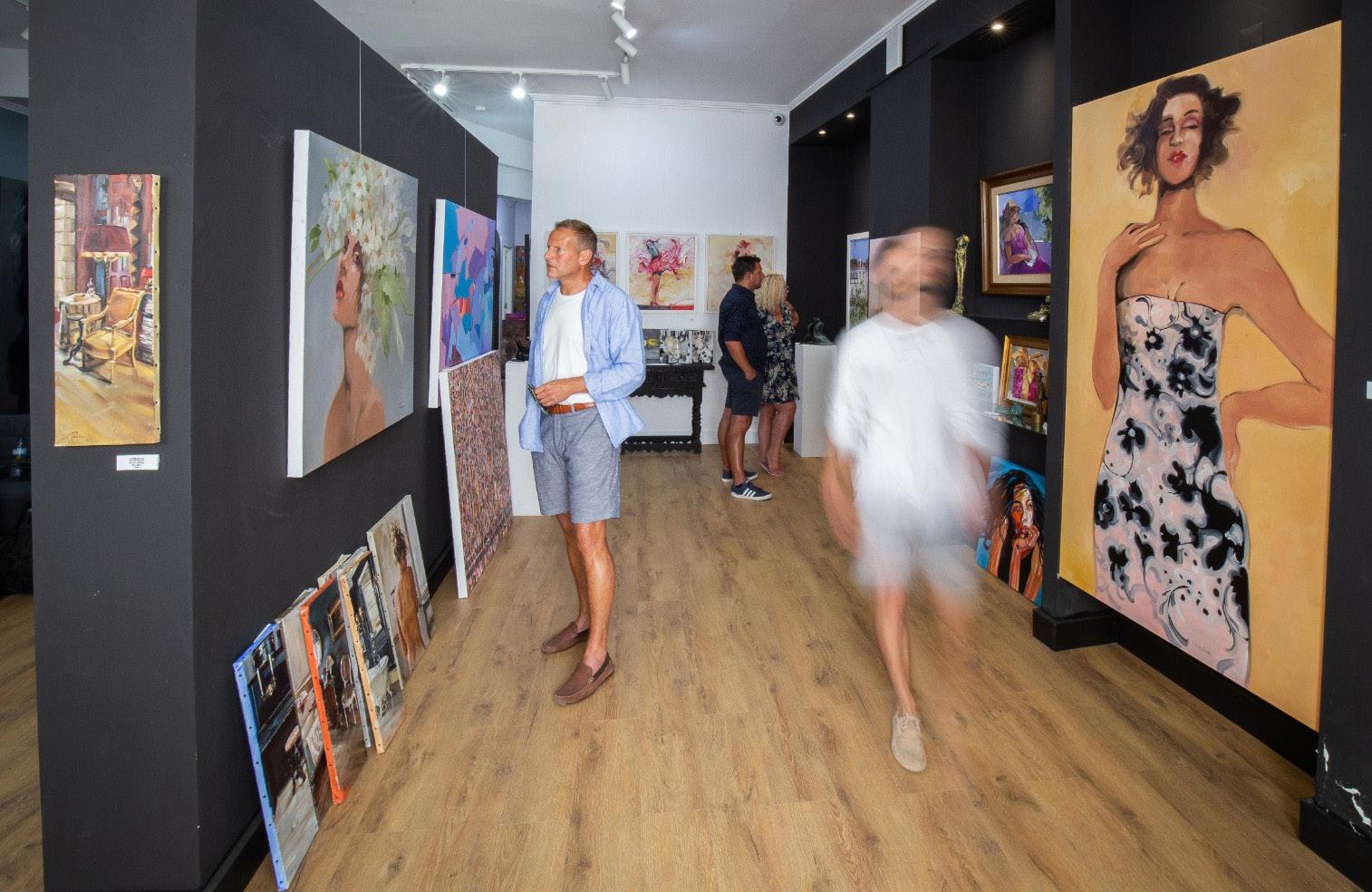
KAREN D’OLIVEIRA, a Middlesborough girl, arrived here in1986, close to 40 years ago and, as luck would have it, met a man who was to become her husband on her second day in the Algarve. An unplanned, not even considered, life-changing event, the couple settled in the East Algarve, where Karen went on to work as a holiday representative.
But that was not enough in terms of a career for the girl who loved to paint. “I am one of five sisters whose childhood was immersed in arts and crafts. Our house always looked like a scene from Pride and Prejudice,” she says.
But painting, as a skill and a learned profession, came later when she met the artist Fonseca Martins who showed her different techniques with oils which is the medium she always uses today.
Karen opened her first gallery in Tavira in 2015. “I had been representing other artists in other galleries very much for the sheer pleasure of it, before realising that I could do this myself with my own space. That’s when I took the all-change leap,” she recalls.
“Running a gallery and discovering new talents fast overtook any other interests, including time I had previously dedicated to my own painting. Yes, I still paint whenever I get the chance, but running a gallery and its development has been my priority.

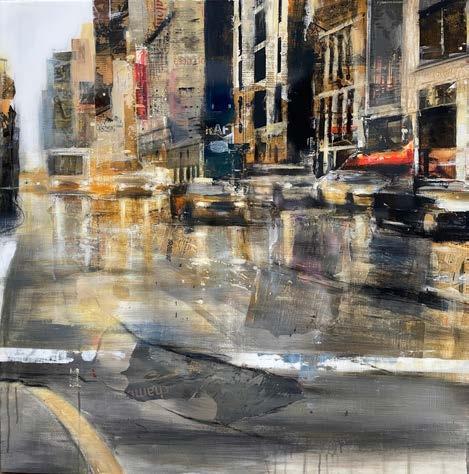

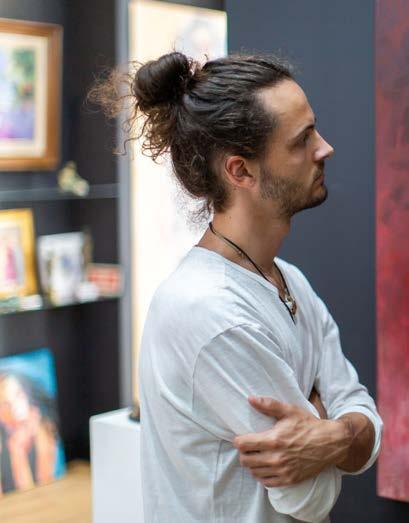
A particular client bought 24 paintings from one artist, which is amazing, but people buying new houses have been known to purchase up to 16 works in one go

“Everybody, including family, told me at the start that I was crazy to go the gallery route as it can be a business with massive risk and multiple closures; I had to fight hard to follow my beliefs. I started with a small space in Tavira with just a few artists and slowly but surely, built up the roster of names I represented, and truly believed in.
“The success of my first space surprised everyone, not in the least me. I was reaching the right artists and, importantly, the right audience, and the confidence that instilled in me led to a bigger gallery – this one near the Roman Bridge – and the option of working with more, highly-respected names.”
Today, Tavira d’Artes represent 30 international names – permanent resident artists – in the gallery, and the client base is faithful, returning time and time again and

bringing friends and family to see new works on display. “I always choose the paintings to be exhibited in the gallery,” Karen explains. “I never let the artists bring in their whole collection. I pick what I believe is the absolute best – those paintings that have commercial as well as aesthetic appeal. And I have my own studio in the Tavira gallery and try to pick up my brush whenever I can.”
Tavira currently has around 40 works hanging that are changed or replaced weekly as new, handpicked pieces arrive. It is a permanent exhibition space, and a destination for local collectors, foreign residents and visitors alike.
A lot of tourists happen in by chance, Karen explains: “We get customers who were not expecting to buy art whilst on holiday, but when they find a piece they love they can’t resist. We arrange all the shipping for them, from the gallery to homes – and businesses – across the world. The prices of our paintings can start from as little as €80 and go up to €8,000.
Tavira d’Artes is something of a hidden gem. Up a quaint little side street off the river front, the gallery has a small,
unprepossessing entrance. Those who are new to the area don’t expect to discover the quality of the art it represents and they always comment on their surprise and delight.
More space, more names

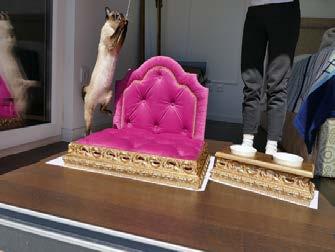
Vale do Lobo is another story, one where many exhibitions will be staged – the first this month, opening on 8 May, with works by Fonseca Martins and Pedro Rodriguez. In July, the work of Magdalena Morey and Antonio Barahona will go on show, and in October, Andrés Moreno and Dani Franco.
We asked Karen if representation in the Golden Triangle has been the focus of her long-term plan. “I’ve been thinking about opening a second gallery for some time but always imagined it in the East Algarve area. But when the opportunity of creating a gallery in Vale do Lobo Shopping came about, it seemed the perfect fit. And unlike Tavira, which is small and intimate, Vale do Lobo offers not only the gallery area but the owners’ lounge, the reception area, and the Spa area. That’s a considerable amount of space and it means getting noticed by the big audience that passes through different areas of the complex.
“It is a different audience, too, which is especially interesting for us,” says Karen. Our clientele in the new gallery is made up mainly of foreign residents from a wide surrounding area, and, of course, new house buyers to whom the appeal of superior traditional and contemporary properties is so appealing. Many home purchasers bring in their interior designers to discuss their preferred pieces of art; it’s such a personal thing, and decorators often need to work around those choices.
Currently, Karen has introduced eight artists and 32 works into the Vale do Lobo gallery but will gradually widen the offering to include others, and more diverse artworks. “One particular client has bought 24 paintings from one artist, which is amazing, but people buying new houses have been known to purchase up to 16 works in one go!”

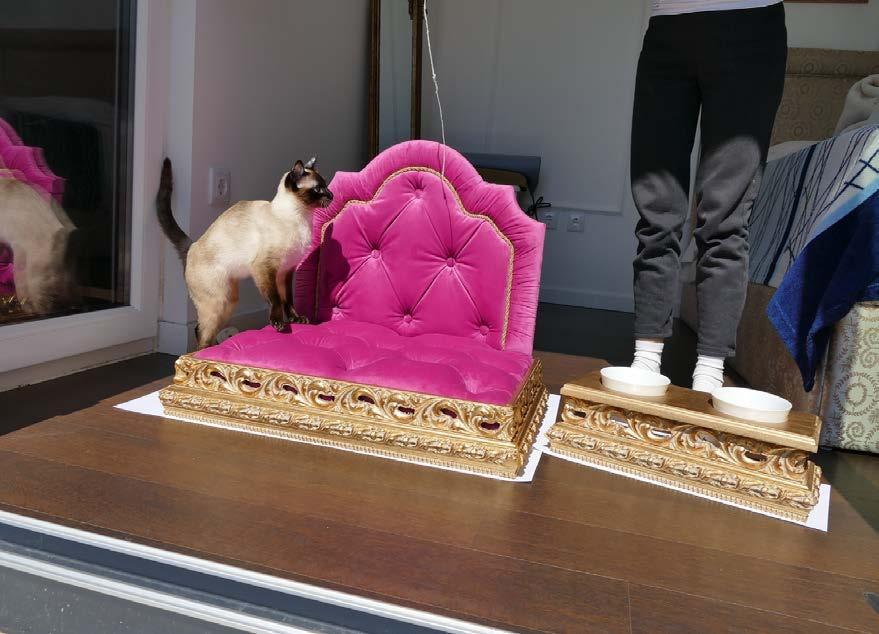
WANT YOUR POOCH OR COOL CAT TO LIVE IN STYLE, AS WELL AS COMFORT? DISCOVER APOSENTIS (...) THE MOST GLORIOUSLY EXTRAVAGANT BEDS, AND EVEN LITTLE BEDSIDE TABLES TO HOLD FOOD AND DRINK FOR THE PETS. THERE ARE INCREDIBLE COLOURS, IN QUILTED VELVETS, PRINT AND PLAIN MIXES - BUT YOU GET TO CHOOSE AS EVERY PIECE IS BESPOKE.
SHOP ONLINE AT APOSENTIS.COM - WORDS BY ALGARVE PLUS MAGAZINE




To aid the decision-making process, clients can take several works of art home for the weekend to select the exact pieces for each setting, and special commissions can be accepted. Works in Vale do Lobo are priced between €300 and €15,000.
TAVIRA D'ARTES: Tuesday to Friday, 11h00–18h00; Saturday 11h00–13h00
VALE DO LOBO D ’ ARTES : Tuesday to Saturday, 10h00–18h00 T: 962 012 111
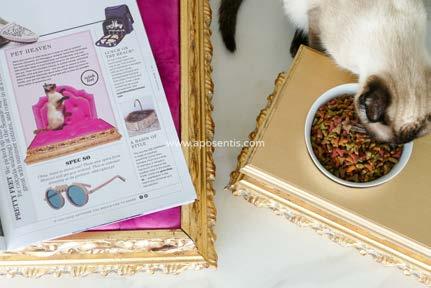





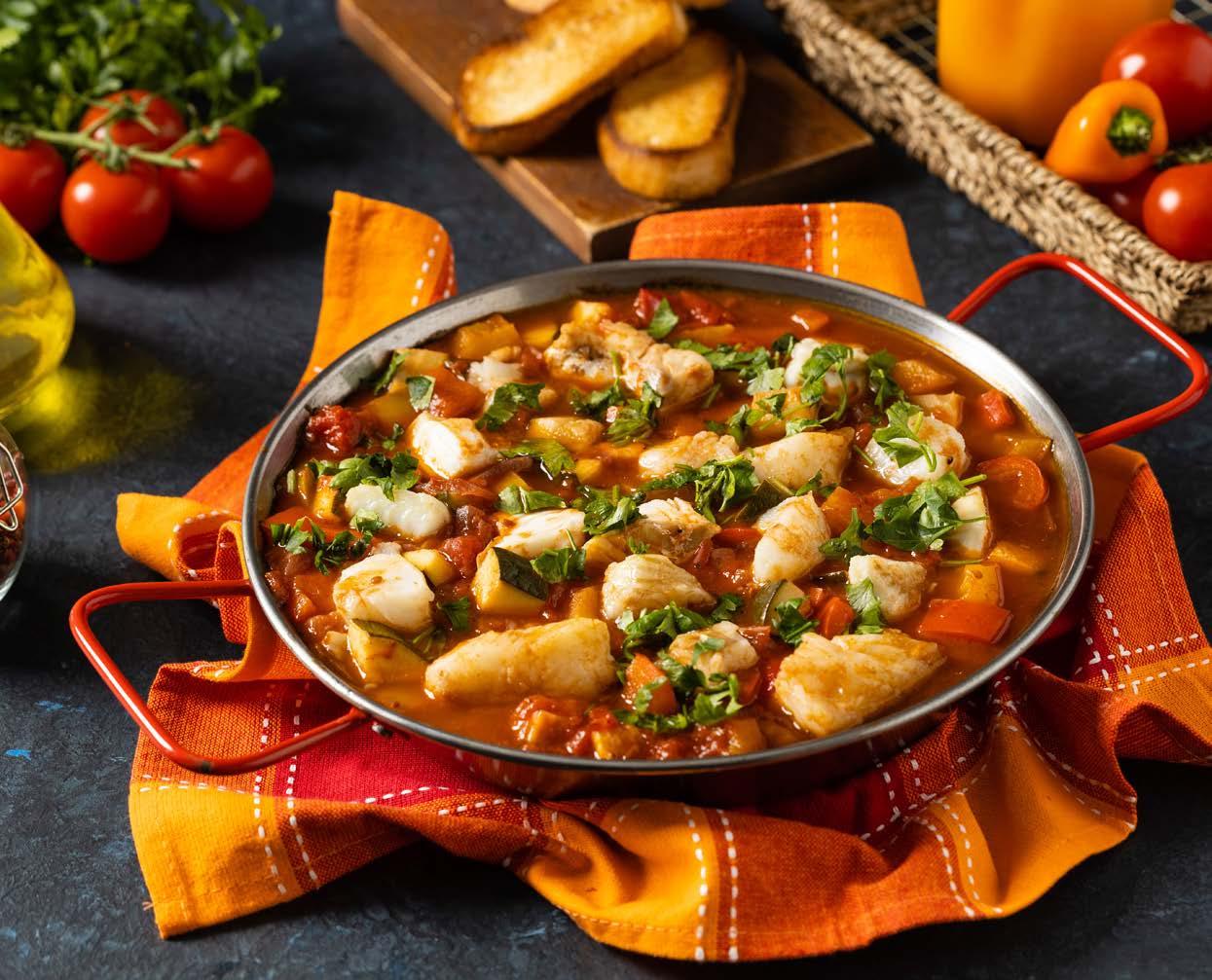
ONE OF THE BEST WAYS TO UNCOVER PORTUGAL ’ S RICH HISTORY AND CULTURE IS BY EATING YOUR WAY THROUGH ITS REGIONS, KNOWING THAT EVERY BITE TELLS A STORY.
FROM THE NORTH ’ S RUSTIC, HEARTY, MEAT-BASED DISHES TO THE SOUTH ’ S SEAFOODCENTRIC, MEDITERRANEAN-INSPIRED CREATIONS – AND OVER 200 TYPES OF PASTRIES –PORTUGUESE CUISINE REFLECTS CENTURIES OF ADAPTATION AND CREATIVITY
Words: CHRISTINA MORENO

Opposite page: Caldeirada de Peixe, a fish stew popular in the Centre region of Portugal. This page: The high-priced and highly-prized percebes, goose barnacles
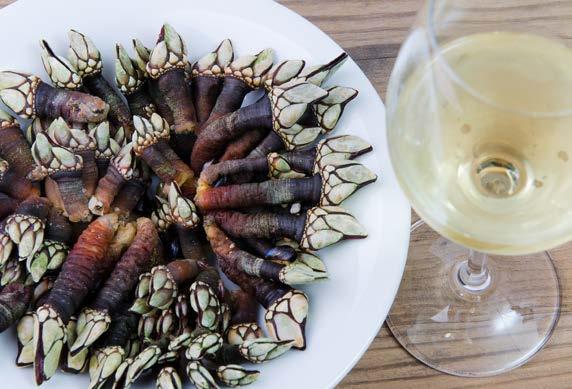
blends local traditions with historical influences from the Romans, Moors, and explorers of the Age of Discovery. The Romans introduced wheat cultivation, replacing acorn bread, and pioneered preservation techniques like salting and drying fish. The Moors brought almonds, citrus fruits, figs, and dates, along with spices like ginger and cinnamon. They also introduced sugarcane, and culinary techniques like pickling (olives), deep-frying, and stewing, inspiring one-pot meals such as cataplana and açorda. During the Age of Exploration, Portuguese sailors integrated codfish into the national diet and brought back exotic ingredients like chilli peppers and tempura from their colonies. Each influence has left an indelible mark on Portugal’s culinary identity.
We’ve curated a list of some of Portugal’s tasty treasures. Whether you’re a seasoned foodie or just starting to explore, we hope to inspire some cravings.
Rustic, hearty and meat based Feijoada à Transmontana (Trás-osMontes): Bean stew with pork and beef.
Posta Mirandesa (Trás-os-Montes): Beef steak seasoned with salt and grilled over fire.
Butelo com Casulas (Trás-os-Montes): Smoked pork with beans.
Papas de Sarrabulho (Minho): A dish made with potatoes, bread and blood sausage. Caldo Verde (Minho): Soup of potatoes and greens (such as kale).
Francesinha (Porto): Sandwich with layers of toasted bread and assorted hot meats such as steak, linguiça, wet-cured ham and topped with melted cheese.
Tripas à Moda do Porto (Porto): Tripe stew.
A mixture of land, river and sea Caldeirada de Peixe (Ribatejo): A fish stew served with potatoes and vegetables. Amêijoas à Bulhão Pato (Lisbon): Clams, traditionally cooked with only coriander, garlic, olive oil and lemon juice.
Ensopado de Borrego (Ribatejo): A lamb stew, often served with bread and potatoes, and known for its rich and tasty broth . Chanfana (Beira Litoral): Goat meat cooked in red wine, with paprika.
Leitão à Bairrada (Beira Litoral): Roasted suckling pig, known for its crispy skin and tender meat. Typically served with batatas fritas (fries) and orange slices.
Cozido à Portuguesa, a hearty stew, is mainly eaten in winter. While its exact origins remain unclear, it has become an integral part of Portuguese culinary heritage, another one with regional variations throughout the country. In the North, it’s a blend of meats like chicken and pork, often paired with oven-baked rice, while Central Portugal am and beans, the Alentejo mostly uses mostly different types of pork with chickpeas, and in the Algarve, there is a flavour twist with sweet potatoes and mint. In Madeira, the cozido is served on bread and garnished with mint, but perhaps the most intriguing, on São Miguel Island in the Azores, the cozido is cooked underground, absorbing the earthy flavours of volcanic minerals.
While the ‘1001 ways to prepare bacalhau’ may be an exaggeration, the diversity of recipes across Portugal is truly remarkable. Here we consume an impressive 100,000 tons of salted cod annually, accounting for 20% of the world’s total, with around 70% imported from Norway. On average, each Portuguese person consumes almost 10 kilograms of cod per year.
Queijo de Serra da Estrela (Beira Alta): Known for its creamy texture and rich flavour, this cheese is made from sheep’s milk and is often served as a dessert.
Queijo de Azeitão (Setúbal): A semi-soft cheese with a buttery paste, made from sheep’s milk and coagulated with thistle flowers.
Queijo de Évora (Alto Alentejo): Made from Merina Branca sheep’s milk, this cheese has a slightly acidic flavor and is often preserved in olive oil.
Queijo de Serpa (Alentejo): A cured cheese with a strong aroma and spicy flavour produced from sheep’s milk.
Sometimes costings as much as €100 a kilo, percebes – goose barnacles – are a sought-after delicacy primarily sold along the Algarve coast, particularly around Sagres and Vila do Bispo. The high price is a reflection of the dangerous harvesting process required to get them from slippery, hard to reach coastal areas with strong Atlantic waves.
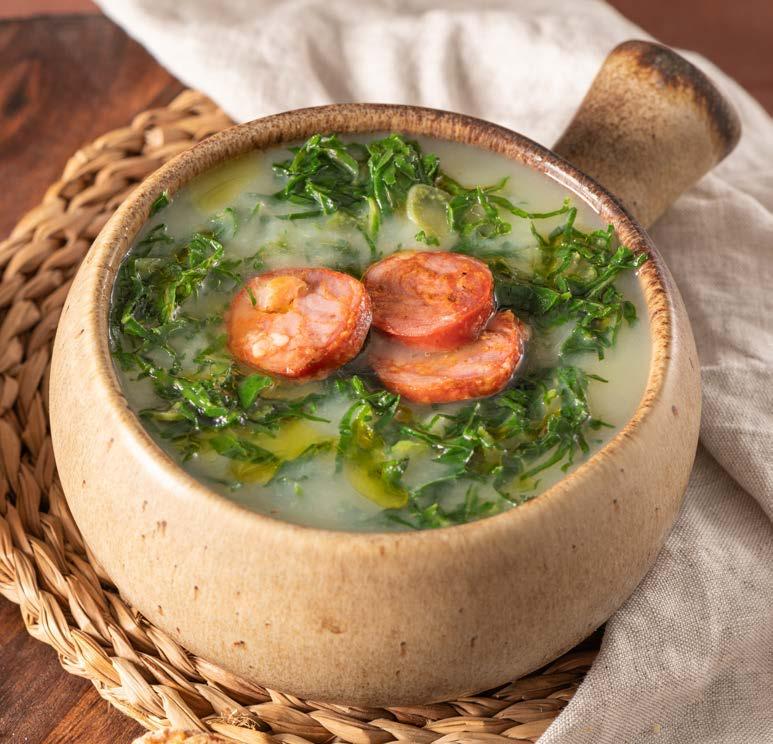
Tigelada (Beira Baixa): Baked in a ceramic bowl in a wood-fired oven, this mixture of eggs, milk, flour, sugar, lemon, and a pinch of salt might surprise you in its delicious simplicity.
ADVENTURER’S ALERT: Have you tried Maranho from Beira Litoral? It’s a sausage made from the stomach of a goat or sheep, filled with a blend of goat or sheep meat, smoked delicacies, rice, and aromatic herbs, mainly mint.
The famous sopa de pedra/stone soup In the heart of Portugal’s Ribatejo region, there is a city named Almeirim that is renowned for its legendary stone soup. It is said that long ago, a poor and hungry friar was passing through and because he was too proud to ask for food, he came up with a brilliant idea. He asked the villagers for a large pot and told them he was going to make a stone soup. After filling the pot with water with a clean, smooth stone inside, curious villagers started gathering around to see what kind of strange soup he was making. It was then that the friar casually mentioned how the soup might taste a bit better with some added ingredients. To his delight, one by one, villagers started contributing items like garlic, onions, beans, potatoes, mixed vegetables and even some chouriço and ‘farinheira’ sausage. So in the end, they were left with a soup that
was rich and flavourful and the friar invited everyone to share the delicious meal. After they had eaten, he carefully removed the stone, washed it, and put it back in his pouch, with the idea that it would be ready for the next village. Sopa de Pedra remains a popular dish in Portuguese cuisine.
Seafood-centric, bread-based and Mediterranean inspired
Cataplana (Algarve): Seafood and/or meat cooked in a copper ‘clamshell’ pot.
Carne de Porco à Alentejana (Alentejo): Fried pork with clams in a delicious broth.
Açorda Alentejana (Alentejo): a bread-based soup with garlic, eggs and coriander.
The famous sweet potatoes from Aljezur, Algarve
The sweet potatoes from Aljezur, particularly the Lira variety, are renowned for their unique flavour, smooth texture, and historical significance in Portugal. If you haven’t tried them roasted yet, prepare yourself for an experience that evokes the richness of artisanal confections, but with a natural sweetness that rivals any refined sugar treat. Grown in the fertile soils and mild climate of this Algarve region,
these sweet potatoes have earned Protected Geographical Indication (PGI) certification, highlighting their exceptional quality.
Once considered just food for animals and slaves, sweet potatoes gained prestige in the 18th century when they made their way into Portuguese royal cookbooks under King John V’s reign. Legend also has it that the Knights of Santiago fueled their victorious conquest of Aljezur’s castle from the Moors in 1249 with a potion made from sweet potatoes.
INSIDER TIP: The annual Sweet Potato Festival in Aljezur will take place for three days starting 29 November. It is your chance to try everything sweet potato, from hearty stews to decadent desserts, and even sweet potato liquor.
The Portuguese islands, especially the Açores, are a culinary haven, renowned for their fresh seafood delicacies. Tuna, octopus stews, and crispy chicharros fritos (fried mackerel) are just a few of the islands’ seafood delights. There are other local specialties like morcela blood sausage (Açores), and bolo do caco (Madeira), a delicious bread often served with garlic butter as a side to any dish.
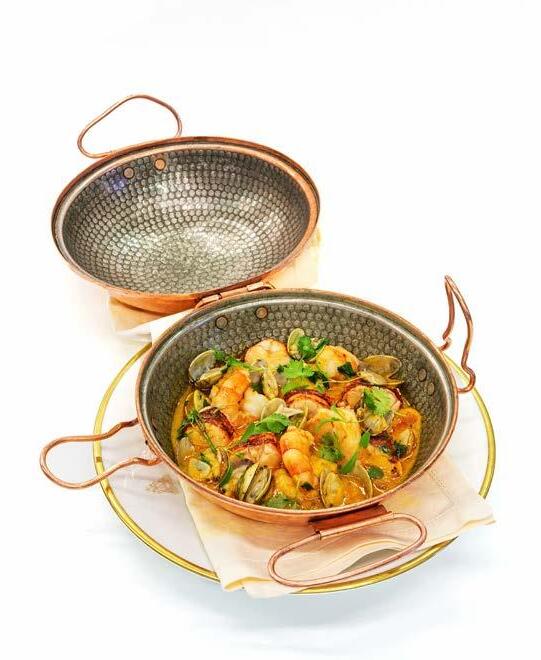
DID YOU KNOW: Lisbon was named Europe’s Best Culinary Destination for the first time at the 2024 World Culinary Awards, beating cities like Barcelona, Paris, and Florence. At the same 2024 Awards, Vila Joya in Albufeira won the award for Best Fine Dining Hotel Restaurant in Europe, and Belcanto, José Avillez’s two-star restaurant, was named the best restaurant in Portugal.
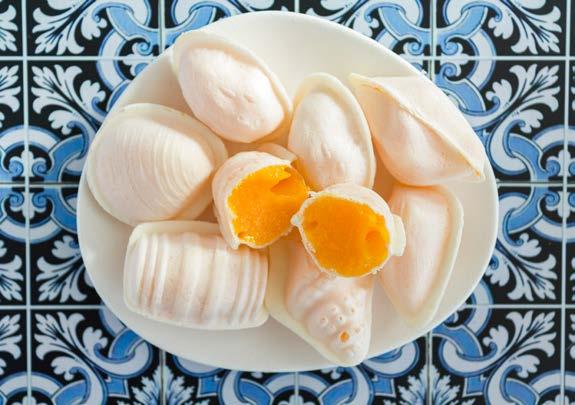
Portugal has over 200 different types of pastries.
While Pastéis de Belém (aka pastéis de nata) are certainly the most famous, another Portuguese sweet with a fascinating story is the Morgado from the Algarve region. This almond and ‘egg jam’ cake has an intriguing history tied to the convents and monasteries of Portugal.
The Morgado, like many other Portuguese sweets, originated in the 15th century when sugar became more accessible through trade with Madeira and later Brazil. Convents and monasteries, particularly in the Algarve, began crafting sweets using local ingredients such as almonds and figs, combined with egg yolks and sugar.
After the dissolution of religious orders following the Liberal Revolution of 1820, nuns, needing to support themselves, started selling their secret recipes, including Morgado, to confectioners, or baking for a living.
Pão de Ló de Margaride: a fluffy, dry sponge cake. Toucinho do Céu: It translates as bacon from heaven but it is a rich almond cake.
Broa de Mel: a honey-based sweet bread.
Ovos Moles de Aveiro: egg yolk and sugar filling in a thin wafer case like a sea shell.
Pastel de Tentúgal: crispy filo pastry with a creamy egg filling.
Queijadas de Sintra: small, sweet cheese tarts.
Travesseiros: puff pastry filled with almond cream.
Pastéis de Belém (Lisbon): THE original custard tarts, created by monks at Jerónimos Monastery. You’ll find them in every patisserie.
Bolo Rei: Christmas cake with dried fruits and nuts.
Encharcada: a rich egg yolk and sugar dessert.
Sericaia: a light, airy egg pudding often served with plum syrup.
ALGARVE
Tarte de Alfarroba: tart made with carob, almonds, and figs.
Dom Rodrigos: egg threads wrapped in colorful tin foil.
AZORES
Queijadas da Graciosa: small, sweet cheese tarts.
Dona Amélia: a small, dark cake made with molasses, raisins, and spices.
MADEIRA
Bolo de Mel: a dark, spicy honey cake traditionally made at Christmas.
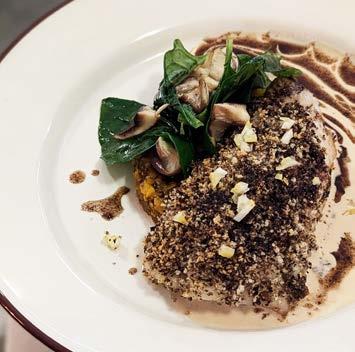
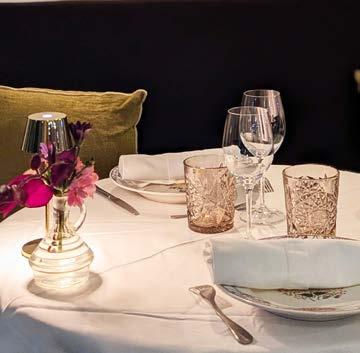
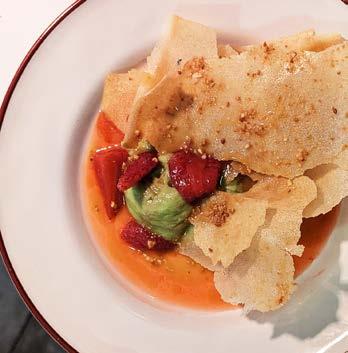
LAST MONTH, DAVID CAMPUS OF AUSTA FINALLY STOLE A MID-WEEK NIGHT AWAY FROM HIS OWN RESTAURANT AFTER HE HEARD OF A LAST-MINUTE CANCELLATION FOR A SOLD-OUT EVENING OF FEASTING – THE PERFECT EXCUSE FOR A SPONTANEOUS NIGHT OUT
HEADING east from austa to Olhão, we arrived at our friends Jack and Walter – the creative hospitality minds behind AlgarvePlus favourites, Casa Amor – who were hosting their first guest chef pop-up.
As part of their new guest-chefin-residence series, the pair have transformed Casa Amor’s charming restaurant area into a rotating kitchen for visiting talent. This time, they welcomed Patrick Nguyen, a chef they love from Paris, whose approach blends his own Vietnamese heritage with his upbringing in French finesse in the most unexpected and soulful ways.
First, we wandered through the quiet cobbled streets to Casa Amor’s whitewashed boutique hotel, glowing under soft street lights. A salty breeze rolled in from the Ria Formosa, and the scent of something
smoky and citrusy curled out from the open kitchen. Welcomed in the restaurant by the couple, their unique magic of combining food, friends, and atmosphere was humming at high frequency.
Inside, Patrick was in full flow –confident, curious, and completely in tune with the moment. His menu read like a love letter to both his roots and the land he was cooking in. Everything was sourced straight from the Olhão market: fish pulled from boats that morning, citrus from the market stalls and herbs so fragrant you could smell them before they hit the table.
A three-course à la carte menu meant we could choose what we ate, and so of course we ordered different things so we could taste as much as possible. The dishes came in a steady rhythm, each one more layered than the last. We began with starters of fried fennel, its crisp edges paired beautifully with an orange flower mayo, fresh dill, and slivers of orange – light, fragrant, and full of early spring brightness. And morcilla, rich
curated choices designed to surprise and impress
and earthy, served with sharp green pepper, peppery watercress, and a whisper of colatura that added a subtle umami depth. For the main course, corvina followed, nestled under a porcini pangratto, with hazelnut milk and sweet potato adding warmth and texture – a dish that was filled with comfort. Then came the pork: smoky, tender, and satisfying, brought to life by walnut cream, sweet-sour pomegranate molasses, and grilled rice for a bit of crunch and char.
Desserts didn’t hold back, either. A spiced butternut cake arrived first, draped in a bold tahini cream and topped with black sesame praline – a perfect balance of sweet, earthy, and nutty. To finish: a playful, elegant plate of strawberries and avocado wrapped in buttery filo pastry, scattered with crushed peanuts.
Each plate told a story of Patrick’s fresh, fleeting connection to this place by the sea. And that’s what we loved most: how Casa Amor is contributing to a new kind of dining experience in the Algarve. One rooted in collaboration and a deep respect for ingredients and place. It wasn’t just about technique (though there was plenty of that), but about the freedom to play, to share, and to connect. We went home full of gratitude for the rare joy of being on the other side of the pass. If this is just the beginning of Casa Amor’s chef residencies, we can’t wait to see (and taste) what’s next.
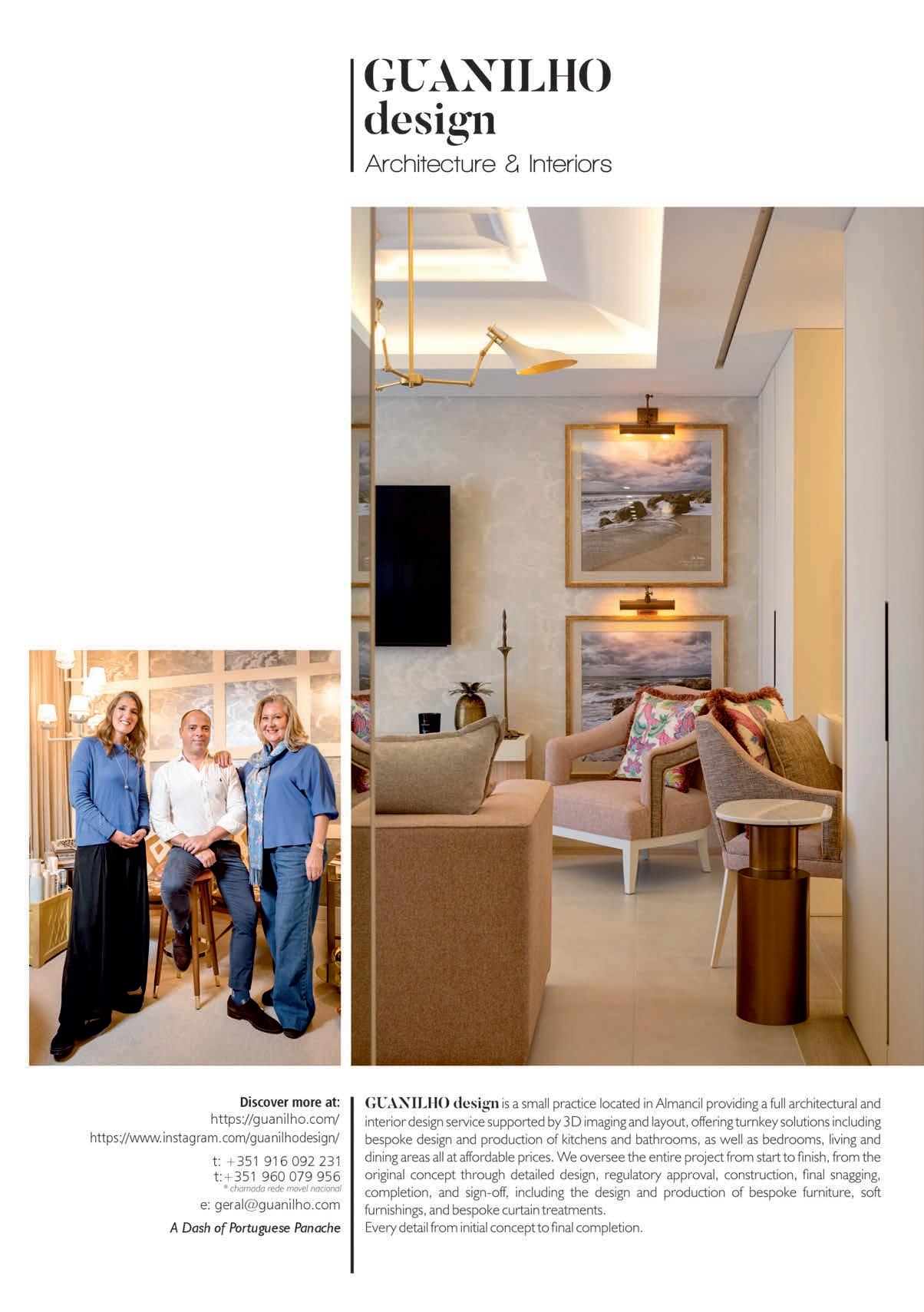
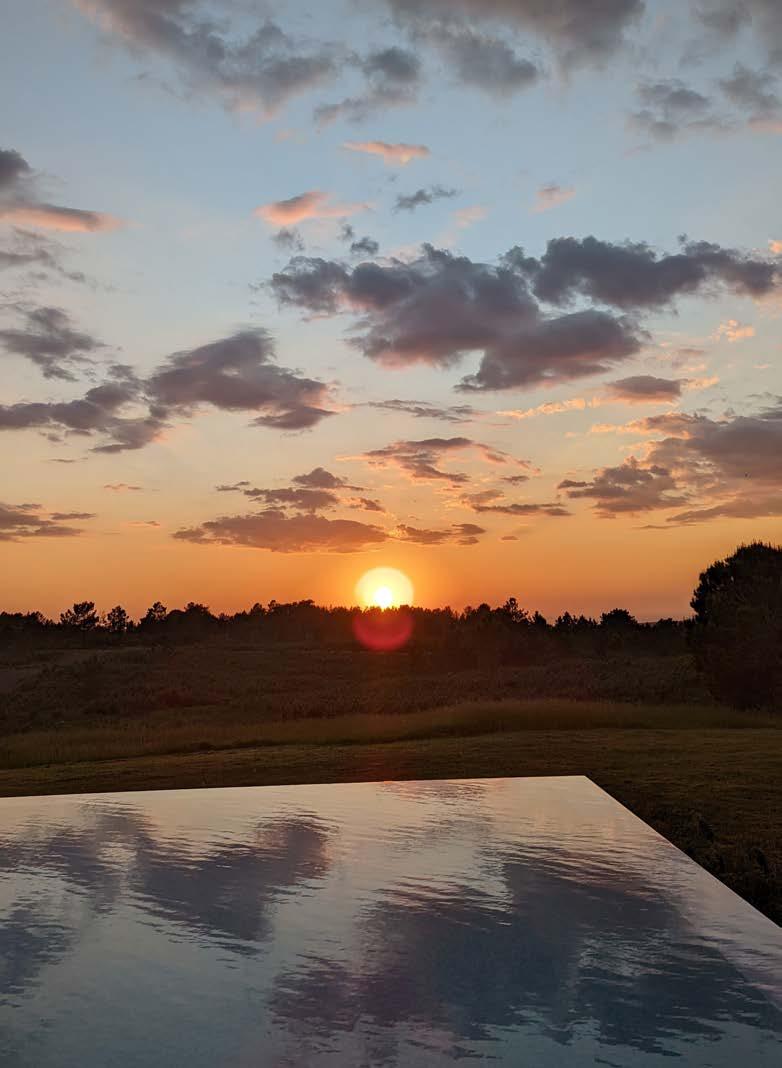
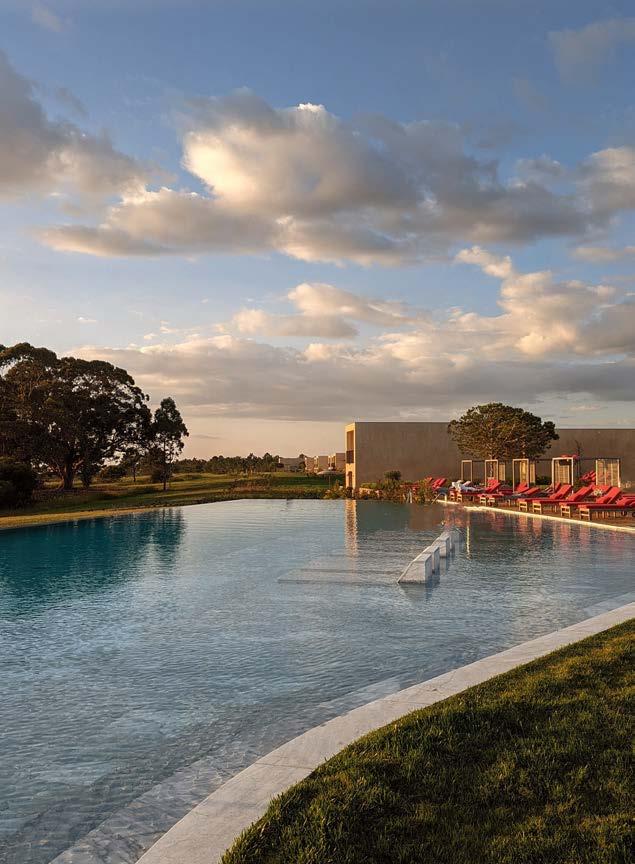
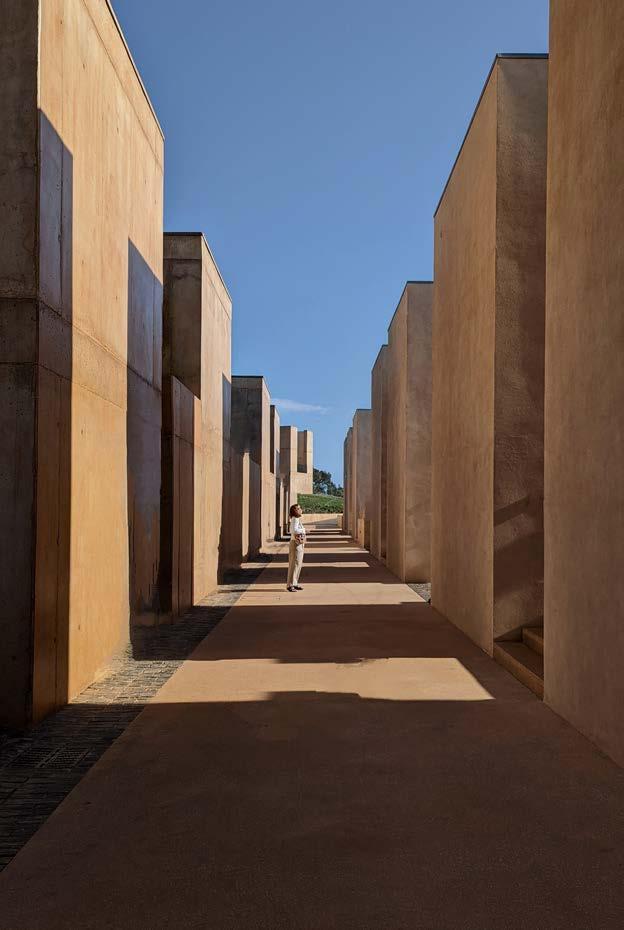
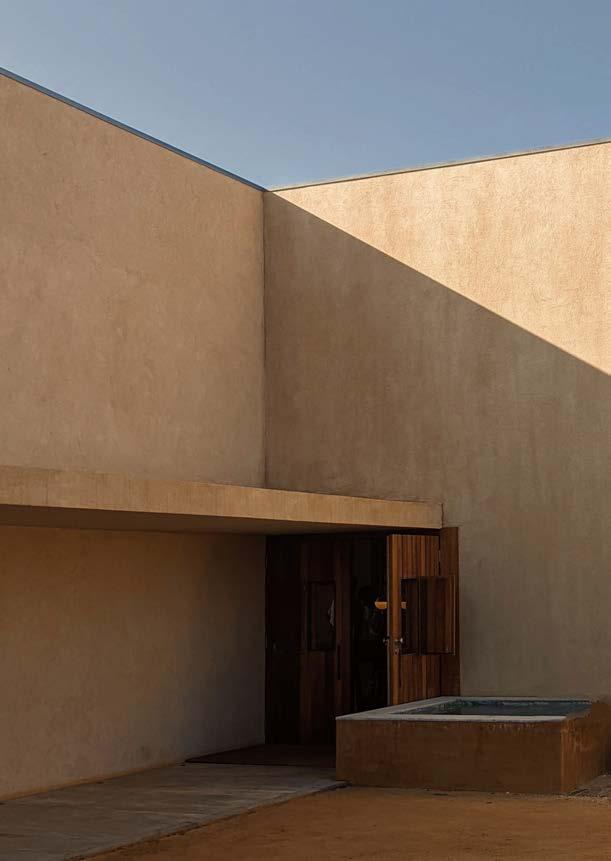

THE WEST ALGARVE IS A PLACE THAT REMAINS ONE OF MY FAVOURITE IN THE WORLD. THERE’S SOMETHING UNIQUELY RESTORATIVE ABOUT THIS CORNER OF PORTUGAL – A KIND OF ELEMENTAL QUIET THAT REACHES BENEATH THE SKIN FOR AN INFLUX OF OXYGEN AND SOUL AWAKENING. MAYBE IT’S THE ATLANTIC’S CEASELESS ROAR, OR THE SCENT OF EUCALYPTUS BAKED INTO THE HILLSIDES. MAYBE IT’S THE SHEER RAWNESS OF THE CLIFFS, UNFLINCHING AGAINST THE WIND. WHATEVER IT IS, I’M HOOKED
Words: EMMA CAMPUS, DESIGN ESCAPES PORTUGAL
ADESTINATION THAT came early in my love affair was Praia do Canal Nature Retreat, a hotel built into a 220-hectare expanse of natural parkland near Aljezur, which, on my first visit, promised a kind of barefoot elegance – the kind that doesn’t try too hard, because it doesn’t need to.
We arrived as the sun was beginning to dip, washing the hills in a mellow apricot light. The approach is humble – no statement signage, no manicured arrival – but that’s the point. A gravel track cuts quietly through a thicket of cork oaks and wild olives, and then, almost imperceptibly, the retreat reveals itself.
What struck me first wasn’t grandness, it was groundedness, the architecture seemed to settle into the landscape, not rise from it. Designed by Lisbon-based Atelier Bugio, the hotel appears to grow organically from the red earth, a masterclass in site-specific architecture. Rather than dominating the hillside, it folds into it. Terracotta-coloured render clads thick, geometric forms – low-slung turrets and sharply angular volumes that feel almost sculptural, like they’ve been hewn from the land itself. There’s a pleasing chunkiness to it all, a tactility. Think Bauhaus meets Berber, via the Alentejo. And yet nothing feels alien to the setting.
Interiors echo that same elemental calm – Portuguese stone and marble, polished concrete, and wood, all softened by pale linens, handmade ceramics, and that constant pull toward the outdoors. Every space has a hearth-like warmth, literal and otherwise. The lobby, for instance, centres around a roaring fire that crackles in winter and glows through the cool Atlantic evenings. There’s cosiness here, but not the curated kind – this is comfort born of intentional simplicity. Our suite, one of only 56, was a quiet poem of clay and crisp white sheets. A low-slung sofa faced a horizon of green that dropped away to the Atlantic. I opened the doors to our private terrace and breathed in deeply –thyme, sea air, woodsmoke. The only sound: the wind.

Dinner that night was taken slowly, barefoot under an olive tree at Azeitona, the retreat’s main restaurant. The menu leaned into the land – salted almonds, sweet grilled octopus, lamb slow-cooked with wild herbs. Wines were local and mineral, served with an ease that made you forget the hours. There was no need for entertainment, no curated soundtrack. Just the clink of glasses and the occasional owl calling from the trees. That night, I slept as if I’d been unplugged.
Morning brought a cool Atlantic breeze and a breakfast spread that felt too pretty to eat – bowls of figs and almonds, sourdough still warm, and fresh ricotta drizzled with rosemary honey. We lingered

longer than we meant to, watching the light creep across the terrace. Later, we borrowed two perfectly patina’d bikes from the front desk – where the staff, dressed in soft linen uniforms, always seem to know what you need before you do – and cycled down into the heart of the Costa Vicentina Natural Park.
The ride was both invigorating and oddly meditative: just us, a ribbon of dust trail, and the scent of sun-baked cistus. Eventually, we abandoned the bikes and hiked a crumbling coastal path until we reached Praia do Canal itself – a wild, cinematic beach of golden sand and black volcanic rock, completely untouched. We lay on warm boulders, letting the wind whip around us. It felt, somehow, like being scrubbed clean by nature.
Later, as the sun sunk, still salty and slightly sunburnt, we made our way to the Esteva Spa – the retreat’s minimalist temple to wellbeing. The design, like the rest of the resort, is quietly impeccable: poured concrete, clay render and Portuguese marble, clean lighting, and scents of lavender and citrus floating through the air.
I chose a deep-stone massage using ESPA products. The oils left my skin soft and my nervous system somehow reassembled. We floated between the sauna, steam, and the heated indoor/ outdoor pool until time became irrelevant. There’s something beautifully primal about sweating and then plunging into cold water under the open sky. You remember your body again. You come back to yourself.
Hungry from a day exploring we set off into the nearby town of Aljezur and to Cera, an unassuming restaurant in the old village run by chef Rafaela Louzada, who trained with Nuno Mendes. The setting is unfussed and intimate – just a scattering of tables, an open kitchen, and Rafa himself plating each dish with almost monastic focus. The menu changes with whatever their local producers bring each week: blistered padrón peppers with smoked salt, beetroot tartare with sheep’s yoghurt, pork belly with fermented plums. It’s confident, unpretentious food that speaks softly but leaves a lasting echo.
The next morning, after more time in the spa, we slipped back into Aljezur to experience it in daylight – the sleepy, sun-bleached town had surfboards leant against café walls and barefoot locals sipping espresso outside their whitewashed homes. We stopped for speciality coffee at Koyo, a tiny café run by a champion barista. Think impeccable pour-overs, earthy ceramics, and shelves of Kinfolk and Monocle. The almond cake is dangerously good. Back at the hotel, it was time to check out and I began to think about what makes the magic of this place tick. Praia do Canal isn’t flashy. It doesn’t try to seduce. It doesn’t need to. Like the landscape it inhabits, its power is in its restraint. It’s a place where architecture becomes part of the terrain, where luxury means silence and space, and where you don’t just switch off – you recalibrate. For lovers of design, nature, and uncurated stillness, it’s a rare find. The kind of place that you return to not just for escape, but for clarity. And if, like me, the wild West Algarve already has your heart – well, this is where you’ll feel it beating the loudest.


Herdade Vale dos Polvos - Valinhos, Aljezur T: 282 242 400 / W: praiadocanal.pt
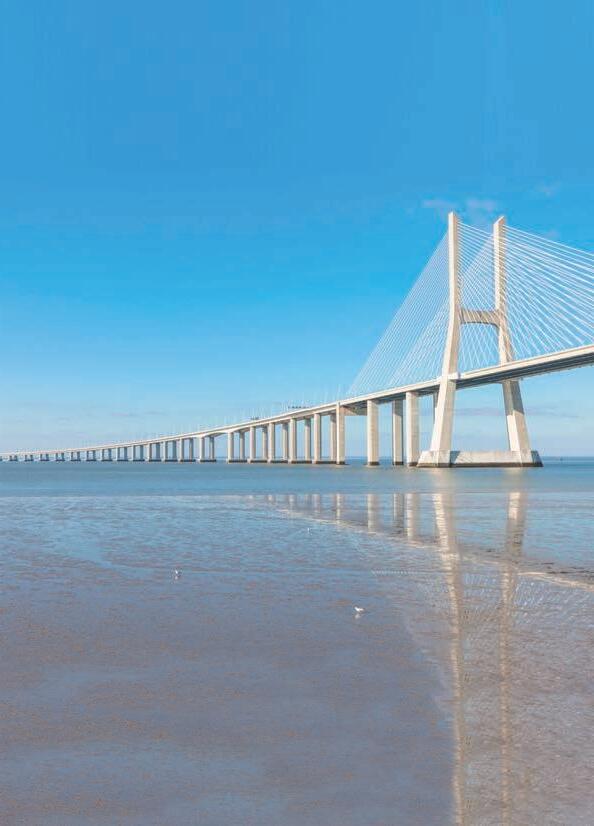
www.eurofinesco.com . info@eurofinesco.com
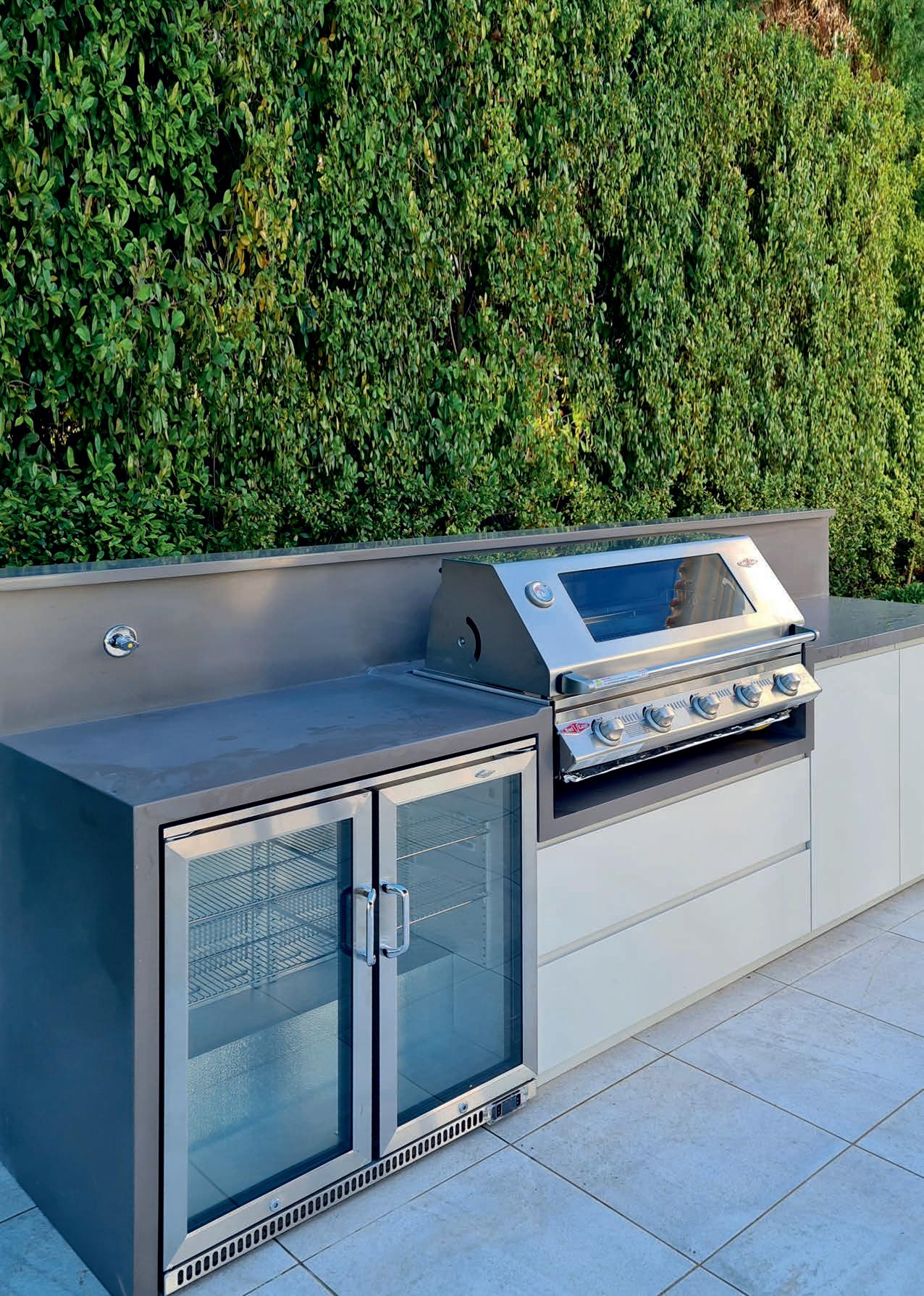

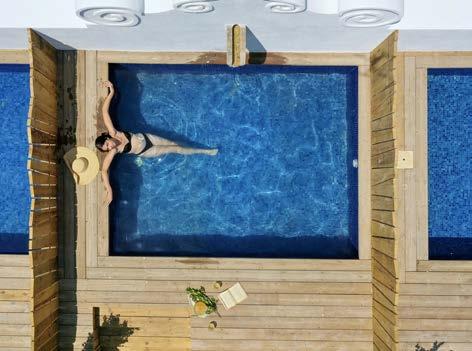

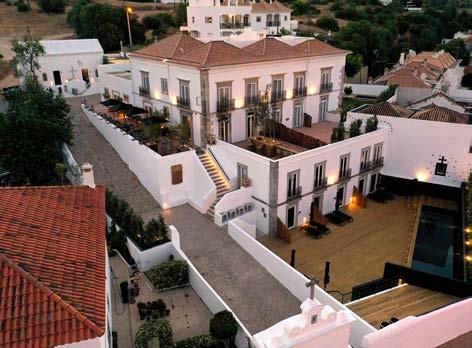
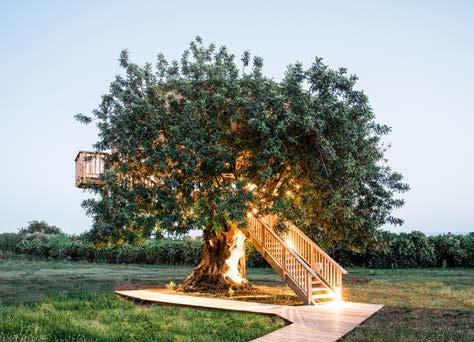
WE ’ LL BE VISITING DIFFERENT PLACES, MEETING PEOPLE AND ENJOYING VARIED EXPERIENCES EACH MONTH. THIS TIME ROUND, COLÉGIO CHARM HOUSE AND CONVERSAS DE ALPENDRE ARE THE NEW-FOUND FAVES
Words: BEN AUSTIN
OVER BREAKFAST, I sat down with José, the co-owner with his wife Christina of these very different and very special properties. Colégio Charm House, a converted college in Tavira, and Conversas de Alpendre about a five-minute drive out of town. José was a big deal in IT, working for international companies, having spent time living in Italy and elsewhere. They started a family and thought about having a second home in the Algarve, but the idea of bringing all their belongings to and fro from Lisbon didn’t appeal. So, instead they
opened Conversas de Alpendre, a hidden getaway for those wanting a rustic, tranquil place far from the maddening crowd. Set amongst rows and rows of orange trees, it is a delightful retreat from our frenetic pace of life. The rooms, which, like the Colégio in Tavira, are beautifully designed, colour co-ordinated with incredible attention to detail. There are no numbers to the rooms, but are instead given names, like ‘No Clock, No Tie, No Work’, which totally sets the tone. There is a series of smaller rooms, located near to the main building, compact and cosy, some with the bedroom on a mezzanine level. Everything is carefully considered and curated. For those wanting more seclusion there
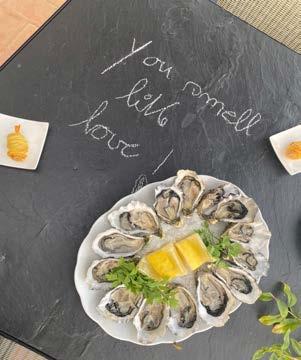
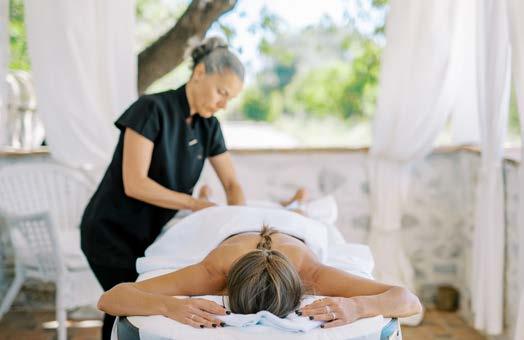
is a larger stand-alone cabin, complete with a terrace and small dipping pool. There is even a tree house cabin for all you big kids. One can play king of the castle from atop of the tree house, looking out over the orange groves.
The cuisine at both properties is first rate, with both dining rooms compact and only really catering for the guests, which makes the experience that much more intimate.
The Colégio Charm House boutique hotel is nestled in the heart of Tavira and seamlessly combines historical charm with modern luxury. It was originally an 18th-century palace, which later served as a Catholic boys’ school. All of which has been meticulously restored by José and Christina into a 20-room haven of elegance and style.
Each room speaks of contemporary chic fused with eclectic and bohemian elements. Some rooms are thematic but not in a tacky or crass way; there is a ‘Cairo-, Marrakesh- and an Indian-inspired room’, all decorated with tasteful and authentic items. Rustic crafts and the odd antique are all part of the ‘mise-en scène’, coupled with spacious accommodations equipped with all modern comforts. For the honeymooners, there are four rooms which feature private pools or Jacuzzis, for that extra touch of indulgence and intimacy. There is a central communal long pool, perfect for a few lengths after walking the cobbled alleys and historic sites of Tavira’s old town and wandering by the banks of the Gilão river, with its numerous eateries and cafés.
One remarkable feature of the Colégio Charm House is the
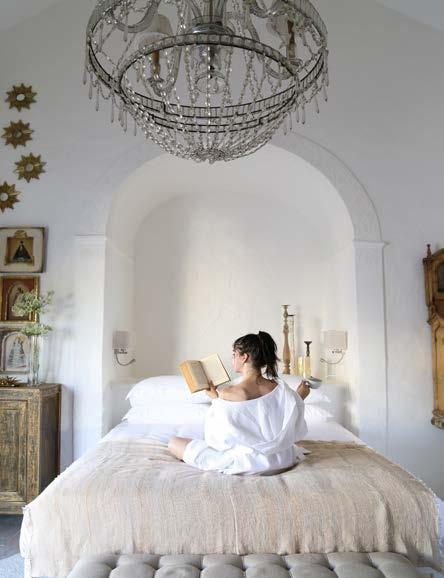
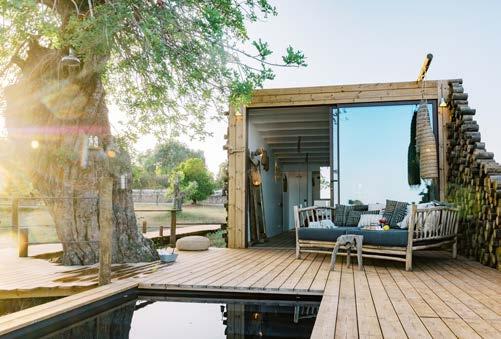
converted chapel set apart from the main house. Here, in keeping with the authenticity, the rooms are decorated with icons and religious motifs. There is even an antique bible, handed down to Christina by her mother, the personal touches becoming part of the narrative.
As mentioned, the culinary offerings are superlative, with an abundant breakfast, (the eggs benedict was perfect), meats and cheeses, combined deliciously with local jam and honey. Guests can partake in the ‘Surprise Dinner’, a three-course set menu crafted from local fresh ingredients expertly prepared by the house’s Brazilian chef. Outside of the restaurant there is terrace overlooking the town, and likewise the roof bar in season provides the perfect vantage point to unwind and relax with a cocktail.
Conversas de Alpendre and Colégio Charm House, are completely distinct in terms of vibe and location, one more family oriented and a get-away-from-it-all kind of place, the other is historic and grand, situated close to the centre of Tavira, sophisticated and smart. There is a corridor lined with small tables, each with a wood board game waiting to be played. There are display cabinets of ceramics and old books as well as a reclaimed stone carving decorating the entrance hall. One can immediately tell that every item has been artfully added and selected with thought and precision. Each property provides a totally different experience, but both share the vision of the owners to create a truly unique ambience and ultimately an unforgettable stay.
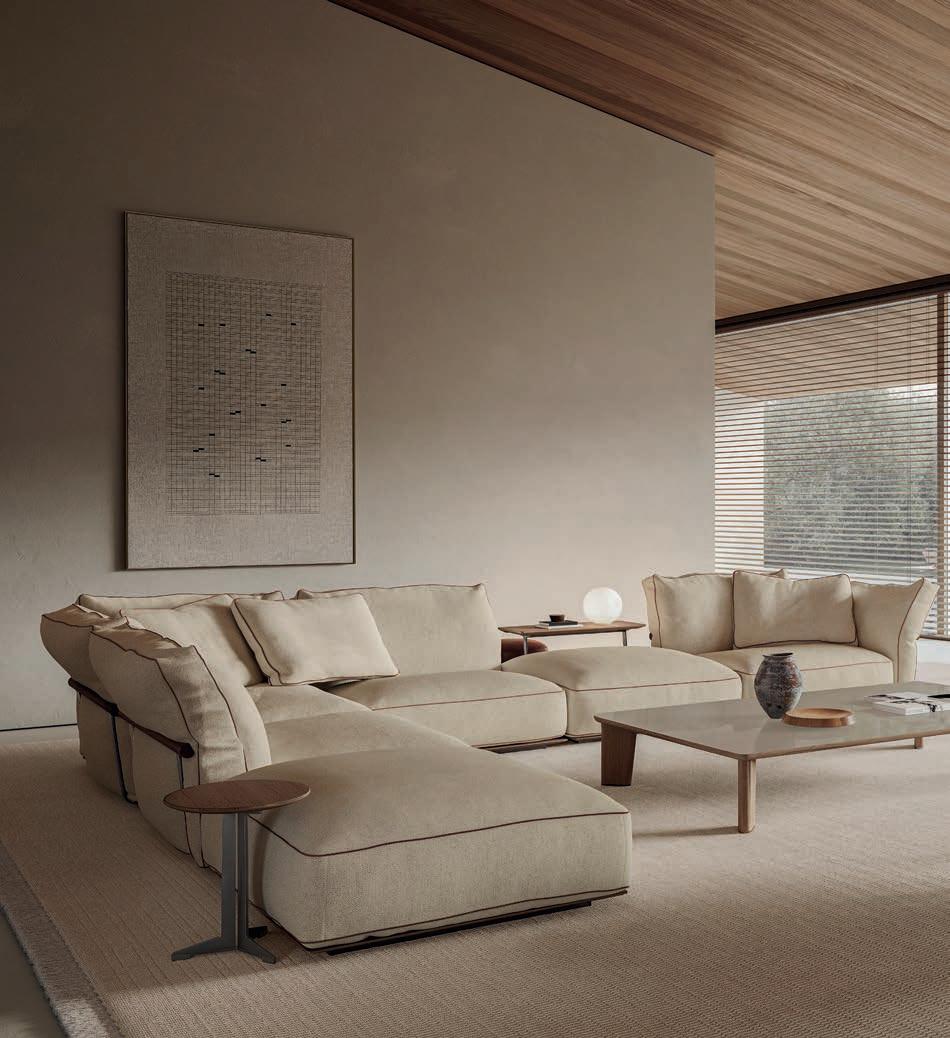

THE ALGARVE, WITH ITS GOLDEN BEACHES AND ENDLESS SUNSHINE, IS A PARADISE FOR MANY. BUT IT PRESENTS UNIQUE CHALLENGES FOR YOUR SKIN. INTENSE UV EXPOSURE, DRY AIR, AND SALTWATER CAN ACCELERATE AGEING, CAUSE DEHYDRATION AND LEAD TO IRRITATION IF PROPER SKINCARE ISN’T PRIORITISED. ADAPTING YOUR ROUTINE TO THE ALGARVE’S CLIMATE IS ESSENTIAL
Words: MANUELA DE OLIVEIRA
SKINCARE for men and women differs in more ways than just marketing. The structure of the skin, oil production, as well as lifestyle habits play a role in how each gender should approach their skincare routine. Let’s explore how to protect your skin in warm climates and why men’s and women’s skincare routines vary so much.
The UV index in Portugal can reach extreme levels in the summer, which accelerates collagen breakdown, leading to wrinkles, pigmentation, and sunspots.
SPF 30 or higher is a daily must, even on cloudy days, as UV rays penetrate through clouds.
High temperatures cause moisture loss, making skin feel tight and dull.
Swimming in the Atlantic Ocean or chlorinated pools can strip the skin of its natural oils, requiring replenishment with hydrating serums.
Many areas in Portugal have hard water, meaning it contains high levels of calcium and magnesium. This can lead to dryness, irritation, and clogged pores over time.
Using a gentle cleanser and finishing with a hydrating toner can help counteract these effects.
Whether you’re male or female, a climateadapted routine can help keep your skin healthy and glowing. Here’s what your Algarvefriendly skincare should look like:
Morning Routine: protection and hydration
Gentle cleanser removes sweat and excess oil without drying the skin.
Antioxidant serum (Vitamin C) protects against free radicals from UV rays.
Lightweight moisturiser keeps skin hydrated without feeling heavy in the heat.
SPF 30+ Sunscreen is the most important step to prevent sun damage!
Evening Routine: repair and recovery
Double cleanse (if wearing sunscreen or makeup) to remove residue and pollution.
Hydrating serum (Hyaluronic Acid) which restores moisture lost during the day.
Night cream or gel moisturiser repairs skin overnight without clogging pores.
Exfoliate one to two times a week, which helps remove dead skin cells and keeps the skin fresh.
Many assume skincare is gender-neutral, but men and women have biologically different skin structures that require different approaches. Here’s why:
Men’s skin is 20–25% thicker due to higher collagen levels, making it more resilient to ageing but also prone to oiliness and acne.
Women’s skin is thinner and loses collagen faster, leading to earlier signs of ageing such as fine lines and sagging.
Testosterone in men stimulates oil production, often resulting in larger pores and greasier skin.
Estrogen in women helps retain moisture but also makes their skin more sensitive to hormonal fluctuations, leading to dryness or breakouts during menstrual cycles.
Men’s daily shaving acts as an exfoliation, but it also strips away the skin’s protective barrier, leading to irritation, razor burns, and sensitivity.
Women’s skincare focuses more on hydration and protection, as they don’t shave their faces but may experience dryness from makeup use or hormonal changes.
Women are encouraged to use multi-step routines, while men are marketed simple, all-in-one products.
In reality, men also benefit from serums, eye creams, and proper hydration, just as women do!


While men and women have different skincare needs, the fundamentals remain the same: protection, hydration, and consistency. In a climate like ours in the Algarve, it’s essential to adapt your routine to the environment, not just your gender.
So, whether you’re a man who’s been washing his face with bar soap or a woman who’s overwhelmed by ten-step skincare routines, the key is to find a simple, effective routine that keeps your skin healthy, hydrated, and protected.
Because at the end of the day, good skincare isn’t about gender – it’s about giving your skin what it needs.


PUMP & GO
Approx. 1 hour for (dis)mounting
Motor can be fitted
Fast and sportive

MAGIC BEAUTY
Rua do Comercio 28
8315-15 Almancil
T: 927 599 283 W: magicbeauty.info
LIGHT & EASY
Packs and stores in 3 bags
Easily pulled up on the beach
Easy to sail alone, + 3 more


Little draft
Large trampoline
Retractable center board and rudder
Front deck to transport stuff

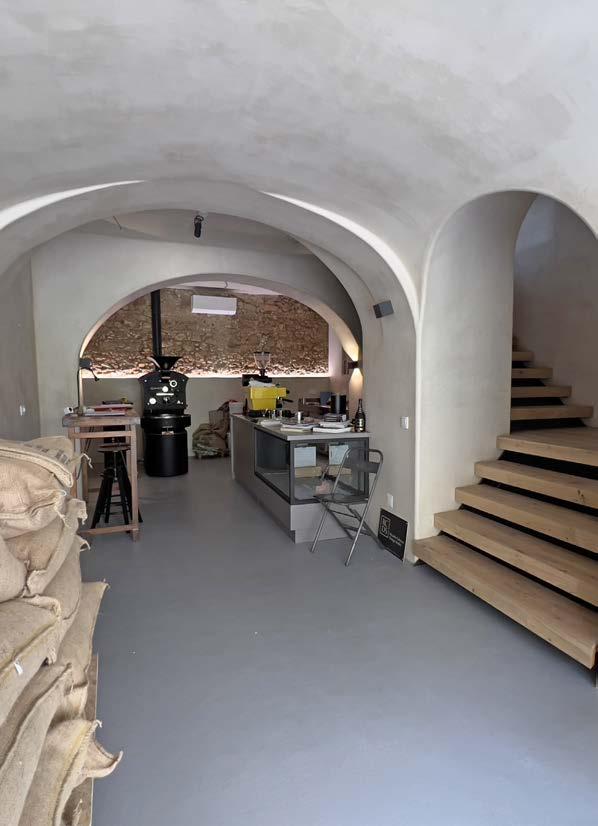
CREATED BY THE GERMAN ARTIST MARI ARP, THE NEW CORTE REAL EXHIBITION FEATURES INTERNATIONAL PERSONALITIES THAT SYMBOLISE PANACHE AND STYLE. WITH THE ABILITY TO ENHANCE APPEARANCES, MARI’S PORTRAITS CAPTURE THE ESSENCE OF ICONIC STATUS
Words: CAROLYN KAIN

UNLIKE THE idols of ancient times that were inanimate objects, today some mortal beings are worshipped. Their images and star quality are recognised across most of the western world and artists are attracted to replicate them in paintings and photographs. Naming just a few, there is David Bowie, James Dean, Elizabeth Taylor and Elvis Presley, regarded by many as the King of Rock and Roll.
Most memorably perhaps are Andy Warhol’s depictions of Marilyn Monroe and most beautifully illustrated are Mari Arp’s portraits of Audrey Hepburn. She achieves such flawless images by the use of montage techniques and the application of acrylic, charcoal and oil pastels. Her subjects vary from starlets to billboard models but are often legends of the Hollywood screen.
Mari’s images appear against unexpected or over-painted graphic backgrounds. Finally each multi layered picture is coated with a crystal clear veneer. This finish is reminiscent of a high gloss magazine where the subject’s photograph has almost certainly appeared on many previous occasions.
The names of these superstars engraved on the Los Angeles Walk of Fame give them permanent public recognition. Their lives spent idolised by millions of fans with autograph hunters and the paparazzi following their every move.
Even more extreme, the adulation of idols by the Ancient Greeks and Romans knew no limits. Imbuing them with supernatural powers, these holy figures were indulged. Believing them to be earthly manifestations of gods and goddesses, they were venerated and endowed with sacrificial offerings. Considered to be sacred, each idol required its own grand dwelling.
It is easy to forget that every temple standing today once housed an idol and in every ancient city there was at least one. Containing a sacrificial altar, the idol often made
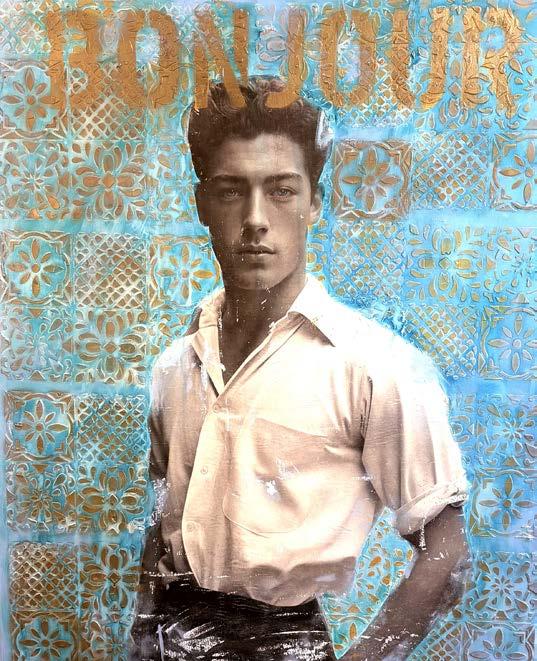
from wood was placed to face it. Although some of the temples are still standing, many of the perishable idols have not survived. Those made from bronze and gold were melted down by later generations and others embellished with precious stones were probably looted and repurposed for other uses.
In some cults, where the god or goddess was represented by a figure that was small enough to carry, processions would take place on festival days. Crowds would line the route as the deity was paraded from the security of the temple sanctuary and temporarily taken to a shrine. Today, there are modern parallels across southern Europe, including in the Algarve where statues are honoured at the processions of Our Lady of Orada in Albufeira, Our Lady of the Rock in Lagoa and most famously Our Lady of Piety, Mãe Soberana in Loulé. Equivalent to the Walk of Fame in Los Angeles, the Pilgrim’s Way in Loulé is visited by the faithful and fulfils the human need to revere an idol.
What started your interest in famous faces? I have always been fascinated by old movies and movie posters. The glamorous stars of the 50s and 60s sparked my imagination and curiosity.
What is it about the 50s that captivated you? It was the golden age of Hollywood. After the Second World War, people longed for glamour and escapism, and stars like Marilyn Monroe, Audrey
Hepburn, Grace Kelly and James Dean became icons of style and elegance whose influence continues to have an impact today. Paul Newman, Isabella Rossellini, Sean Connery, Liz Taylor, Sophia Loren – they are also among my favourites.
Who was the first to become subject matter for you? The beautiful, talented Audrey Hepburn. Sabrina, make in 1954, is a movie I love.
Do you start every work with a photograph? A transfer collage is a creative art technique in which images, texts or structures are transferred from one carrier material to another surface. This creates exciting effects that often appear slightly blurred or fragmented. Once the manual print is on the canvas, I paint the background with acrylic, chalk and oil pastels and colour individual parts of the face.
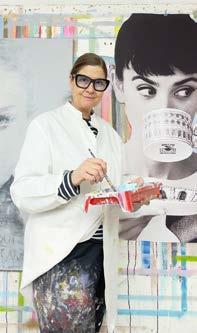
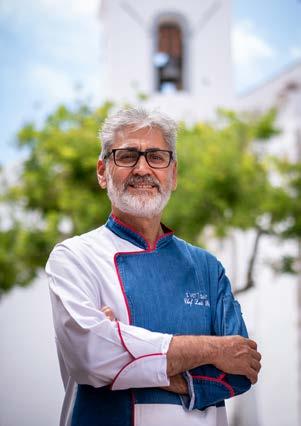
A VERY SPECIAL TREAT FROM CHEF LUIS BRITO OF MICHELIN-STARRED A VER TAVIRA, WHO SEEKS TO AFFIRM HIS ROOTS IN CONTEMPORARY PORTUGUESE CUISINE WITH SIGNATURE FLAVOURS AND TEXTURES THAT FORM A UNIQUE GASTRONOMIC EXPERIENCE. IN THE RESTAURANT, HE USES FIG ASH WHEN HE BOILS THE CORN IN THIS ELABORATE PORK BELLY DISH, BUT SAYS THE HOME COOK CAN TAKE A MORE SIMPLE APPROACH
SERVES 6 PREPARATION CORN 24HRS COOKING ONE HOUR
1kg of yellow corn kernels
800g of suckling pig belly
400g potatoes
100g lard
10g thyme
20ml extra virgin olive oil
100g baby carrots
200g orange
2 cloves
6 black peppercorns
15g coarse salt
2 bay leaves
Chervil or parsley to serve
1. Soak the corn kernels in cold water. The next day, boil the corn until softened, then drain the kernels. Rub them gently, to remove the skins.
2. Pop the peeled kernels in a deep pan, cover with water and add the pork belly along with the bay
leaves, cloves, black pepper and salt. Let it cook gently.
3. When cooked, remove the pork from from the pan, cut it into portions and brown them in a sauté pan to crisp the skin.
4. Peel the potatoes, cut into rectangles, cook in water for ten minutes, then cool and fry so they are crispy on the outside and creamy on the inside.
5. Blanch the carrots in salted water to remove the skin, sauté in olive oil, salt and thyme.
6. Pass a little of the corn broth through a fine sieve, mix with a hand blender and let it reduce a little over the heat until it reaches the desired texture.
7. Peel the orange and cut into segments, removing the pips.
8. To serve: Plate the sauce, potato, pork and top each with an orange segment. Add carrots and cooked corn and chervil or parsley tips. Enjoy.
A Ver Tavira opened in 2006 and is widely regarded as one of the Algarve’s most important restaurants, with Luis Brito one of the most innovative chefs. Says the Michelin Guide: “Located on a hill leading up to the Moorish castle, this restaurant focuses on every minute detail on several traditional tastingstyle menus with a modern twist, both at lunchtime and in a more gastronomic format in the evening.”
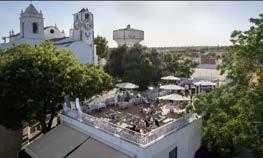
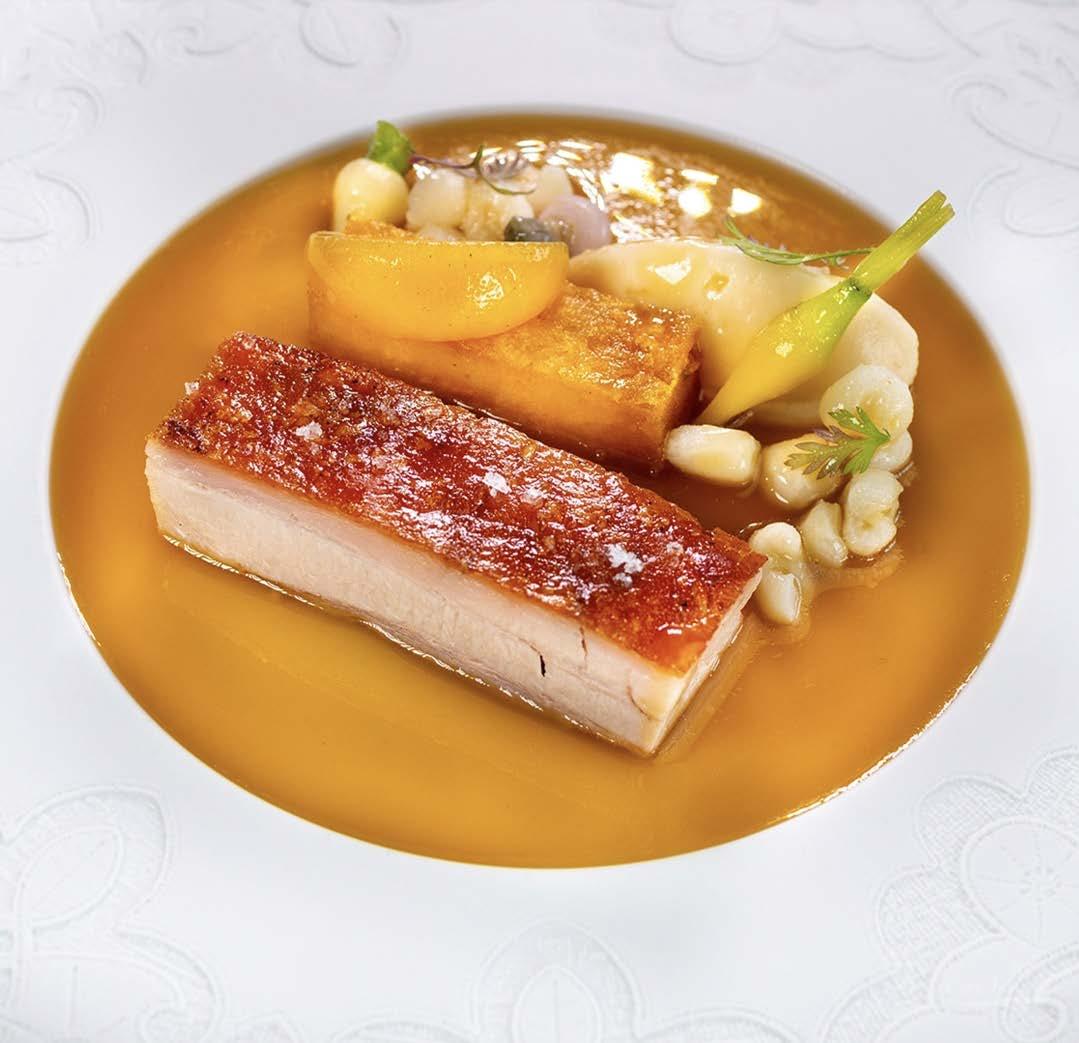
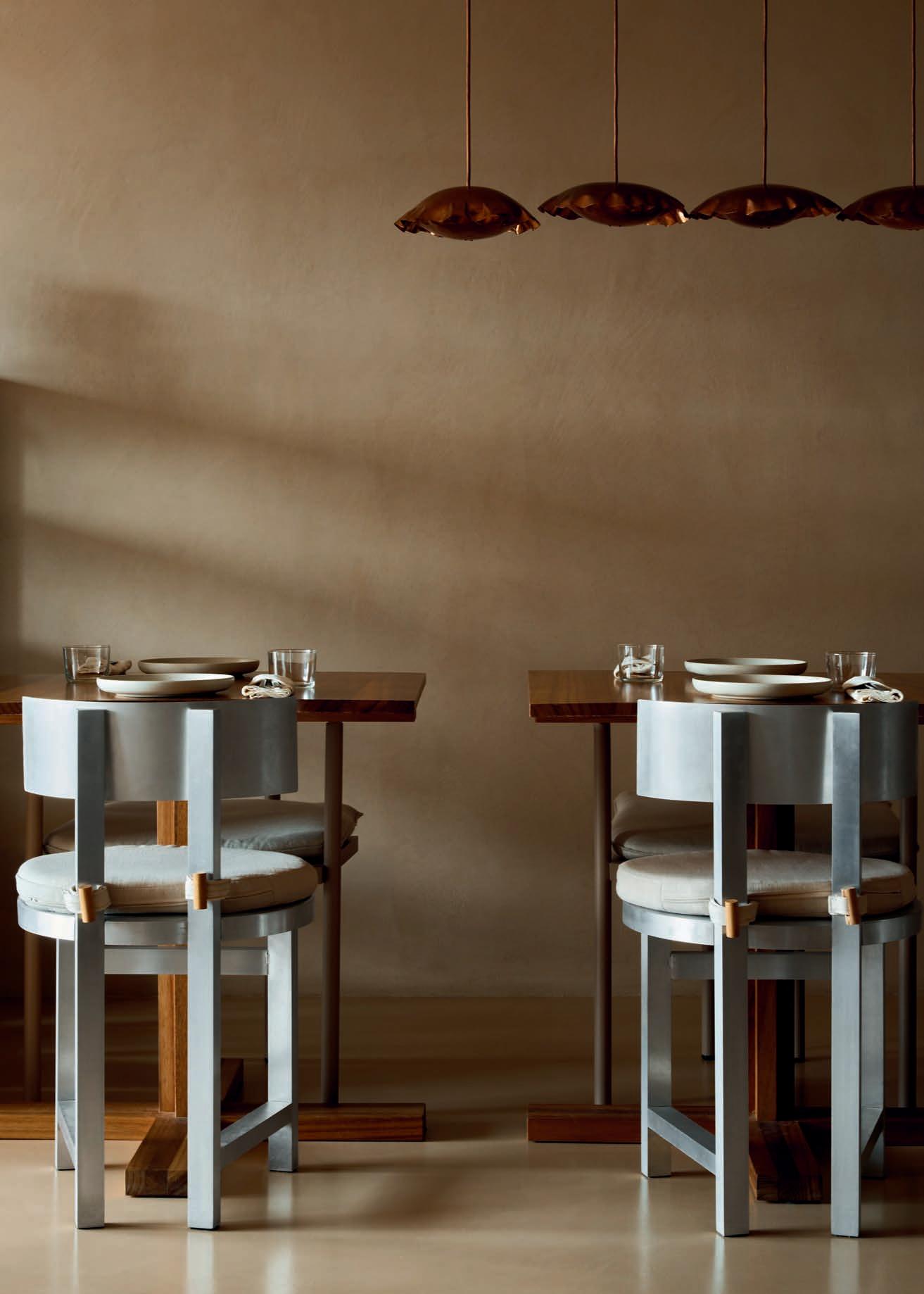



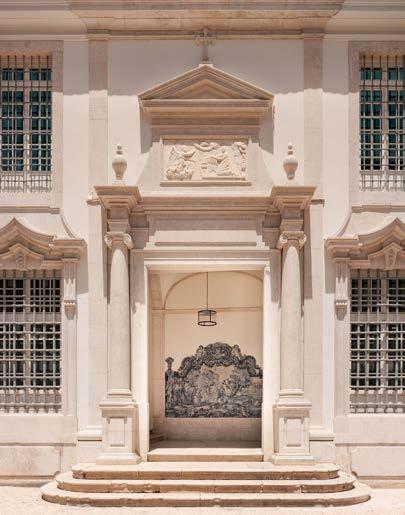
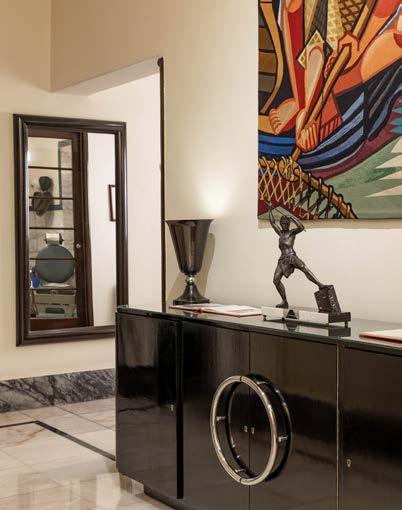

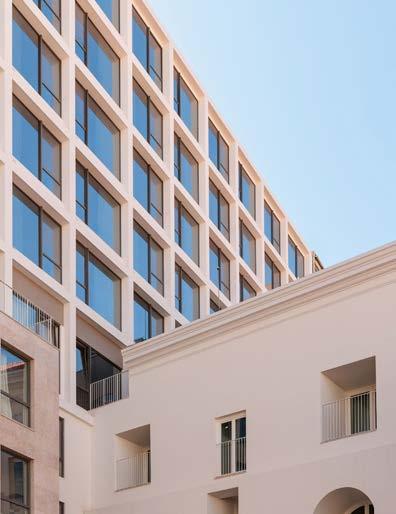

LISBON IS A CITY THAT BRINGS TOGETHER HISTORY AND INNOVATION IN THE MOST ORGANIC FASHION. PAST AND PRESENT MEET UP IN HOTELS AND RESTAURANTS THAT ARE INVITING AND INSPIRING AT THE SAME TIME
Words: SANDRA GATO
EITHER LIVING in Lisbon or just visiting – spring is always a good time, when the days are longer and the lilac jacaranda trees are in bloom – the city always has new (and old) spots that are worthy of our undivided attention.
Hotel Britania is a history lesson that was kept intact in all its Art Deco glory. Locke de Santa Joana, on the other hand, is a new block in town, right behind Avenida da Liberdade, that identifies itself as a digital nomad’s dream. Snob Bar is a classic hang out, known for its late night steak meals, recently renovated but keeping all the old school charm. Let’s enjoy the warm weather while getting to know some of the coolest places in town.
Hotel Britania Art Deco
Stepping inside this architectural gem is travelling in time to Portugal’s capital in the 40s. And staying for the night is like having a cameo role in a film based in an Agatha Christie’s book. I don’t think Poirot ever investigated in Lisbon but, if he did, I imagine him enjoying Hotel Britania as his hotel in town.
Designed by Cassiano Branco – a Portuguese modernist architect, one of the most relevant ones in the first half of the 20th century – it is the only hotel that remains totally intact since the 40s (and that alone should be a reason to visit). A lesson in Art Deco with each detail making sense: the geometrical windows, the metal lamps, the exotic art.
What matters here is not bling luxury or innovative service. You come here for tradition and timeless comfort. When checking in, for instance, you don’t get
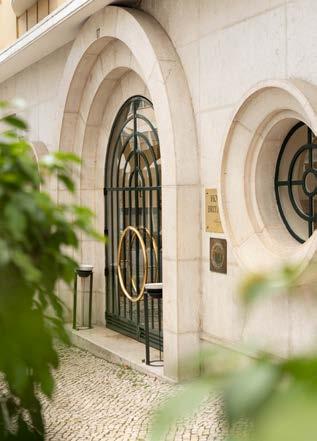
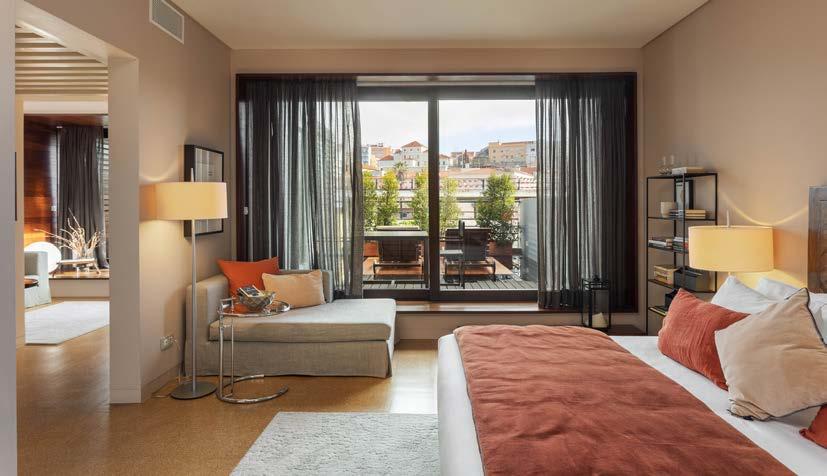

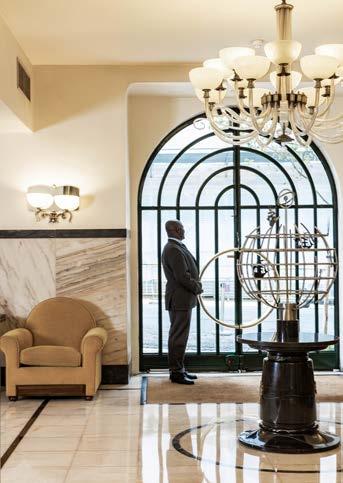

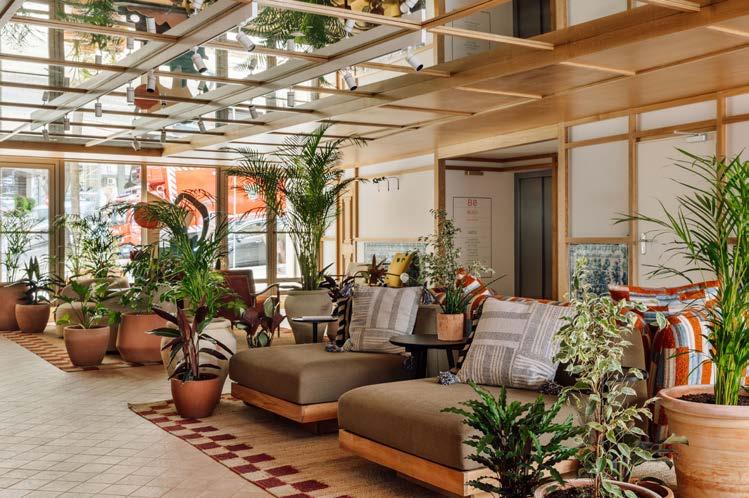

Locke de Santa Joana is more than a choice place to stay in the city, it is also a newly-created environment that both curious travellers and today’s digital nomads can call home
a key card to your room, you get a real key, with a chunky key ring that you have to leave with the receptionist when going out and that, in our technological world, feels refreshing and warm at the same time.
The 33 rooms are all spacious and with most of the furniture from the early days. The cork floor was also maintained, as well as the light colours throughout and the marble bathrooms. And although it has an old soul, it is impecably renovated, inside and out.
Part of Lisbon Heritage Collection hotels, Hotel Britania Art Deco is rich in history – and that is another reason that makes it so special.
Once called Hotel do Império – at the bar, you can still see the paintings on the walls that referenced the Portuguese colonies – its initial owner, Alfredo Machado, was married to Natália Correia, a talented poet and prominent intellectual figure in Lisbon at the time. She hosted private political and cultural debates and dinner parties at the hotel to which she invited the likes of Almada Negreiros (artist), Mário Cesariny (poet), Marguerite Yourcenar, Henry Miller, Graham Greene... if walls could talk! lisbonheritagehotels.com
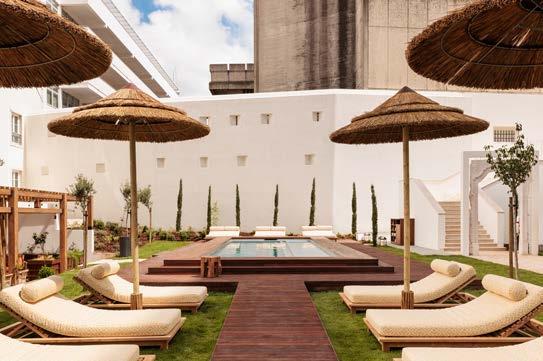
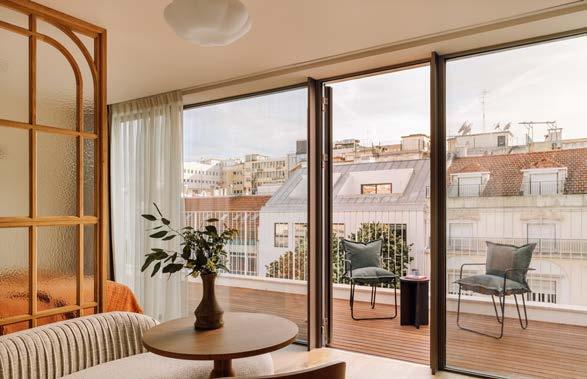
Built around a 17th century convent, this is, in fact, not only a new place to stay in Lisbon, but also a new neighbourhood in town. Situated right behind Avenida da Liberdade, it almost feels like a small village inside the city.
Firstly for its dimension – 370 rooms, restaurants, bars, and more – but, most importantly, for the community spirit that is a staple of the Locke group (with hotels in many major cities including Dublin, Paris, Zurich, Manchester and London), this one being their biggest project outside the UK. Whatever the location, their claim is: “Book for a night or a year. Cook at home or explore the city. Wake up with yoga or a Bloody Mary”. Especially aimed at the digital nomads – those who work wherever their computer is – it delivers more than just a place to sleep. That is why it feels a totally new kind of place, physically and conceptually.
Th rebirth of Snob Bar has been welcomed by those who were regulars decades ago, and a whole new generation they have invited to discover its special personality and its stories of the past

Made to be lived in, not just slept in, Locke is a place you can connect with yourself, and the community. Beautiful but comfortable. Subtle but assertive. Hip but inclusive. You can choose between rooms or studios (with fully equipped kitchens and washers/dryers) – depending on the kind of stay you’re planning, the studios are ideal for longer periods, of course.
Aligned with what are the main needs nowadays, you have an informal reception upon arrival and then you decide if you want to discover the city on your own or if you rather be part of the Locke community and engage in any of the many planned activities (yoga classes, cocktail hours, gatherings by the pool – there is a daily programme available).
It is a good thing that all the restaurants and bars are open to locals because they are already regular hangouts for many Lisboetas. Chef Nuno Mendes – the creative mind behind projects like Lisboeta (London) and Cozinha das Flores (Porto) – is at the lead of Santa Joana, the flagship restaurant of Locke Santa Joana, acclaimed by many as one of the best new restaurants in town. Situated inside the old convent, it mixes the diversity of contemporary Lisbon with Portuguese ancient flavours and traditions. An absolute mustgo-to for everyone visiting or living in Lisbon.
Santa Marta, on the other hand, has a more Mediterranean approach, with an attractive terrace overlooking the pool and a varied all-day menu. As for the bars, they’re classy and great fun at the same time. The Kissaten focuses on whiskies (the very friendly staff will help you choose) and vinyl records (you can ask to listen to your favourite one at the bar), and Spiritland Lisbon is a late night DJ and cocktail bar, perfect to unwind after a work day.
As mentioned at the beginning, Locke Santa Joana is so much more than a hotel, it is a brand new way of enjoying the city (suggestion: a good choice to go to with the (grownup) kids on Mother’s Day, May 4). lockeliving.com
Snob Bar

Opened in 1964 in the heart of Lisbon (Príncipe Real), inspired by British clubs with their dim light, dark wood and secretive conversations, Snob has been part of our lives for decades – by us I mean mostly the media/political/artistic crowds. I can easily say that most journalists over the age of 40, at some point in their career, ended the night at Snob, with a steak on their plate after another long day of trying to give the news (good and bad) to their fellow countrymen.
Totally renovated recently, it was with mixed feelings that I went back, afraid that fresh paint would cover its soul. It doesn’t. The words I heard the most while inside the new old Snob were: “Que saudades!” (I missed it!) and some – like myself – took the younger generations in an attempt to pass the magic on. The croquetes with mustard, the steak with the special sauce and fries and the mango mousse for dessert all tasted the same as in the 90s. Snob is still the place to go when the working day turns into night. For the comfort food, for the classic ambience and for the intimate conversations. What is said in Snob stays in Snob... Snobbar.pt
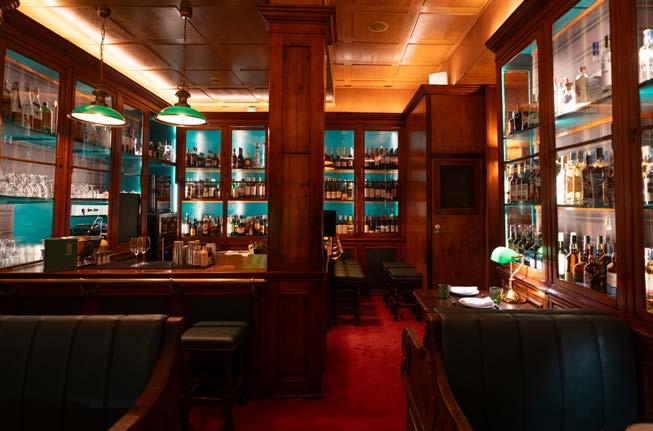


SÉRGIO MORAIS NEVER SET OUT TO BE A PHOTOGRAPHER, YET HIS CAMERAREADY JOURNEY HAS LED HIM TO CAPTURE COMPELLING IMAGES IN FASHION, ADVERTISING, PORTRAITURE, AND LIFE ITSELF
Words: SALLY DIXON


SÉRGIO MORAIS’ journey into photography is an intriguing one. Born just outside Lisbon, in Setúbal, Sérgio pursued studies in arts during high school but chose a career in hospitality management instead. For years, he dedicated himself to the hotel industry, with a stint in his 30s in Folkestone, England, and later opening a fashionable restaurant on the renowned Rua do Ouro in Lisbon. It was through this venture that he first encountered professional photography, not as a photographer, but as a restaurant owner in need of quality images of his dishes for the media. What began as a simple need for inexpensive images for his restaurant evolved into a passion that would redefine his career.
A photographer is born
Intrigued by the craft (and the prices charged by a good photographer), Sérgio invested in a camera and embarked on a photographic learning venture, a mix of attending photography schools in Lisbon and studying online tutorials. He recalls: “At the time, I needed photographs to promote my restaurant, but as I began experimenting I realised I had a passion for capturing moments”. Dedication to his newfound hobby soon paid off, as he became proficient in food photography. Gradually, his reputation grew, attracting the attention of a renowned Portuguese chef who invited him to capture his dishes, launching Sérgio into the world of professional photography.
From food to fashion
Sérgio’s success in his new career led to unexpected opportunities. A friend with a cocktail bar on Costa da Caparica (one of Lisbon’s infamous beaches) invited him to photograph his drinks, albeit without a budget. In exchange, Sérgio agreed to drink all the cocktails as his payment (it would be rude not to!). The cocktail project proved to be a turning point, with the images getting noticed and appreciated by a luxury fashion importer. Lucrative fashion shoot assignments ensued with high-end clothing brands such as Gulf apparel line, Italian label Gran Sasso, and Brooksfield.
This unexpected pivot into the world of fashion marked the moment Sérgio decided to fully commit to his newfound skill. Closing the door on the hospitality industry, he opened a photographic studio in Lisbon, collaborating with prestigious brands and working with well-known artists and models (including the gorgeous Isabeli Fontana). And the rest, as they say, is history.
Beyond commercial photography, Sérgio used his camera skills to shed light on social issues. He was particularly moved by the struggles of Ukrainian immigrants in Portugal. With a vision to portray their resilience, he created a powerful photo series featuring people in traditional attire with dramatic, Rembrandt-style lighting.
“It was a project born from a need to understand migration from a human perspective, to show the faces and stories behind the statistics,” Sérgio says of the images.
Initially met with reluctance from galleries due to its political undertones, the project gained immense recognition following the 2014 outbreak of the Ukraine war in the Donbas region. Diáspora do Povo sem Medo (Dispersion of the Fearless People) was exhibited in government galleries, public spaces, and Portugal’s largest shopping mall, cementing Sérgio’s status as an influential photographer. His Lisbon-based studio became a hive of activity for fashion shoots, advertising images, and album covers.
The COVID-19 pandemic brought business challenges but also a realisation that personal health should be a priority, prompting Sérgio to relocate to the Algarve (a familiar spot from his youth). It was here that he discovered a thriving market for photography services. The scenic beaches and regular influx of tourists provided ample opportunities for family beach portrait sessions and engagement shoots, which quickly became his primary business.
“The pandemic gave me time to reconsider my priorities,” Sérgio shares, “and moving back to the Algarve allowed me to reconnect with the land that had always inspired me.”

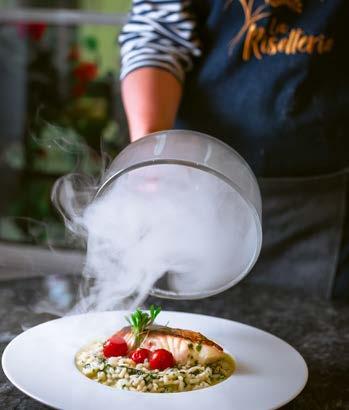

Though initially sceptical, Sérgio ventured into wedding photography and found it unexpectedly rewarding. Capturing raw emotions in authentic moments became his focus, steering away from traditionally posed wedding photos. His reportage style of wedding photography resonated with couples tying the knot, earning him the top ranking on Wezoree (a global platform connecting couples with top-tier wedding suppliers) for wedding photographers in the Algarve.
Sérgio says: “For many years, I’ve been breaking the rules of wedding photography alongside my couples, capturing love with the soul of analogue film and a cinematic aesthetic.” Ah, the good old days of 35mm film and patiently waiting for a Polaroid to develop, I remember them well from my own days as a magazine fashion editor!
While he continues to work on national and international advertising projects from his studio in Lisbon, Sérgio’s true passion lies in capturing the essence of the moment – whether it’s the elation of a wedding, a heartfelt family embrace, a tearful beach front engagement, or the breathtaking beauty of the Algarve’s coastline. “For me, photography is about the story you tell in a split second,” Sérgio reflects. “It’s about capturing raw emotion, whether that’s a joyous wedding moment or the serene beauty of nature.”
When asked for his top recommendations for engagement locations, Sérgio emphasises timing above all – sunrise or sunset being the key to the most magical light and intimate settings. “I approach each shoot like a fashion editorial, with attention to detail and a deep understanding of light and composition,” Sérgio explains. Don’t tell too many people, but his favourite spots in the Algarve are the Arco de Albandeira, Algar Seco, Farol de Alfanzina, Praia da Marinha, and the iconic Cabeça de Godzilla rock formation at Praia de São Rafael.
Sérgio’s artistic vision and meticulous attention to detail have earned him a loyal clientele, not just among engaged couples and families but among international brands looking for the perfect backdrop for their advertising campaigns. “Photography is about balance,” Sérgio explains. “It’s 50% technical skill, and 50% cultural vision – seeing the world through your own perspective and conveying that through the lens.”
Not content with fashion, food, and portraiture, Sérgio ventured into real estate photography. Putting his creative stamp on what can be a rinse and repeat style of photography. “Photography isn’t just about pressing a button,” Sérgio says. “It’s about seeing the world in a different way and translating that vision into an image that speaks to people.”
Sérgio’s approach showcases lighting, texture, and emotion, qualities that elevate real estate photography beyond mere documentation to true artistry. He let me in on his trusted technique, but I’ll leave that for you to wonder at. After all, I don’t want to give away too many of his tricks of the trade!
Despite his success, Sérgio remains deeply humble and constantly strives to refine his craft. “I always want to challenge myself to grow,” Sérgio says. “Every shoot is an opportunity to learn, whether it’s experimenting with new methods or revisiting old ones.” He continues to experiment with new techniques, incorporating elements of film photography and digital editing to create timeless images. Whether he is shooting an intimate proposal on a secluded beach or a high-profile editorial spread, his approach remains the same – to tell a story through the lens. “I see my clients as collaborators,” he says. “Together, we create something that is uniquely theirs.”
Today, Sérgio is rocking multiple photography subjects and styles, all while keeping his love for storytelling at the heart of his work. He continues to take on diverse projects, from Algarve weddings to national and international advertising projects, while also planning new exhibitions that explore cultural identity and human connection. Whether it’s food, fashion, portraits, or real estate, his photos have a unique depth that grabs the attention of both clients and audiences. His journey from hospitality to well-known photographer shows just how powerful passion, adaptability, and a willingness to learn new skills can be. It’s proof that the best journeys are often the ones we never planned to take.

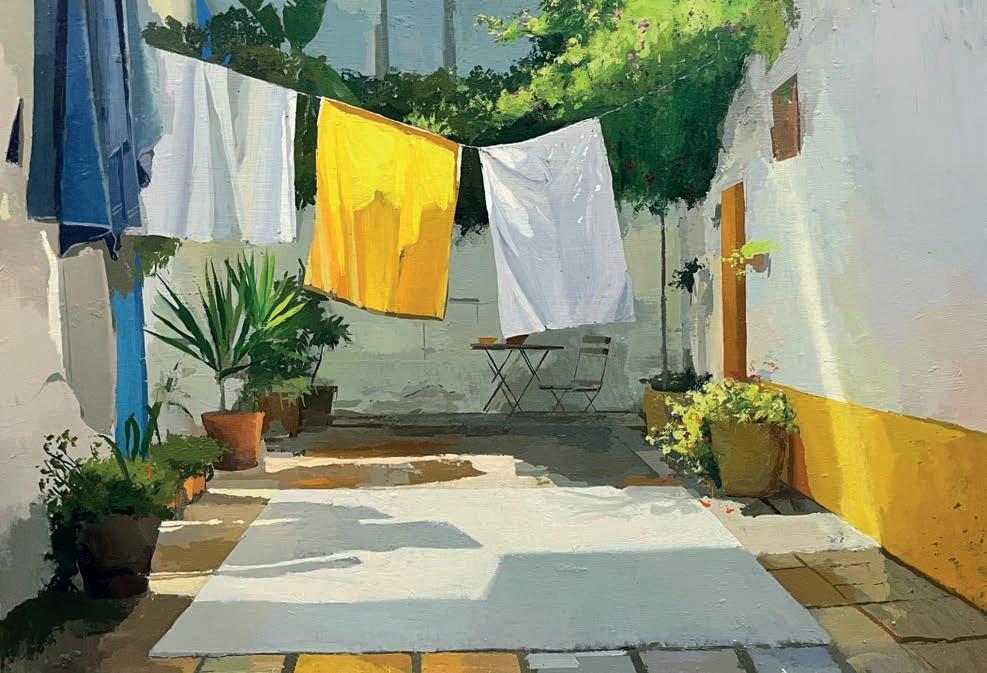




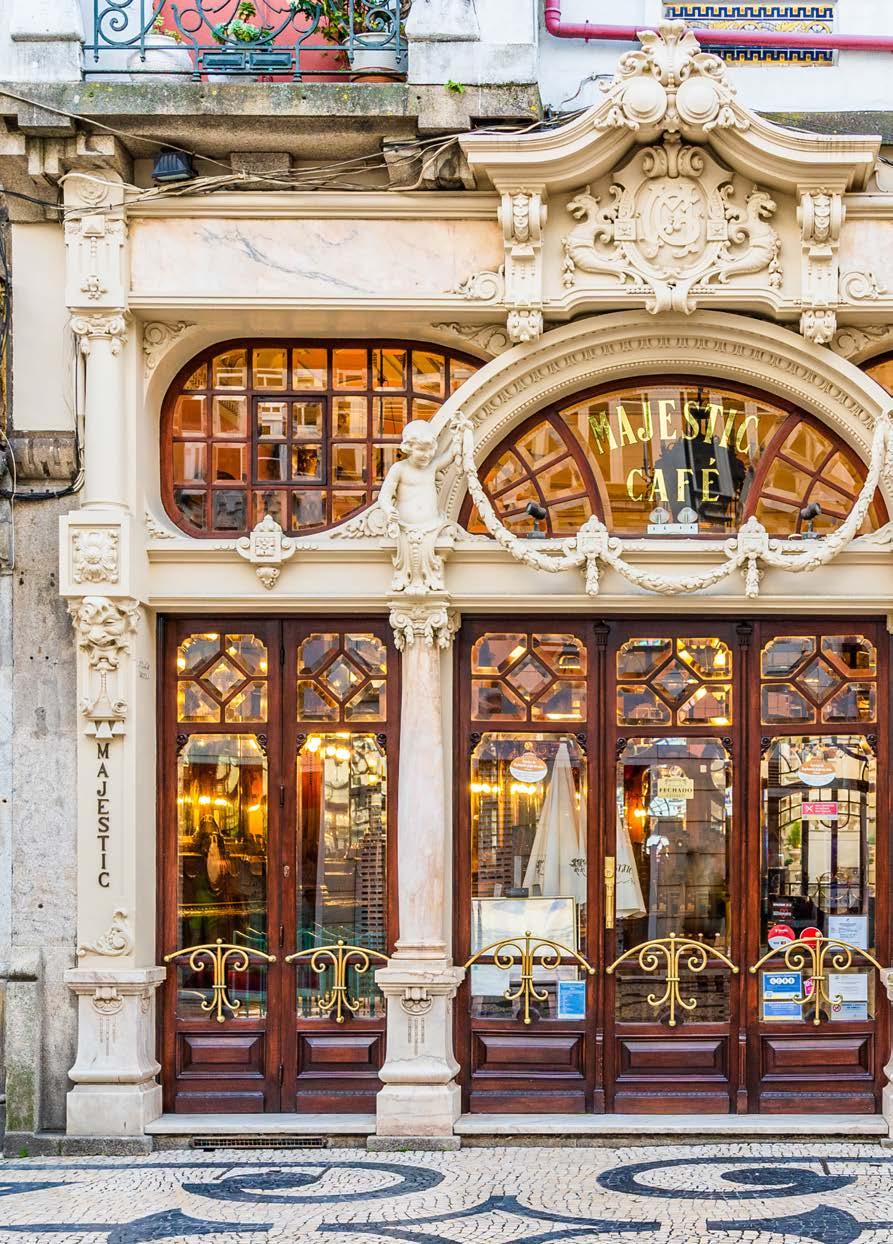
FANCY A COFFEE? FANCY IT IN ONE OF THE OLDEST AND HISTORICALLY IMPORTANT COFFEE HOUSES IN PORTUGAL? HERE ’ S OUR GUIDE TO THE WAY THEY WERE, AND STILL REMAIN AMONG THE CITY HOT SPOTS
Words: LUCY MAYER
Porto
Number 112 Rua de Santa Catarina is home to the Café Majestic, which is deeply rooted in the history of the 1920s when it enjoyed its first heyday. The business, known then as Café Elite, was formed in December 1921 by a group of merchants from Porto and opened a year later in December 1922 as the newly rebranded Majestic Café. The café says its base in Santa Catarina street was perfectly planned as the route was frequented by “the finest members of society” who would sit and drink tea and eat ice cream. Many tourists and locals still flock to the café to discover its history, not only as a café, but as an architectural landmark within Porto. Majestic was the brainchild of architect João Queirós who wanted to create the atmosphere of a chic café, bringing a little bit of Paris to Portugal. At the time, it was a perfect example of the popular café-cum-talking shop, where the
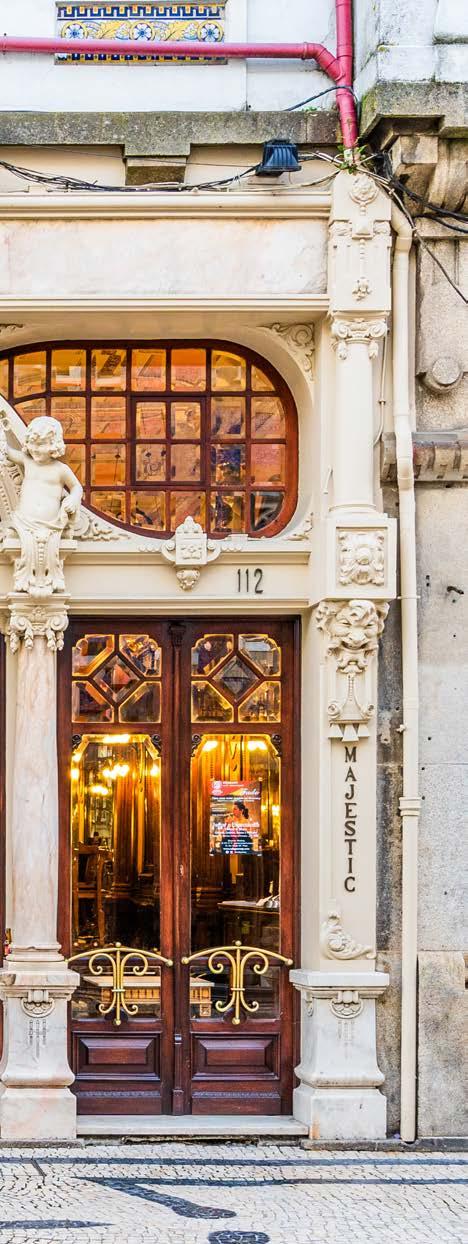
intellectual elite and artists would gather. One of the café’s most famous patrons is recorded for prosperity as pilot aviator, and later Admiral, Gago Coutinho. He was said to be so enamoured by the place that he visited it every time he was in the city, and took many guests with him including a famous actress. Poet Teixeira de Pascoaes and philosopher Leonardo Coimbra were among the other notable patrons.
The Majestic went into a decline of sorts in the 1960s and in 1983 was declared a Public Interest Building. But it wasn’t until the 90s when it finally underwent a revamp and in July 1994 reopened to the public with its former glory maintained and cultural activities returned. Think piano concertos, poetry readings and painting exhibitions. Today, the Majestic is considered one of the most beautiful and meaningful examples of Art Nouveau in Porto.
Loulé
Café Calcinha, located on the picturesque Praça da República, just a stone’s throw away from the historic Castle towers and the famous municipal market, has a long and interesting history. Opening in 1929 to cater for the wealthy businessmen who came to the area to trade, it would eventually allow poorer people in, albeit it in a different section and not until much later.
The café was founded by José Domingos Cavaco, whose nickname was Calcinha, and was modelled on a Brazilian coffee shop from the same time period. On the street in front of the café, you’ll find a bronze statue of António Aleixio, an early 20th century poet, seated at his own table. Despite his limited financial means, he was welcomed as a patron of the café where he did his writing and was also a good fit with the late-night bohemian crowd that frequented Calcinha in the early days.
Aleixio died in Loulé in 1949, and his much-photographed statue now keeps faithful watch from its outside spot day and night. It would, however, not be until the 1960s that women were finally allowed in Calcinha, and then in the 70s, the café had a renaissance when it was used for cultural events, recitals and conferences, attracting a whole new crowd to the space. The café underwent a bit of a transformation in 2016 after the Municipality of Loulé acquired the property and began a conservation project to protect it as a cultural and historical landmark. Today, one of the café’s biggest draws is its famous Folhado de Loulé, a folded puff pastry and a treat as famous as the café it is served in.
Situated in the heart of Faro near to the marina, this palatial café is one of the gems in the Algarve capital’s crown. It’s traditional and ornate architecture is a huge reminder of its rich history. Referred to as Faro’s oldest grand café and the third oldest in Portugal, not only did it start life as a coffee house, but today, there’s a cocktail bar, food service and brewery, making it a classic Portuguese Cervejaria. Opened in 1908, the Café once served as one of the town’s biggest cosmopolitan meeting places. Set over an impressive, and imposing, three storeys, this grand building, with traditional cobbled courtyard, gives way to a classic wood-panelled interior. Over the years, Grand Café Aliança has welcomed well-known figures such as feminist writer Simone de Beauvoir, novelist Marguerite Yourcenar, and singer and poet José Afonso, who became the face of the Portuguese revolution in 1974. Fans of opera were treated to a live concert and light show on the balcony last year.
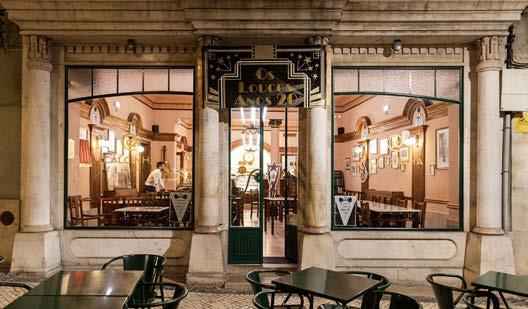
Braga
Take a trip to the far north of Portugal and you can’t help but happily stumble across the town of Braga; and right in its heart, Café Astória, one of the oldest and most emblematic cafés in the city, believed to have been serving customers for well over 100 years. The café is a hotspot for tourists and the locals, known as Bracarenses, who love the mix of past and present with its beautiful, classic and detailed ceilings, which preside over a more contemporary dining space.
The café-cum-restaurant sits in the heart of the city’s historic centre and as night falls, the atmosphere in Praça da República changes and the restaurant comes alive in a different way. The main bistro is situated on the ground floor with a terrace and outdoor eating area. On the middle floor, there are two exclusive rooms: The Arcade Table, which provides an intimate dining area and private corner which is integrated into the old city wall and perfect for special occasions. Then there’s the group room for bigger gatherings ,before you find the rooftop on the third floor which gives way to breathtaking views of Braga. The café’s motto is O lugar da tua história (the place of your story) which is a clear invitation to visitors to create their own stories in one of Braga’s most historic venues.
Vila Real de Santo António
The Grand Café is doing exactly what it says: “reviving an icon”. This café is based within a hotel and restaurant set on a beautiful waterfront promenade and yacht harbour and prides itself on serving signature treats in the oldest building in town. The new Grand Café is based in the historic customs house known as ‘Alfândega’, which is the town’s oldest building. Although this place is new, it brings with it a large and rich history. Today, it is run by the five-star Relais & Châteaux which it seems, is keen to pay homage to the town’s fishing roots.
In 1853, when Sebastian Ramirez established the country’s first factory for producing jute and canned fish, he catapulted Vila Real de Santo António into prominence as the Portuguese hub of the canning industry. Ramirez not only laid the groundwork for the Portuguese canned food sector but also made a significant mark on the country’s hotel business with the creation of one of its most cherished treasures, the Grand House Hotel. The Alfândega was the first structure completed during the construction of Vila Real de Santo António. Its primary purpose was to facilitate the taxation of transactions with Spain and to deter smuggling.
A Brasileira opened in November 1905 in Chiado, now Lisbon’s vibrant shopping and theatre hub. The building started life as a shirt shop but was taken over by Adriano Telles do Valle, a Portuguese emigrant who married the daughter of one of the largest coffee producers in Brazil after travelling there in 1872. Telles returned to Portugal in 1898 and brought his coffee business with him. At the time, it is claimed that coffee was a beverage mostly unknown to the Portuguese and disliked due to its bitterness.
Manuel Norte Júnior, one the most regarded architects of his generation, was put in charge of creating a Brasiliera’s façade and the coffee house was known for attracting the

likes of lawyers, doctors, teachers, writers, and artists. The revolutionaries who took part in establishing the Republic in 1910 also met here. A Brasileira’s connection with coffee is deep rooted; it’s said that it was the birthplace of the term bica, which stands for beba isso com açúcar, meaning ‘drink it with sugar’. A Brasileira is said to be one of only three that survived the entire 20th century and remained open. It holds a ‘Stores with History’ award handed to it in 2017 by the city council to recognise its place as a true historical landmark and preserve it for future generations.
Coimbra
“A coffee with history, a coffee with memory” is the way that Café Santa Cruz wants you to think of its star beverage, and you’ve probably never visited a café as rich in both history and coffee as this place. Head to Coimbra, Portugal’s former capital city, and not only will you find the beautiful old church of St. John of Santa Cruz, which was part of the Monastery of Santa Cruz, but the café located within it. Opened in 1923, this is a Coimbra landmark; a place that maintains the architecture of a monastery dating back to the mid-1500s, but with all the mod-cons of a European café. There’s the original high-vaulted Portuguese Gothic ceiling of the chapel, stained-glass windows, wood panelling and marble tops.
The driving forces behind the original restoration project were Adriano Ferreira da Cunha, Adriano Viegas da Cunha Lucas and Mário Pais who wanted to restore a monument that had fallen into disrepair over time and create a meeting place for the people of the town. The process was lengthy, and the eventual inauguration of the Café-Restaurante Santa Cruz in Praça 8 de Maio took place on 8 May 1923.
Many years later, in 2001, extensive maintenance and conservation work was once again carried out, this time by architects Luísa Marques and Miguel Pedreiro. The old main chapel, which had been closed off to the public, was opened up and it became the setting for many events. All of the vision and hard work paid off when in June 2017 Café Santa Cruz was included in the Tourism Guide for the Central Region, published by Jornal de Notícias, for its heritage and cultural ties.
The café, in its truly unique setting, was once the meeting place for students from the University of Coimbra but is frequented by locals and tourists passing through. There’s an outside terrace for Fado concerts, debates and urban craft shows. It may have been used in several films, adverts and TV shows, but it is its humble beginnings, as a place for those who want to settle down with the day’s newspaper and a good coffee, for which it is most admired and loved.


BRUTALISM, AN ARCHITECTURAL STYLE OF THE 50S TO THE MID-70S, ONCE CRITICISED FOR BEING IMPERSONAL, HAS EXPERIENCED A REMARKABLE REVIVAL IN RECENT YEARS AND IS NOW HIGHLY APPRECIATED FOR ITS UNIQUENESS AND AESTHETIC VALUE IN AN INCREASINGLY UNIFORM WORLD
Words: WILL KOHLEN
IN BRUTALISM, the concrete of a building is left unfinished. The term comes from the French term béton brut meaning rough, unworked concrete. Often, the imprint of the wooden slats of the formwork is still visible in the surface of the concrete. Fans appreciate Brutalism’s sculptural and imposing monument character, others just find it intimidating.
The role of film and games in popularising brutalist architecture cannot be denied. Films like A Clockwork Orange, The Great Lebowski and Blade Runner 2049 not only introduced these buildings into popular culture, but also helped create the specific and often futuristic atmosphere and emotion surrounding the distinctive stories they tell.
Some ten years ago, British TV personality Jonathan Meades, pontificating on screen in an outfit reminiscent of the Blues Brothers, was one of the first to introduce the general public to Brutalism in the BBC series Concrete Poetry.
During his introduction, after dismissing French architect Le Corbusier, the father of Brutalism, as a megalomaniac and opportunistic architect especially good at ‘stealing’ other people’s ideas, Meades emphasised that Le Corbusier’s Unité d'Habitation was called “the House of the Mad” by the inhabitants of Marseille, setting the tone of the BBC series.
However, it was director Brady Corbet who recently won a Golden Globe for directing, and several other awards and nominations at the Venice International Film Festival with his film The Brutalist, about the life of brutalist architect, Laszlo Toth (played by Adrian Brody), a Hungarian architect of Jewish origin who, after surviving several concentration camps, decided to flee the country and the Soviet threat in order to pursue his American dream. The movie tells of his career and the design of one of his most ambitious and extraordinary projects. But don’t try to find Laszlo Toth’s name in Google – he never existed.
Brutalism in Portugal
Portugal, unlike the more northern countries and the former Eastern Bloc, is not really known for its brutalist buildings. A survey map from the website sosbrutalism.com lists the most famous brutalist buildings worldwide. More than 2,000 in total. Portugal has only a modest share with 11. Here are my top three – all of them in Lisbon – that I think most closely approximate the brutalist style.
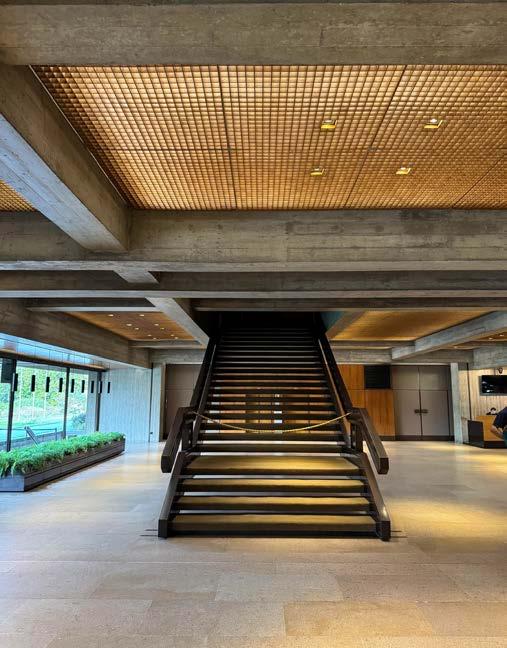

The Museum of the Calouste Gulbenkian Foundation is at the top of my list. In 1959, a competition was held among architects to design a new museum to house the Calouste Gulbenkian Foundation’s extensive collection of ancient and modern art.
It was the team consisting of architects Alberto J. Pessoa, Pedro Cid and Ruy Jervis d’Athouguia that won the competition in collaboration with landscape architects Antonio Viana Barreto and Gonçalo Ribeiro Telles.
The winning architects’ design, in a soft brutalist style, met the brief to come up with a sober and dignified building with a uniform architectural appearance. The building complex is grouped around the lake in Gulbenkian Park, surrounded by lush greenery. The horizontally articulated buildings,
partly due to the planting on the buildings themselves, almost completely blend into their surroundings. Large concrete slabs form paths that wind through the park to connect the buildings. This is an Arcadian whole with the concrete structures, like flattened rock formations, rising out of paradise.
During my stay in Portugal in 1986 to master the Portuguese language at the Instituto da Língua Portuguesa in Lisbon, before working as an architect in Mozambique, the Gulbenkian park was my favourite study spot. Here, sitting on a bench in the shade under a dense tree or lying in the grass, I hammered in my conjugations and irregular verbs, while the ducks crossed the lawn in concerted strides before disappearing again among the reeds of the pond opposite.
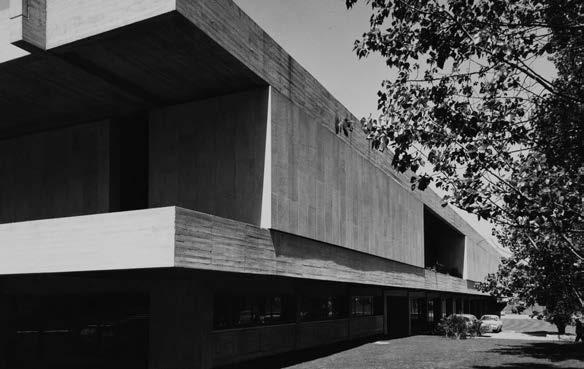
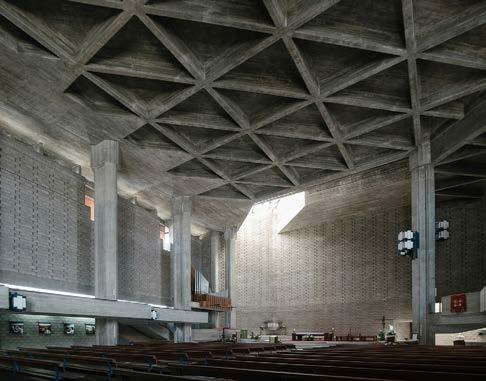
A surprising religious architecture for its time, the work of architects Nuno Portas and Nuno Teotónio Pereira distinguishes it from the traditional models and historical stigmas that characterised church building in Portugal until then. The church and parish centre combine urbanity and a bespoke urban infill, partly through the public space of connection and access created between the two streets bordering the church on either side – a spatial translation of ideas about community and religious participation, as envisaged in the spirit of the then innovative Second Vatican Council. Not a well-behaved centrepiece with side aisles and a main altar, but a cosmopolitan church in a brutal concrete reality surrounded by surprising light incidences, tall columns and high ceilings.
The Church of the Sacred Heart of Jesus is a unique work within 20th-century Portuguese architecture awarded the Valmor prize (annual Portuguese architecture award) in 1975 and recognised as a National Monument in 2010. The street forms an enclosed integrated open space where architecture and urbanism meet. Refined in terms of spatiality, detail and light, experimenting with raw concrete yields the necessary surprises.
A church that architecturally opens up to the city. You see it in every detail, at every step of the project. Here, the sacred space is integrated into the urban fabric. The concrete illustrates the brutalist language used in the design. It looks refined, almost delicate in places. The rough textures disappear when you see the space as a whole, creating a different backdrop for this place with a spiritual dimension.
During my time studying languages in Lisbon, I met one of the architects of this church. I was kindly received by a somewhat older architect in his modest office on Rua da Alegria. After I told him that I was going to work in Mozambique as an architect for the Council of Churches, he immediately gave me a magazine about the Portuguese architect Pancho Guedes, who realised the most fantastic architectural projects in Mozambique in some 25 different styles until the 1975 revolution. This magazine, with the theme: The Vitruvius of Mozambique, has subsequently been my guide in discovering the work and giving various tours of his ‘modernist’ works in Maputo. Only many years later did I discover that architect Nuno Teotónio Pereira, that old friendly man who had put me on the trail of Pancho Guedes, was himself one of Portugal’s most famous architects.
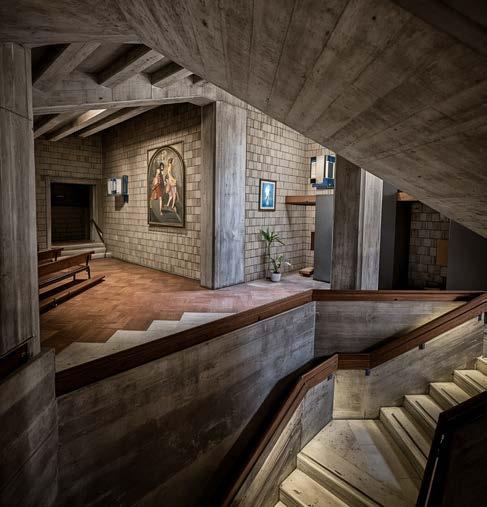
My third favourite is the Palace of Justice. Inaugurated in 1970, the complex of court buildings on Rua Marquês de Fronteira in Lisbon was designed in 1962 by architects Januário Godinho and João Andresen. Here too, we can argue about the term Brutalism, as it incorporates the necessary natural stone in addition to the rough concrete and typical Portuguese tile tableaux by artist Querubim Lapa. The beauty of this structure lies in the subtle details – the repetitive patterns of squares, rectangles and circles used in both the façade and paving in overlapping circles.
The building was part of a plan for a larger complex, which was not fully built. The set breaks with the tradition of the Palaces of Justice and is characterised by the modern architectural language of the time, which has great conceptual originality. The public spaces have received due attention in the design. The imposing wraparound colonnade in relation to the square is particularly impressive. The alternating play of the transparent COBO-like (Brazilian open brick) façade and the tower-shaped stairwells on both sides in the longitudinal façade, give the building a characteristic appearance.
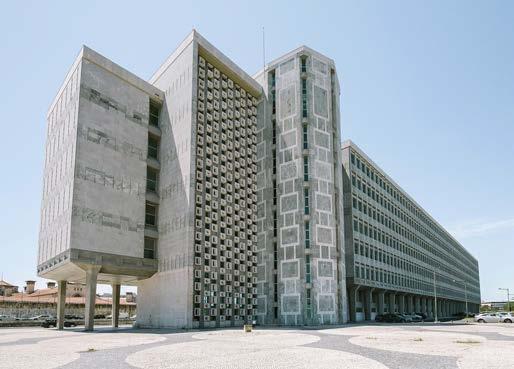
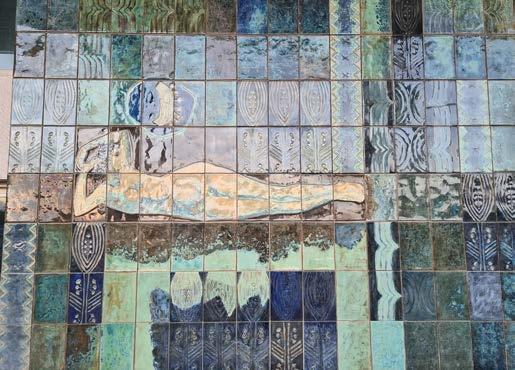



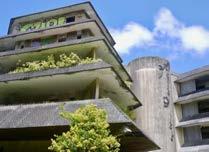
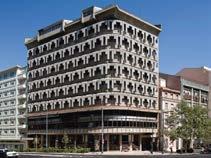



1. Igreja de Nossa Senhora da Boavista 1979, Porto, by Agostinho Ricca
2. Edifício Franjinhas 1971, Lisbon, by Nuno Teotónio Pereira and João Braula Reis
3. Mercado de São Sebastião (facing demolition) 1986, Porto, by António Moura
4. Edificio Winterthur (now: Liberty Seguros) 1970, Lisbon, by architects António Gomez Egêa and Lonel Schein
5. José Gomes Ferreira Secondary School 1980, Benfica Lisbon, by Raul Hestnes Ferreira and Jorge Gouveia
6. Church Nossa Senhora da Conceição 1988, Lisbon, by Pedro Vieira de Almeida
7. Hotel Monte Palace San Miguel (abandoned) 1984, Sete Cidades, Azores, by Olivier Clément Cacoub and Yves Roa
8. Edifício Caleidoscópio (renovated) 1971, Lisbon, by Nuno San Payo
You won’t find any buildings in the Algarve on the various websites on Brutalism. However, there are a number of striking buildings that do have ‘characteristics’ of Brutalism in certain parts, such as balconies and entrance areas which are made of raw concrete straight out of the box. Sometimes it is the unusual design that makes these buildings stand out, such as this 'green' one in Faro near the bus station.


SHARING PLANTS AND PLANT STORIES WITH FRIENDS IS HUGELY ENJOYABLE, ESPECIALLY WHEN DIFFERENT TECHNIQUES AND CONDITIONS COME INTO PLAY AND PRODUCE EQUALLY IMPRESSIVE RESULTS
Words: BURFORD HURRY
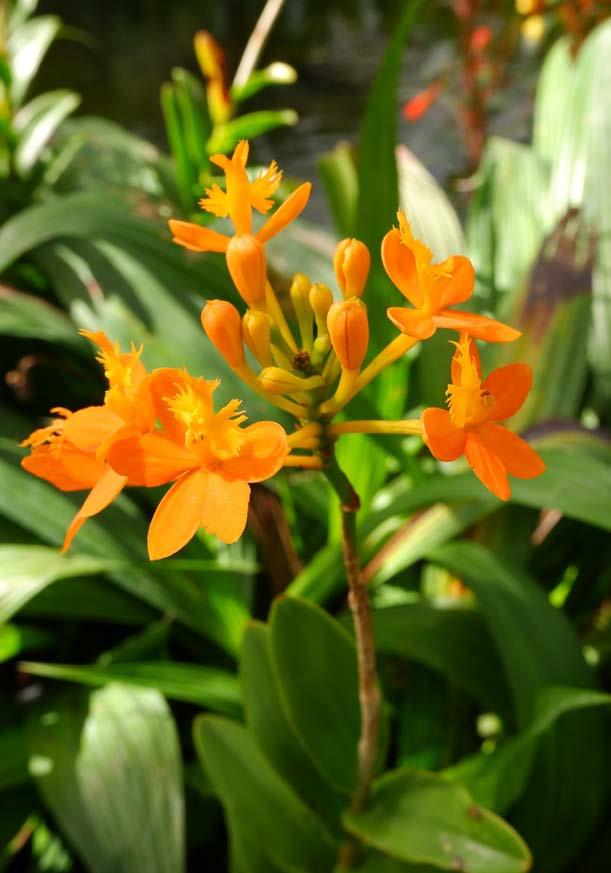
MY INTEREST in orchids goes back to when I was growing up in Joburg and the day I was told by my mother that she had been to an exhibition of the most amazing paintings by Vladimir Tretchikoff. She mentioned that she had been tempted to buy one called The Lost Orchid, probably the most well-known of the paintings on show. I don’t think it was true as mom was occasionally given to flights of fancy and we could never have afforded it... but it’s a nice thought. This painting, executed in Tretchikoff’s radiant photographic style, was of an uncrushed cattleya orchid lying on stone steps with two glowing rain drops on her petalled throat and two more on the stone step below her, almost as if they were her tears. An idea I am sure any other eight-year-old would also have found fascinating. I was hooked.
Since then I have always grown an orchid or two, usually in pots in my garden. In Zimbabwe they were mostly cymbidium and, where I had a small cool house, a couple of perfumed cattleyas.
When I arrived in Loulé a couple of cymbidiums came with me. As there were no commercially produced orchid mixes available at the time I quickly found a source for their open well drained potting medium. I chipped off small pieces of bark from fallen pine trees, kept an eye open for dried bracken fern in Monchique or the hills behind Loulé, river sand at local building sites and added small walnut-sized pieces of charcoal to keep the mixture sweet. In pots, they adapted easily first to an apartment veranda, then a quintal and finally a garden terrace. These days I put them out

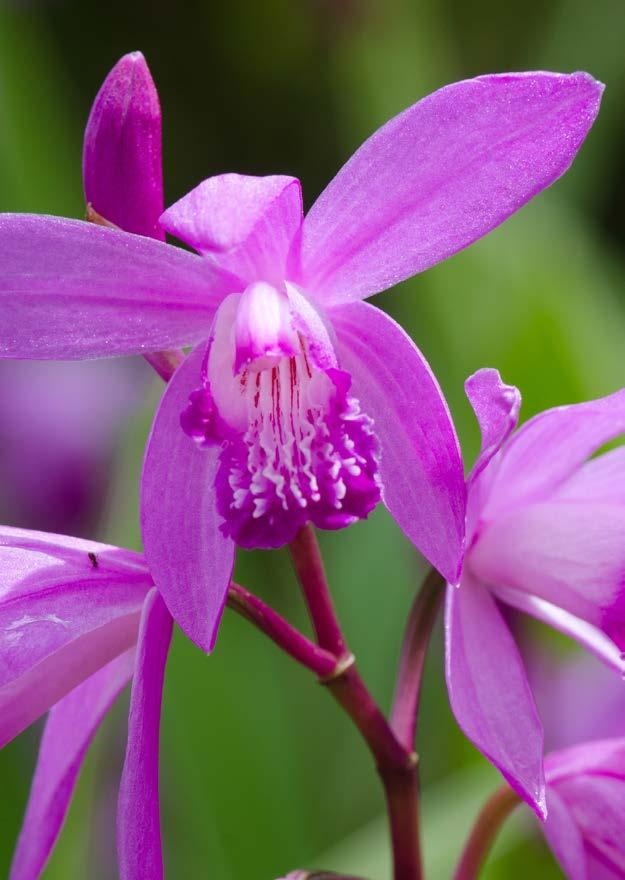
Page 72: Phaius tancarvilleae. Page 73, top left, clockwise: Epidendrum radicans; African ansellia Leopard orchid; Bletilla striata (Chinese Ground Orchid).
This page, left: Vanda orchid; right: The Lost Orchid Painting by Vladimir Tretchikoff

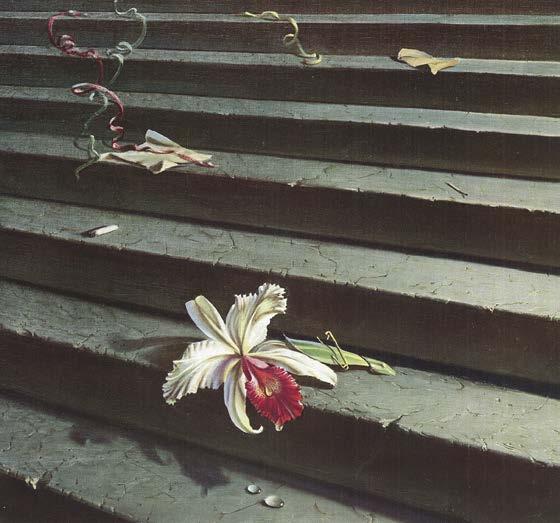
Under my cypress tree and in a large pot in the shade I have a large leafed, very handsome Nuns’-hood orchid, Phaius tancarvilleae. She is an upright orchid that enjoys reasonably shady conditions and is easily grown in a well-drained but humus rich potting mix
in the garden. In order to flower they need morning sunshine, after that the sun becomes too strong for them and their leaves burn. I grow them in pots but Brian, my friend in the lower Alentejo, grows them successfully in suitably positioned, well drained beds. If you would like to do the same, see that you change the ‘soil’ that they grow in by replacing it with a mix of chips of pine bark, river sand and some leafy compost. There is also a commercial brand that sells a cymbidium mix.
Brian also has a small beautiful patch of pale mauve ground orchids (Bletilla striata) in the garden. I had given him a potful years earlier, which he had then planted in the ground. They were growing in full sunshine and looked lovely. Mine are still in pots, although every year I threaten to plant them out.
Years ago, I was given a pot of a large flowering Macrantha (Sobralia macrantha), another terrestrial orchid. Throughout the year, I have on display a miniforest of attractive 50 centimetre, elegant canes with green, bamboo-like leaves in a large pot under the olive tree. Come summer the tips of the canes have a succession of one or two flowers. Mine are large and a showy, blowsy white and pale pink, and although they do not last more than a couple of days, they flower in quick succession. They need watering every two days in our
hot dry summers as, although they are thick-rooted, they don’t have pseudo bulbs like cymbidiums. They are also best left in their pot or in their space in the garden for years as they resent being disturbed.
Under my cypress tree and in a large pot in the shade of a tangle of plumbago and buddleia leaves I have a large leafed, very handsome Nuns’-hood orchid, (Phaius tancarvilleae). She is an upright orchid that enjoys reasonably shady conditions and is easily grown in a well-drained but humus rich potting mix. Her tall, large spikes of long lasting flowers occur in spring.
Another outdoor orchid that thrives here is the Epidendrum. Her flowers are tiny but they arrive in cheerful profusion, flowering up long canes in a wide range of colours such as orange, yellow, red, purple and white. Epidendrums are epiphytic and they can grow in a free draining variety of soils. A common mix is one that contains small chips of pine bark and river sand with a dash of home compost. They need watering in summer, however should be kept on the dry side. They can also take sun but their leathery and waxy leaves can burn so grow them in a space that doesn’t have full sun all day. Harriet grows hers close to the trunk of an old carob; Margaret has hers next to an elevated water tank. They are all flourishing. Like the Sobralia mentioned earlier, they don’t like to be moved or repotted so if you have them in a pot or in a space in the garden that suits them, leave them there and their tiny flowers will reward you with continuous bursts of colour.
I have now decided to branch out and try growing more orchids using my trees and shrubs. I have been inspired by my friend William, in Mediterranean Stellenbosch in the Cape. I have started with a Leopard orchid (Ansellia africana), which I remember from South Africa, and William has several of these growing easily in his garden. Like many orchids, they are epiphytic and in the wild they live on tree branches, their roots invading the surface of their
hosts, finding sustenance from rain and dust.
William finds his orchids are happiest when they are planted where they get the morning sun only. I have planted mine facing east in between the lowest branches of my olive tree. She is tied with sisal string, her bare roots against the trunk with nothing else than sphagnum moss to temporarily protect them .
One of the loveliest of William’s orchids and reasonably easy to grow are Laelia anceps. They are hardy, droughtresisting orchids which come from east Mexico. William grows his on the trunk of a shrub – Allamanda Allamanda schottii – in well drained coarse orchid mix together with a medium grade of pine bark and some small-sized pieces of charcoal held in place by a pocket of coconut matting and tied to the trunk of the tree with thin strips of women’s stockings in dappled sunlight. Good drainage is important as she is watered regularly in the hot weather and, although much less so in the winter, she is susceptible to root rot. As they are heavy feeders, she is fed at least once a month in the hot weather with an orchid fertilizer.
The time of planting is also very important. It is best done right when a flush of new roots appears. It is essential that the roots are given a chance to get established in the new mix in order to get a strong flowering. If you wait too long, the flower spikes will actually begin to appear, even though the bulbs are not mature. Don’t worry; the plant will establish herself very quickly.
The pink rock orchid (Dendrobium kingianum) is another lovely orchid grown by William. She is endemic to Eastern Australia and planted low down in a tree fuchsia (Halleria lucida) where the tree divides. This orchid is actually a lithophyte, growing on stones, so William uses a coarse medium consisting of pine bark and river stones. She is watered early in the day in spring and summer when the compost starts to dry out. Winter watering depends on the rainfall, and is minimal, just enough to stop the canes from shrivelling.




D Kingianum will grow at any light level, but strong light is required for full potential. In low light levels this orchid will not bloom; a sign of adequate light is a red tinge to the leaves. If the foliage is very dark green, it means the orchid isn’t receiving enough light. She also likes to be fed. William recommends a balanced feed every two weeks using half the recommended strength for other house plants.
Other very glamorous orchids found in William’s garden are Vandas. He grows them with little or no potting medium in wooden slatted hanging baskets as they have extremely long roots.
Their challenge is that they like 80 percent humidity, which means in summer they are watered daily. They are also fed with a balanced fertiliser once a month. However, they are worth the challenge.
If you are tempted to grow orchids al fresco there is an Associação Portuguesa de Orquidofilia (A.P.O.) that organises a large and important orchid show in Porto every year, as well as orchid shows throughout the country. In fact, there has been an excellent annual show in Loulé for the past two years. In addition, MGAP often has a nice selection of orchids and tillandsias at their annual Autumn fairs. So why not take up the challenge and give your garden a delicate splash of exquisite and fragile beauty. You will find it worthwhile.




t. +351 917 203 850 . design@suzisteinhofel.com . www.designworks.com.pt

FORGET FANCY SUPPLEMENTS, ONE OF THE MOST POWERFUL TOOLS FOR HEALTH MIGHT JUST BE GETTING IN SYNC WITH YOUR INTERNAL TIMEKEEPER. HERE'S HOW TUNING INTO YOUR CIRCADIAN RHYTHMS COULD BE THE KEY TO BETTER WELLBEING
Words: SALLY DIXON
EVER FOUND yourself wide awake at 3am scrolling through social media despite desperately needing sleep? Or battling the mid-afternoon energy slump that has you reaching for caffeine or sugar? Your body’s internal clock might be trying to tell you something. Deep within our brain sits a master timekeeper – the suprachiasmatic nucleus (try saying that after a few drinks!) – orchestrating a symphony of biological processes that ebb and flow in roughly 24-hour cycles. Aligning this internal clock with your external environment is the peak of game-changing wellness hacks.
Circadian comes from the Latin words circa (around) and diem (day), meaning ‘around a day.’ These rhythms influence
virtually every system in your body, from hormone release and body temperature to eating habits and sleep patterns. They're the reason jet lag hits so hard; why night shift workers often struggle with health issues; and possibly why that 6am alarm feels like a slap in the face on some mornings. If you’re consistently out of whack with your circadian rhythms, then you’re bound to feel it.
Crazy work schedules, hardcore socialising, artificial lighting, late-night Netflix binges, eating a three-course meal at 10pm (I’m looking at you, Europeans). What do they all have in common? The potential to cause havoc with your biological clock. A growing body of research suggests disrupted circadian rhythms may contribute to everything from weight gain and metabolic disorders to compromised immune function and poor mental health.
A 2018 systematic review and meta-analysis found that shift workers had an associated increased risk of obesity and being overweight. Another study from 2020 showed that maintaining regular sleep patterns was linked to higher academic performance in college students, with those having consistent sleep-wake cycles scoring significantly higher on exams. As a parttime student myself, this is one hack I’m fully invested in!
The wellbeing connection
The benefits of harmonising with your circadian rhythms extend far beyond better sleep. Research suggests that circadian rhythm disruptions may be associated with increased symptoms of depression and anxiety. Conversely, stabilising sleep-wake patterns is now considered a first-line intervention for some mood disorders. Your brain’s peak performance follows circadian patterns and so working with these patterns may enhance cognitive performance. Memory consolidation, creative problem-solving, and focus all have optimal windows during a 24hour cycle. When it comes to eating, your body processes food differently, depending on the time of day. Late-night eating, for instance, has been shown to affect insulin sensitivity and fat storage. Your immune system follows circadian patterns too, with certain components being more active at different times of day. Plus, research suggests that circadian disruption may compromise immune response, potentially making you more susceptible to illness. Blue zones (areas of the world where people live exceptionally long lives) share one interesting pattern: residents typically follow lifestyles naturally aligned with circadian rhythms, including early dinners and consistent sleep schedules. Could this be the secret to their longevity?
The benefits of harmonising with your circadian rhythms extend far beyond better sleep. Research suggests that circadian rhythm disruptions may be associated with increased symptoms of depression and anxiety.
Now that I’ve potentially scared the living day lights out of you, are you ready to get your internal timekeeper back on track? Here are some practical, and easy to implement, ways to better align with your circadian rhythms.
Remember, you don’t have to do them all! Small daily habits can add up to big changes.
Follow the 15/15 rule: Get 15 minutes of direct sunlight within 15 minutes of waking up to reset your circadian clock. Have your coffee outside in the Algarvian sun or take a short walk.
Set consistent mealtimes: Try to eat your meals at roughly the same time each day to help regulate your metabolic rhythms.
Maintain consistent sleep-wake times: Even on weekends. I know, I know –that Sunday morning lie-in is tempting, but consistency is king when it comes to circadian health. Try to keep your wake-up time within an hour of your usual schedule, even on days off. “Social jet lag” is a thing!
Be strategic with food timing: Your digestive system isn’t designed for midnight snacks (damn it!). Research suggests limiting eating to a 10-12 hour window may optimise metabolic health. Aim to finish your last meal at least two to three hours before bedtime. Save the 10pm dinner reservations for special occasions.
Create a sleep sanctuary: Keep your bedroom dark, cool (around 18°C), and free from electronics.
Establish a wind-down routine: Dim any lights and engage in calming activities on to two hours before bed.
Time your caffeine: Avoid caffeine after 2pm as it has a half-life of around five hours, potentially leaving you still wired in the evening if you’re a poor metaboliser.
Exercise at the right time: Physical activity can help regulate circadian rhythms, but timing matters. Morning exercise, especially outdoors, helps reinforce wake signals, while intense evening workouts may delay sleep onset for some people.
Dim the lights: Evening light exposure, particularly blue light from screens, suppresses melatonin and tricks your brain into thinking it’s still daytime. Try using blue-light blocking glasses in the evening, install apps that reduce blue light on your devices, or better yet, establish a digital curfew where screens go off one to two hours before bed.
As with any aspect of health, personal experimentation and preference is key. We’re not all designed to be 5am early birds! Your chronotype (whether you’re naturally more of a morning or evening person) has genetic components. While society often celebrates morning people (those in the smug 5am club), understanding and working with your natural chronotype rather than fighting it can be more effective. What works for one person may not work for another. The good news is that our circadian systems are remarkably responsive; even small, consistent changes can yield significant benefits over time. Whether you’re looking to improve sleep, boost energy, enhance mental clarity, or support overall health, paying attention to your body’s internal rhythms might just be the missing piece of your wellbeing puzzle. Inner harmony is only one welltimed sunrise stroll away.

The tranquil village of Monte da Palhagueira in the sun-dappled Portuguese hills has elevated luxury retirement living to new heights.
A traditional development of beautiful villas, houses and apartments, Monte da Palhagueira offers luxury independent retirement living with the added reassurance of qualified medical assistance on hand should it ever be required.
Our English Nursing and Care Home offers a wide range of professional services. From convalescent and respite to full residential care with 24/7 Nursing safety. We offer tailored Person-centric holistic care: it is all about you and your needs.
Contact: Alexandre Neves
mdpmanager@amesburyabbey.com
montedapalhagueira.pt
Tel.: +351 289 990 900


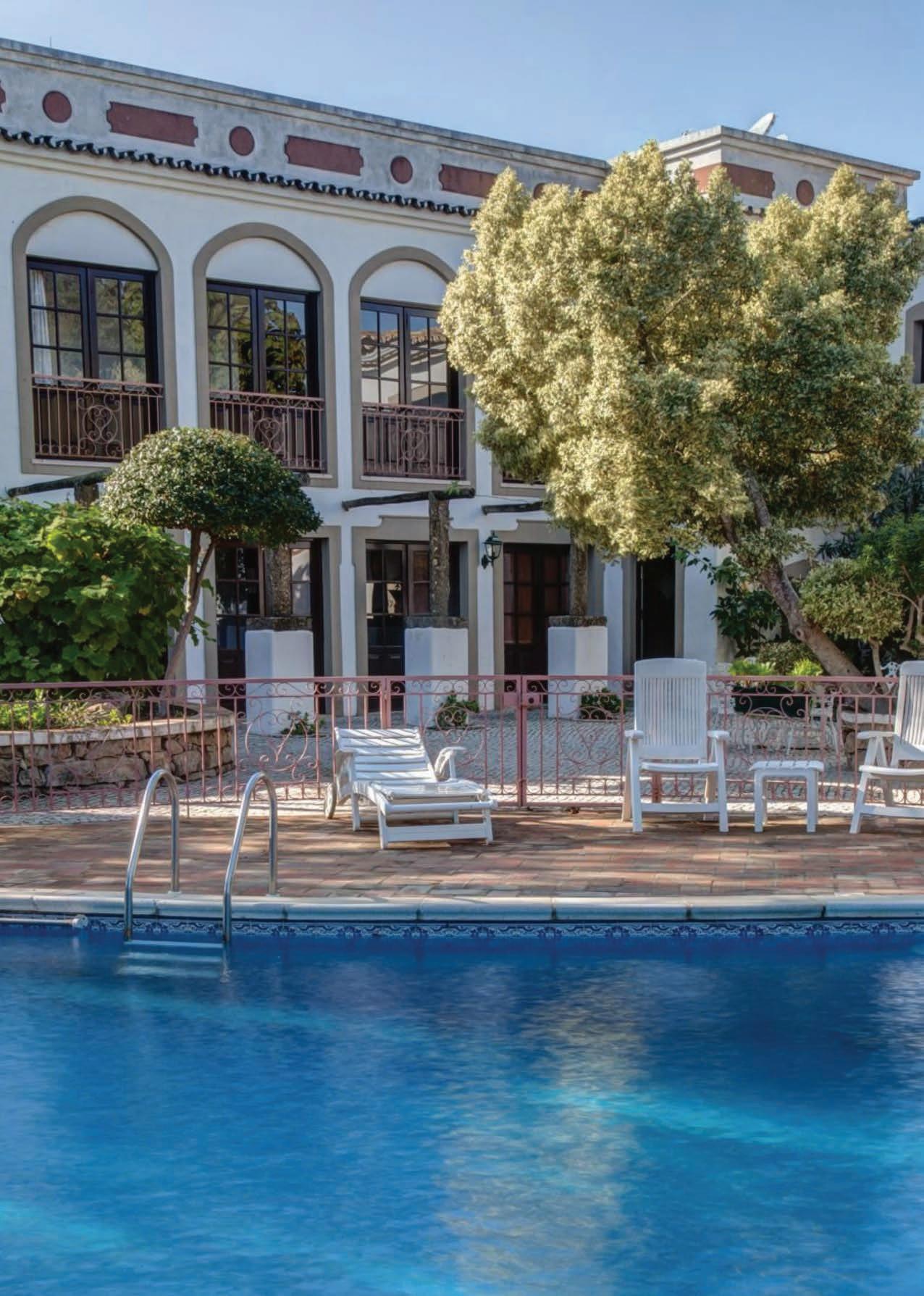
THE PORTUGUESE DICTATOR SALAZAR WAS BACKED BY A BRUTAL POLICE FORCE, THE PIDE. DURING HIS 40-YEAR REIGN OF FEAR, FEW PEOPLE DARED TO CHALLENGE HIM. BUT TWO OF PORTUGAL’S BRAVEST INDIVIDUALS, ARISTIDES DE SOUSA MENDES AND HENRIQUE GALVÃO, MASTERMINDED EVENTS THAT HAPPENED TWO DECADES APART
Words: CAROLYN KAIN
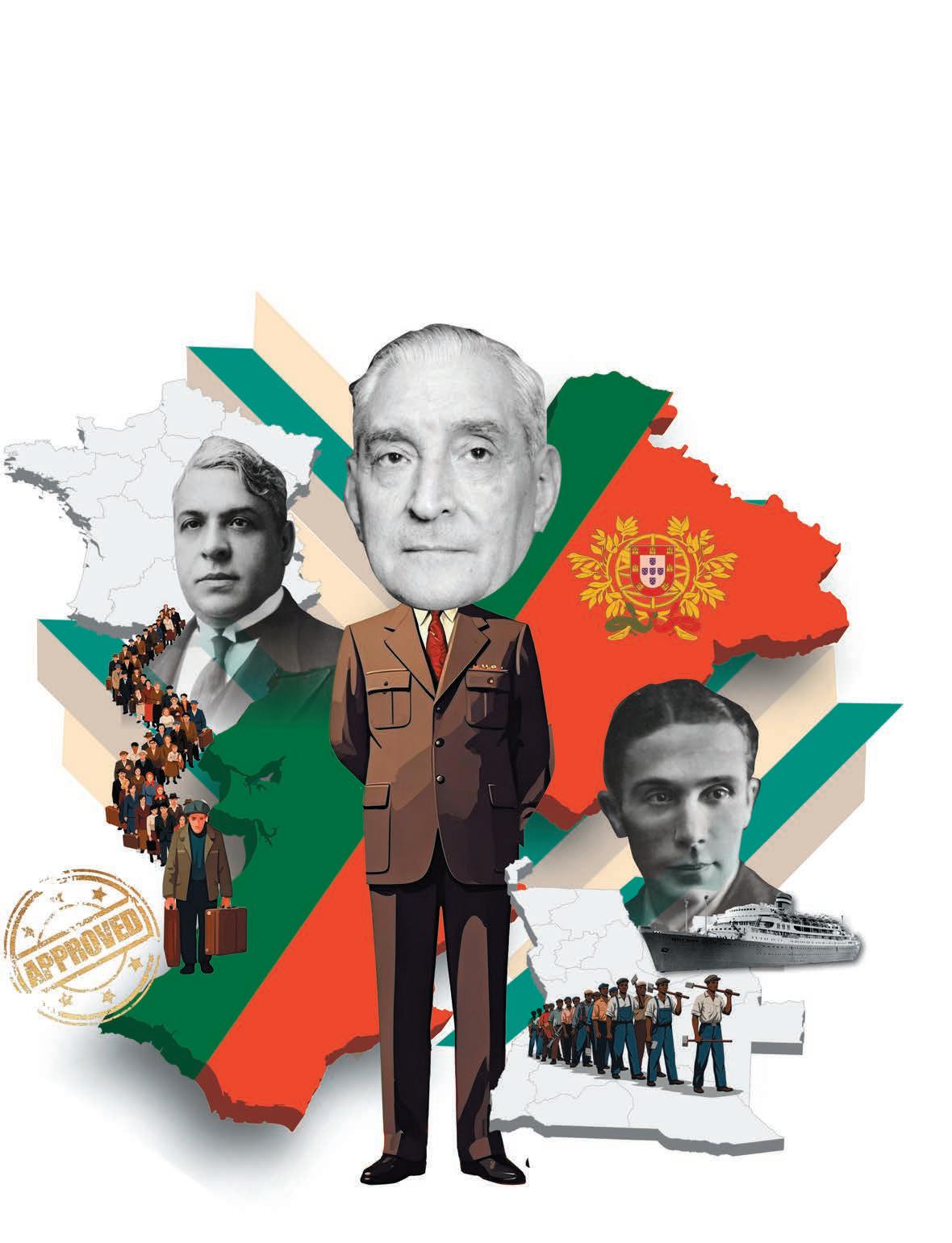
THROUGHOUT the Second World War, Salazar took a neutral stance, but when it ended he declared personal credit for saving the lives of many Jews.
Meanwhile, Aristides de Sousa Mendes, the individual who had done most to help them had already faced a disciplinary hearing, been relieved of all his consular duties and obliged to retire. Salazar made sure he was blacklisted for disobeying orders and he and his family became outcasts in society.
When the German army was close to reaching Paris, Aristides de Sousa Mendes held an important post as Consul-General in Bordeaux. At this point more than six million refugees of all nationalities and religions were fleeing their homes seeking safety elsewhere. Portugal, having neutral status, was an obvious choice.
Afraid that the country could not cope with mass immigration and under the instructions of Salazar, the Portuguese Government distributed Circular 14 restricting the issuing of visas. Despite this order, Aristides granted vast numbers of visas in Bordeaux allowing desperate refugees to travel through Spain and onto Portugal.
In his role as Consul-General he had authority over other consular officials and across Southwest France he advised them to do the same. So, more visas were issued and this included many tens of thousands of Jews who made their way safely to Portugal.
As he knew would happen, his actions reached Salazar and the authorities in Lisbon. He was summoned home in disgrace to be reprimanded at the disciplinary hearing.
When the war ended, Aristides was optimistic that he would be exonerated and reinstated to the consular service. Despite his hopeful expectations he remained a pariah with no chance of resuming his career. He sold his family home, the Casa do Passal, and his possessions before eventually moving to France. He died in 1954 surrounded by debts but with no regrets. Asked if his decision to issue the visas was a mistake he replied: “In truth I disobeyed, but my disobedience does not dishonour me. I did not respect orders that to me represented the persecution of true castaways”.
Henrique Galvão
60%, the disease of bilharzia (a parasitic infection) was endemic and poverty among the native population was widespread.
Before his report could be discussed, copies were confiscated by the PIDE and when Galvão spoke out publicly about the regime he was arrested and imprisoned for seven years. Only when his health deteriorated was he sent to hospital from where he managed to escape. Assisted by the Argentinian embassy in Lisbon, arrangements were secretly made for him to be flown to Buenos Aires to where many other Portuguese dissidents had fled.
Within two years, Galvão and a team of 23 had plotted a daring plan which would grab the world’s attention. Disguised as visitors and passengers, they boarded a Portuguese cruise liner, the Santa Maria, when it docked in La Guarira, Venezuela. Entirely undetected and lightly armed once the ship was underway on route to Curaçao, Galvão revealed his true identity and intention to highjack the ship and sail it to Angola. He explained it was a mission of mercy so that the world would know the terrible conditions the natives living there were being subjected to. His powers of persuasion convinced the Captain and many of the Portuguese crew that his cause was valid. Only one officer objected and in a skirmish he was shot dead.
Salazar remained as President until 1968. Portugal’s dictatorship continued until the Carnation Revolution in 1974.
Sympathy to Galvão’s cause extended to most of the passengers and it is said that parties broke out spontaneously, with the crew, hijackers and passengers in high spirits.
As he knew would happen, Galvão and his actions reached Salazar and the authorities in Lisbon. Unlike it had occurred with Aristides this time it was not so simple as to summon Galvão to come home. Instead, Salazar called upon help from NATO, branding the men who had taken the ship as pirates. Citing the rules of international law he wanted them hung until dead from the ship’s tallest mast. For eleven days the Santa Maria was chased by several ships of the alliance around the Caribbean Sea. Only the actions of President John Kennedy brought the hunt to an end when he cited a more relevant maritime law. The Santa Maria was the sovereign territory of the country it belonged to and the Portuguese flag it flew. Kennedy concluded Galvão had a valid case and withdrew the US warship from the chase.
A government employee and a favourite of Salazar, in the mid 1950s, Henrique visited Angola in his newly-appointed role as Chief Inspector of Portuguese Colonies in Africa.
Not anticipating the dreadful conditions that he found there he returned home and wrote a report to present to the National Assembly. Hoping to reverse the situation for the natives in Angola he expressed his shock that forced labour was a common practice. He outlined the jobs undertaken by Portuguese government agents to round up men of working age then rent them out or sell them to the owners of mines and plantations. If an individual fell ill or died they were simply replaced at no extra charge. There was no incentive for owners to take care of their workers. In any event, medical facilities were few, infant mortality was in the region of
Now running short of fuel the Santa Maria could not make it to Angola and instead sailed to Recife in Brazil where Galvão and his compatriots received a hero’s welcome. Their bid to discredit Salazar was successful, although he continued as President and dictator until 1968. Portugal’s dictatorship continued until the Carnation Revolution in 1974. Galvão remained exiled in Brazil until his death in 1970.
Henrique Galvão and Aristides de Sousa Mendes were both posthumously awarded the Grand Cross of Liberty. The Casa do Passal is now open as a museum to honour Aristides.


MOTHER AND CHILD REUNION
Faro Beach, September 2024
Camera: iPhone 11
IB: “The photographer captured eye contact and bond between the two in an intimate, closecropped image. This has emotional content.”
1st place
It’s Mother’s Day this month, on the 4th, so what better a theme for our latest photo comp among members of the Algarve Photographers Group?
Entries were judged by Ingrid Borecki, vice president of the St Louis Camera Club, USA, and a talented photographer who is interested in nature (landscapes, botanicals, and wildlife), architecture and forms, and travel and culture, always trying to make images with story content

JAN CHAPMAN
ME TOO
Moncarapacho, April 2024
Camera: Nikon D3200 70300 f5.6 1/1/500
IB: “We see the theme of motherhood echoed even in songbirds, with the mother bringing nourishment to her hatchlings.”
2nd place
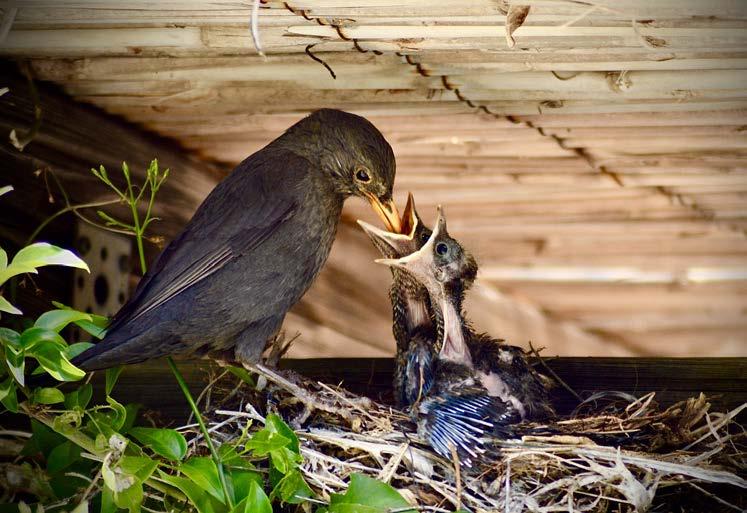

SB Messines, March 2025
Camera: Sony DSC RX100M6
IB: “Again, the theme of caring for offspring echoed in animals. Nice capture.”
3rd place


LOOK MUMMY – OVER THERE
Espinho, MARCH 2025
Camera: Canon R3 – Canon RF 24-70mm f2.8 L
(1/640,f/7.1, ISO 100)
IB: “Wonderful incorporation of distant subjects with near subjects. While a connection between mother and son is visible, the impact of this image is diminished as we’re looking at their backs, preventing a more intimate view and connection with the near subjects.”
5th place
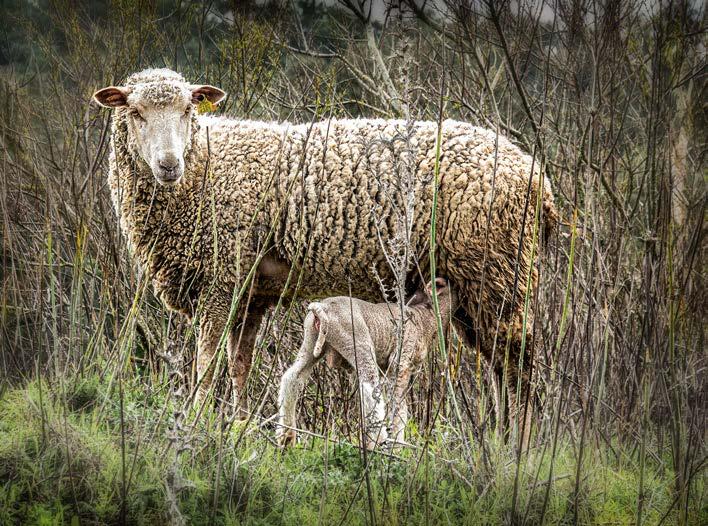

HOLDING ON
Cabanas de Tavira, March 2025
Camera: Canon EOS M50; Lens EF-M55-200mm; Aperture f/6.3; (1/640; Focal Length: 200; ISO:100)
IB: “ I value the connection between mother and child. The impact of the image might’ve been improved with a different angle so that more of the face(s) and interaction would be visible.”
4th place


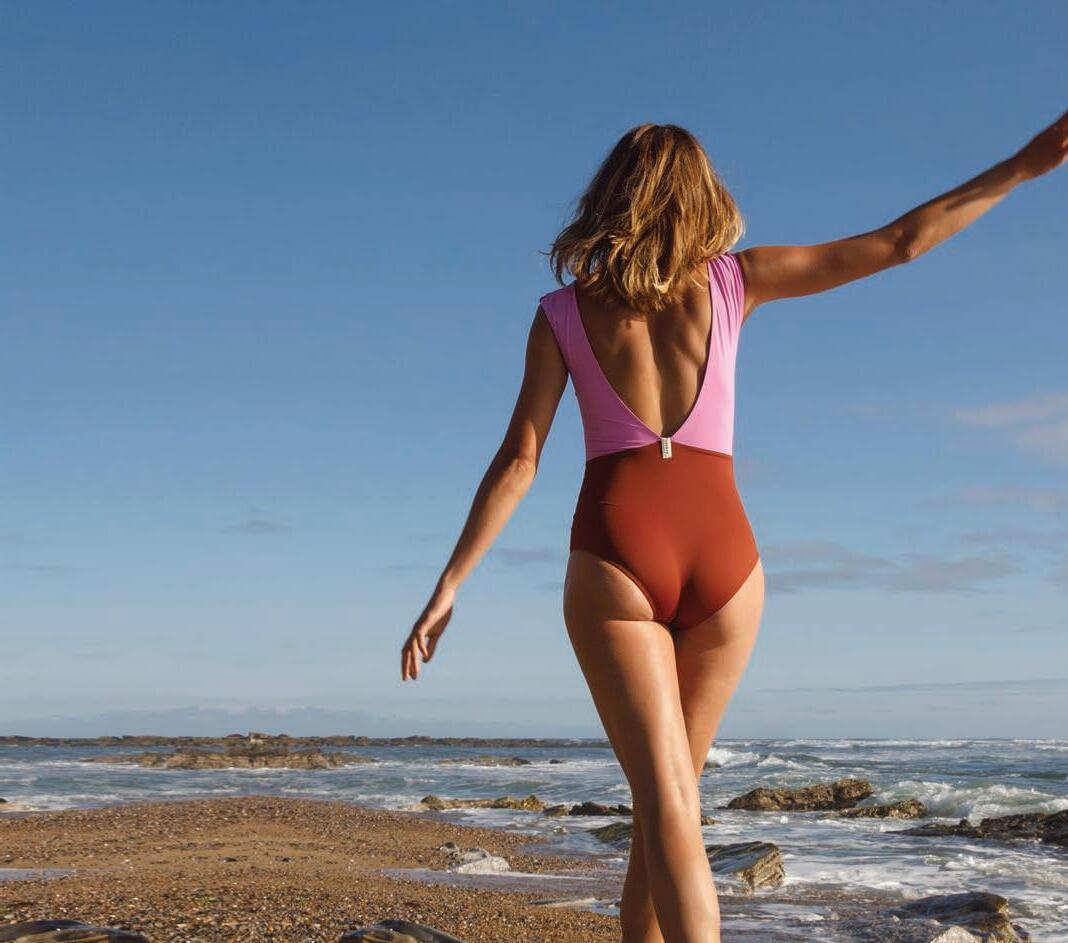
Bodies come in all shapes and sizes—that’s part of what makes each of us unique. Finding a new bikini or swimsuit can be time-consuming and sometimes frustrating. For my beachwear collection, I was searching for highquality materials, timeless designs, and a comfortable fit. When I discovered MYMARINI from Hamburg, I knew it was exactly what I’d been looking for.
Born out of a love for surfing, their bikinis and swimsuits feature minimalist designs, sporty yet elegant cuts, and effortlessly combine sustainability with style. Tops and bottoms are sold separately, reversible, and available in solid colours—perfect for mixing and matching.
In contrast, my ever-growing collection of men’s beach shorts features vibrant patterns, bold colours, and flowery prints.

SOCIAL MEDIA DOES NOT STAND STILL, AND WHAT WORKED FOR YOU YESTERDAY MAY BE COMPLETELY INAPPROPRIATE IN TODAY ’ S TECHNOSAVVY WORLD. ARE YOU GETTING THE MOST FROM YOUR CHOSEN PLATFORM? POSSIBLY NOT. TAKE INSTAGRAM, FOR STARTERS
Words: CHRIS PARTRIDGE
REMEMBER THOSE small, square, blurry photos of our friends and our pets that we used to share on a hot new app called Instagram?
The app that started with a snap of a dog next to a taco stand in Mexico has changed beyond all recognition, becoming one of the most valuable marketing machines on the planet, though we still share photos of our friends and our pets on Instagram.
Today, it is a dynamic platform for creativity, storytelling, marketing, networking and community-building. Whether you’re a content creator, artist, entrepreneur, or casual user, knowing how to exploit Instagram effectively can grow your business, get your message out to the world or even make you a star.
Instagram thrives on visual storytelling. It’s designed to showcase aesthetics, video clips and quick communication. The platform offers both grid posts comprising stills and more advanced formats known as Stories, Reels and Lives.
Each format serves a different purpose. Grid posts are great for portfolio-style content. Stories are casual and engaging. Reels are discovery tools, and Lives are for direct connection. Knowing how and when to use each helps you reach and resonate with different audiences.
Instagram’s algorithm heavily favours Reels. If you’re looking to expand your audience, this is where you should focus. Reels are short-form videos (up to 90 seconds) and can reach people beyond your followers through the Explore page and hashtags. They’re an excellent tool for creativity and storytelling – whether you’re educating, entertaining, or showcasing behind-the-scenes content. High-performing Reels are often quick, visually engaging, and paired with trending audio.
The clear picture
rotate through your posts.
Instagram isn’t just a one-way broadcast platform, it’s a community. Engage with others by replying to comments, reacting to Stories, and leaving thoughtful comments on other creators’ posts. The more active and genuine you are in your engagement, the more likely people are to return the favour.
Use Stories to ask questions, run polls, and show behind-thescenes content. Even something simple like a ‘this or that’ poll or ‘ask me anything’ sticker can encourage interaction and keep your audience invested.
Instagram offers built-in insights for creators and business accounts. Use this data to understand what’s working – check your reach, engagement, follower growth, and more. Which posts are getting saved or shared? What time is your audience most active?
Let the numbers guide your content strategy without becoming obsessed with them.
Don’t just post for the sake of staying active. Plan your content around your goals. If you’re trying to build a brand, showcase your values and aesthetic. If you’re selling a product or service, provide value by including things like educational tips, usergenerated content, before-and-afters. If your goal is community or self-expression, focus on authenticity and consistency.
Use slide carousels to tell stories or share ideas in a digestible way. For example, a five-slide post can deliver tips, tutorials, or an engaging narrative. These posts often lead to more saves and shares, which boost reach.
Posting regularly is important, but you don’t have to post daily to grow. What matters more is consistency – whether that’s three times a week or once a day. Create a rhythm your audience can expect. This builds anticipation and loyalty. Using scheduling tools like Later, Buffer, or Meta’s own Creator Studio can help you stay consistent without burning out.
Your caption is where you give context, personality, and a reason for people to engage. A strong caption might include a hook (first sentence), value (insight, tip, or story), and a call to action (like “share this with a friend” or “what do you think?”). The tone depends on your audience – be funny, informative, heartfelt, or conversational, as long as it feels authentic to you.
One of the fastest ways to grow on Instagram is by tapping into other people’s audiences. Collaborations can be as simple as a shoutout, co-creating a Reel, or doing a Live together. When both parties tag each other, it increases exposure and social proof.
Hashtags are still a useful discovery tool, though not as powerful as they once were. Focus on niche hashtags that are relevant to your content. Instead of #art, try #contemporaryportrait or #moodyartwork. The sweet spot is a mix of popular (1M+ posts), medium (100k–500k), and low-volume (under 50k) hashtags. Avoid banned or spammy hashtags, as they can hurt your visibility. Keep a few curated hashtag sets ready to
Don’t hesitate to reach out to other creators in your niche. A thoughtful message and a shared idea can lead to content that benefits both sides.
In a sea of curated feeds and trends, the accounts that stand out are the ones that feel real. You don’t need to follow every trend or aesthetic. Find your visual style, your voice, and your values – and stay consistent. People follow accounts they connect with, not just ones that look good.
Instagram’s algorithm heavily favours Reels. If you’re looking to expand your audience, this is where you should focus. Reels are shortform videos and can reach people beyond your followers through the Explore page and hashtags.
It’s tempting to chase numbers, but real engagement and connection will carry you further. If your followers feel like they know you and what you’re about, they’ll stick around and support you. Instagram can be an incredibly rewarding platform if you approach it with intention. It’s about creating and sharing what you care about, connecting with others, and building something meaningful – whether that’s a brand, a community, or just a portfolio of your favourite moments. Don’t get caught up in the comparison game. Focus on progress, not perfection, and experiment with what works best for you. With patience, creativity, and consistency, Instagram can be much more than just an app – it can be a powerful tool for growth, expression, and connection.





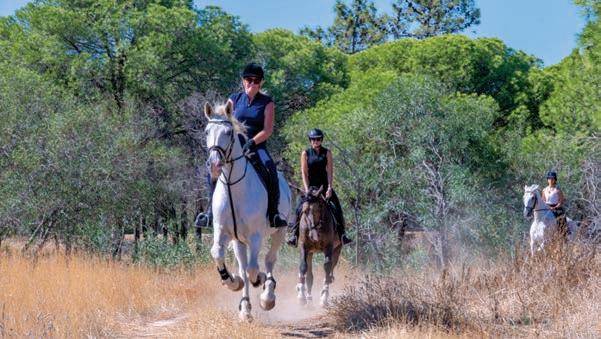

THE ALGARVE PHOTOGRAPHERS GROUP ANNOUNCED THIS YEAR ’ S WINNERS AT ITS FOURTH ANNUAL AWARDS CEREMONY LUNCH IN MARCH. CONGRATULATIONS GO TO ALL INVOLVED
THROUGHOUT THE YEAR, the APG holds six print exhibitions, six online challenges, and 12 magazine challenges (in collaboration with AlgarvePLUS). Members taking part earn points for participation and respective rankings in these activities, which contribute to the annual Order of Merit.
Says President Daryl Gabin: “We like to inspire our members with additional awards they can strive to achieve. The APG lives for its members; without them, there wouldn’t be an APG. It is with their input that the group continues to thrive, and as such, we are very happy to acknowledge members who have excelled in various areas during 2024. We hope that the 16 new members who have joined the APG since the beginning of 2025 also take on the challenges with the same enthusiasm as our long-standing members.”
The Order of Merit Award is presented to the member who, throughout the year, has obtained the most merit points. Merit points are obtained by participating in print exhibitions, corresponding public votes, online and other challenges.
WINNER: Robert Pool, 251 points
RUNNERS-UP:
Heidi Beck, 176 points
Nigel Moore, 166 points
Ina Tanzer, 136 points
Daryl Gabin, 122 points
The President’s Award is presented to the member who, throughout the previous year, has demonstrated significant improvement in their photographic work and abilities.
WINNER: Sharon Johnson (31.6% of votes)

The Veit Mueller Award is for “exceptionally high standards” of work presented during 2024 and is named after one of the group’s founding members who was also an advocate of delivering images with very high standards.
WINNER: Robert Pool (42.1% of votes)
The Mary McClay Award (Dedication Award) is presented to the member who, throughout the previous year has gone out of their way, moved mountains and is constantly promoting the APG as a whole, not to mention holding APG activities as high as, if not higher than, their own daily activities.
WINNER: Daryl Gabin (47.4% of votes)
Daryl Gabin has been the Group’s President since Jan 2020. He, along with

the Steering Group, continues to guide the APG in a positive direction, which isn’t always easy. The ideas he brings and manages to implement within the group tend to help glue everything together, and help the group to evolve, which also appeals to newcomers.
This award puts a premium on ‘Creativity and Consistency’ and is presented to the member whose creativity is always noticed and whose consistency with their work, in general, is also clear for all to see.
WINNER: Ina Tanzer (52.6 % of votes)
Introduced in 2022, this hotly-contested award highlights the most integrated newcomer
WINNER: Glyn Parry (42.1% of votes)
APG President from 2010 to 2019, Mary McClay came from a military family. After school she went into the nursing profession. Her organisational skills were to the benefit of the APG – she arranged field trips, social events and activities. Her attitude to photography was: “I enjoy taking photos as long as I like them – that’s all that matters”. Mary ruled the membership with military precision, but her caring side wasn’t far away. She looked after colleagues, helping them back to their health and stability.
Mary McClay was a positive force to be reckoned with and will be dearly missed by all.


Actor, Golden Globe winner, and one of Hollywood’s ‘most bankable stars’, Kentucky-born Johnny Depp actually began his career as a rock musician. He had an unsettled childhood, eventually moving to Florida where he attended High School but dropped out after learning to play the guitar!
He played in several bands as a teen, then moved to California aged 20 and began working as an actor. His first Hollywood film was Nightmare on Elm Street in 1984, followed by What’s Eating Gilbert Grape in 1993 and Edward Scissorhands in 1990. However, he achieved worldwide fame when he took on the role of Captain Jack Sparrow in the Pirates of the Caribbean series – five films between 2003 and 2017. True to his rock ‘n’ roll roots, he admits that he based the role of Captain Jack on one of his heroes, the Rolling Stones’ Keith Richards!
Since 2004 he has also had his own film production company and has also played in a ‘supergroup’ with Alice Cooper and Joe Perry. He has twice been voted ‘Sexiest Man Alive’ and his tangled private life has hit the headlines as often as his movies, as he has included actress Winona Ryder, supermodel Kate Moss and French singer/actress Vanessa Paradis – with whom he has two children – among his partners. More headlines attended his ‘defamation case’ involving his wife Amber Heard in 2022, with each accusing the other of domestic abuse. He is currently dating a Russian beautician and performing live with his friend Jeff Beck. He owns property in West Hollywood but says he feels more at home in London.

ONE VERY GOOD-LOOKING GUY, ONE POLITICIAN WHO STEPPED OUT OF PLACE, AND ONE HALF OF THE TV COUPLE WHO PUT WRONGS TO RIGHTS FOR MORE THAN A DECADE. ADD TO THOSE ONE OF EVERY WOMAN ’ S FAVOURITE UNDIES, AND YOU HAVE THIS MONTH ’ S LINE UP
Words: JILL ECKERSLEY
s
A lawyer by profession, Rudi Giuliani was Mayor of New York City between 1994 and 2001 – the first Republican to hold that position since the 1960s. His reputation was enhanced by his handling of the terrorist attacks on the World Trade Center on September 11, 2001. His leadership in this devastating event was widely praised, especially when he was quoted as saying: “I want the people of New York City to be an example to the rest of the country and show the world that terrorism can’t stop us!” He was referred to then as “America’s Mayor”, created “Person of the Year” by Time Magazine and even awarded an Honorary KBE by the late Queen Elizabeth II. He was born in Brooklyn to an Italian-American family and studied at the city’s School of Law. Originally a Democrat and a supporter of Robert F Kennedy, he later became an Independent and ran for New York Mayor for the first time in 1989, winning a second term in 1997. During his tenure crime rates dropped in New York City and he was widely praised. However, by 2016 he was supporting Donald Trump’s bid for the Presidency and as Trump’s personal attorney, supported him when he claimed after Joe Biden’s victory in 2020 that the election had been rigged in favour of the Democrats.


Last year he was disbarred from practising law in both New York and the District of Columbia and in January this year settled a dispute with two Georgia election workers who claimed he had accused them of mis-counting the election results there. The lawsuit was settled when he promised not to defame them again – allowing him to keep both his Florida condominium and his New York apartment.

A ‘pety cote’ first made its appearance in the 14th century, as a lightly padded garment, worn under a suit of armour for warmth by men, but by the later Middle Ages the word was used to describe a female undergarment. Petticoats were worn under skirts, although women would loop up their skirts and reveal a decorated or embroidered underskirt to denote a high social station. By the 18th century, petticoats were often made of silk or fine wool, with jackets to match as part of an elaborate outfit. In Victorian times very full skirts became fashionable, and women wore several petticoats underneath to disguise the shape of their legs! By the 20th century styles had changed again, and women were wearing simpler undergarments which were not intended to be on show. Cotton or linen were the usual fabrics used, although the invention of artificial silk, rayon and nylon meant that simpler, lighter petticoats could be worn. Christian Dior’s ‘New Look’ after the Second World War introduced longer, fuller skirts again – and the popularity of rock ‘n’ roll in the 50s meant that young girls wore layers of stiff net petticoats under their full skirts, intended to be revealed when doing an energetic ‘jive’. Slimmer silhouettes in the 1960s mean that underwear became minimal, but a simple ‘slip’ can still improve the line of a fashionable garment, even today.

A native New Yorker with a Scottish mother, actor David Duchovny apparently never imagined that the TV series which made his name would be as successful as it was. The X Files was a science-fiction drama with a paranormal edge, which was screened between 1993 and 2002, and had an extra season in 2016. David Duchovny played Fox Mulder, an FBI agent, alongside Gillian Anderson as Dana Scully, the couple having a complex professional and

His acting career had begun with small parts in TV shows and commercials, after he had studied for a B.A. in English from Princeton University and then an
Early film roles included the and the The X Files he branched out into presenting, as Saturday Night and also appeared in . He is also a musician and has released three folk-rock albums as well as writing four novels. He married actress Tea Leoni in 1997. The couple have a son and a daughter but divorced in 2014. David is an environmental campaigner and says that he and his costar Gillian Anderson are now “like family.” He lives in California with his partner Monique Pendleberry and
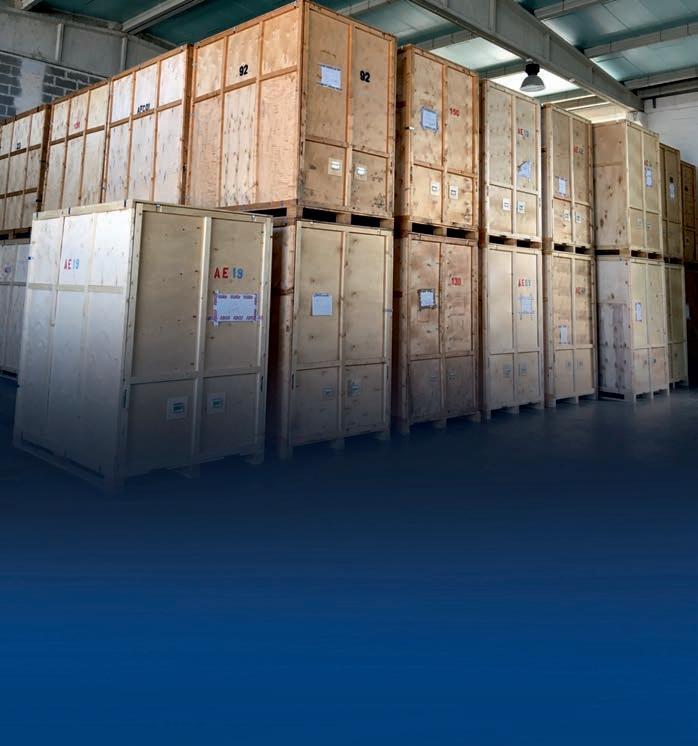

Manuela, a German beautician with 30-years experience, offers the latest technologies at her Almancil salon, including:
LAST MONTH, I attended the 23rd Aesthetic and Anti-Aging World Congress in Monaco, an international gathering of thought-leaders and innovators in this rapidly evolving field, which remains one of the best places to catch up on cutting-edge trends and ideas that are shaping the future of health and beauty.
One of the key themes this year was biohacking – the art and science of using lifestyle changes, supplements, and technology to optimise health, slow down ageing, and improve performance. A well-documented and powerful approach in this context is calorie restriction – or more precisely, strategic nutritional planning in midlife and beyond. Scientific evidence supports that reducing caloric intake (without malnutrition) can have profound effects on metabolic health and longevity.
In recent years, medications such as Ozempic, Wegovy, and Mounjaro – originally developed for type 2 diabetes – have shown tremendous promise as weight loss agents. By regulating appetite and improving insulin sensitivity, they not only help patients shed excess weight, but also contribute to reducing inflammation, and improving cardiovascular health.
signs, detect arrhythmias like atrial fibrillation, perform ECGs, and support remote patient care. These devices are not just medical monitors – they are health coaches, helping to personalise fitness and nutrition strategies in real time, making wellness more engaging and sustainable.
On the aesthetic side, we’re witnessing a move beyond traditional neuromodulators like Botox and hyaluronic acid fillers to biostimulation – encouraging the body to regenerate its own collagen and elastin, the two critical proteins responsible for skin firmness and elasticity.
High-quality, balanced nutrition is essential for physical performance, mental clarity, and cellular health.
Biostimulators, injected into the skin at various depths, help activate fibroblast cells and support natural rejuvenation. A particularly sustainable and holistic biostimulatory method is Platelet-Rich Plasma (PRP) therapy. By extracting and processing your own blood plasma, we can re-inject growth-factor-rich platelets into the skin, joints, or tendons to stimulate healing and regeneration.
These medications are administered via once-weekly injections, and should always be used under professional supervision to ensure safety and maximise effectiveness. Complementing these pharmaceutical tools is the Freestyle Libre glucose sensor, a discreet, wearable device that provides real-time glucose monitoring for up to two weeks. This technology empowers patients to better understand their metabolic responses and avoid harmful sugar spikes – an essential step in managing both diabetes and long-term health.
AI, wearables, and the future of preventive care
Technology continues to revolutionise longevity medicine. A growing range of AI-powered wearables can now track vital
We also explored innovations in non-invasive body toning, such as devices that use electrical muscle stimulation (EMS) to induce controlled contractions that tighten and tone the skin and underlying muscles.
DR THOMAS KAISER says:
“If you’re curious about how these innovations can be tailored to your unique health journey, I welcome you to visit me at the Quinta do Lago Medical Centre. Together, we can explore a science-backed, personalised roadmap to a longer, healthier, more vibrant life!”




REMOVALS
REMOVALS
• Weekly removal service to and from the UK, Portugal and Malaga, Spain
STORAGE
• Weekly removal service to and from the UK, Portugal and Malaga, Spain
• Full or part packing and wrapping service
STORAGE
• Storage warehouses located in the UK, Algarve, Lisbon and Malaga, Spain
• Storage warehouses located in the UK, Algarve, Lisbon and Malaga, Spain
• Shop online with any furniture retailer and have your items delivered the following week
• Shop online with any furniture retailer have your items delivered the following
• Full or part packing and wrapping service
• Fully insured, secure and alarmed
• Fully insured, secure and alarmed
• One/multiple items of furniture
• One/multiple items of furniture
• One box to full house removals
• One box to full house removals
• Villa to villa moves within the Algarve
• Storage available for long or short term
• Villa to villa moves within the Algarve
• Storage available for long or short term
• All customs paperwork and procedures taken care by our in house customs experts


RICARDO CHAVES OF ALL FINANCE MATTERS IS HERE TO HELP PEOPLE UNDERSTAND WHAT IS ALLOWABLE – AND NOT – WHEN IT COMES TO FINANCIAL MATTERS IN PORTUGAL. AFM EXPERTS CAN ADVISE YOU ON THE BEST WAYS OF DEALING WITH BOTH BUSINESS AND PERSONAL TAX MATTERS TO ENSURE YOU ARE IN THE BEST POSSIBLE POSITION
QWe are NHR. I do have quite hefty monthly costs for prescribed medication for my wife and me. If I sign on at the local health centre, do they issue prescriptions and will I get those medications at no cost?
In Portugal, medications prescribed by doctors can be either paid for or subsidised by the State, depending on various factors. Register with the National Health System (SNS) and get your user number. The doctor at the local health centre will issue the prescriptions, which lead to a discount on the normal price of the medicine.
However, please note that although the State covers part of the cost of the medication, the patient typically pays the remainder.
The State offers higher subsidies for some of the more vulnerable groups in the population, such as elderly people with low pensions and certain chronic patients. However, not all medications are completely free for all citizens.
QI recently agreed to take a stand at a local exhibition and signed the contract which stated the stand cost. I have since been told that other exhibitors (interestingly, who were Portuguese) agreed the same size stand but because they booked late they got a substantial discount. This not only seems grossly unfair, but is questionably legal. Where do I stand and what should I do?
It seems pretty unfair that other exhibitors received a substantial discount simply because they booked late. It’s understandable why this would feel grossly unjust, and although this could be seen as a standard commercial practice, there may be legal grounds to question it. Our advice in these matters is always to seek legal advice. Consulting with a legal expert on this matter might provide some clarity and potential solutions.
In Portugal there are laws against discrimination, including in commercial transactions. This could be a legal issue if you believe that the discount was given based on nationality or any other discriminatory factor. Also,
the Portuguese law protects against unfair commercial practices; if the exhibition organisers did not disclose the possibility of discounts or if they misled you in any way, this could be considered an unfair practice.
QI am starting a consultancy business and concerned about how invoicing to clients works here. I know this has been in your column before but would like a very simply explanation. In Portugal, sole traders must issue invoices for all sales and services. These invoices can be issued through the Portuguese Tax Authority’s online portal (Portal das Finanças) or using certified invoicing software.
Each invoice must include specific details such as the date of issue, a unique sequential number, the name, address, and Tax Identification Number (NIF) of both the issuer and the recipient. They should also include a description of the goods or services provided and the quantity and unit price of the goods or services. Lastly, it should include the applicable VAT rate and the total amount of VAT charged.
If your annual turnover exceeds €15,000, the sole trader must register for VAT (IVA) and charge VAT on their invoices within Portugal (normally, for other countries, the VAT rules allow the reverse charge). Below the €15,000 threshold, the taxpayer can opt for the VAT exemption under Article 53 of the VAT Code.
For transactions below €1,000, simplified invoices can be issued, which require fewer details but still must include the essential information such as the date, description of goods or services, and total amount. Electronic invoicing is mandatory; do not issue invoices through Word or Excel, as the law requires the use of certified software.
Please note that monthly and annual Reporting is mandatory, as all sole traders must submit a monthly file of their sales to the tax authorities.
Make sure you find a professional who can help you ensure compliance with Portuguese tax laws and maintain accurate financial records.
Send questions you may have to info@afm.tax for possible inclusion in AlgarvePLUS. To consult directly with the experts at AFM, email info@afm.tax


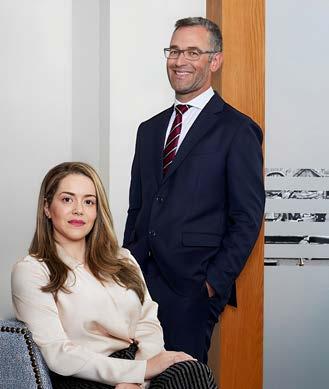
QShould you, or a member of your family, fall ill after eating in a particular restaurant, do you just write the experience off as unfortunate, or should you formally complain and request a refund or a free meal. This happened recently. Two of us were ill (vomiting) within a couple of hours and one of our friends was sick the following day. What should be done legally?
AIf you suspect food poisoning from a restaurant, there are steps you can take both informally and legally. In Portugal, you can report food safety concerns to the local health and safety food authority (Autoridade de Segurança Alimentar e Económica, or ASAE). They oversee food hygiene and safety regulations and can inspect a restaurant, impose severe fines, and even close the establishment if they find health and safety infractions that would be deemed as severe.
If you haven’t already, consult a doctor to confirm food poisoning and obtain medical documentation. This can serve as evidence if you decide to pursue legal action. As we repeatedly say, legal matters, for the most part, are won or lost on evidence, its existence or lack of it.
Keep records of your visit, including receipts, photos of the food (if available), and details of your symptoms. If others were affected, their accounts can strengthen your case.
You can informally reach out to the restaurant to explain the situation and request a refund or compensation. Many
establishments may offer a resolution to maintain their reputation. You can also do it through your lawyer, which should have the effect of making the restaurant understand that you are taking this matter with a more serious approach. If the restaurant refuses to cooperate or if the incident caused significant harm, you may consider legal action. In Portugal, restaurants are legally responsible for ensuring food safety. You would need to prove negligence, such as improper food handling or hygiene practices.
The amounts requested as compensation will depend on the case, but can cover more than just the refund of the meal, including health complications, suffering, pain, stress, anxiety or embarrassment. In Portuguese law those are referred to as moral damages.
QIf someone falls on your property – in this case on loose calçada stones on the terrace, do they have any rights? A delivery person tripped up at my house – he obviously wasn’t looking where he was going. He picked himself up, got a signature for the delivery and went off. Two days later, he knocked on the door, said he had hurt his leg and couldn’t work and suggested I pay him €100 in which case he would not go to the police. I told him to go away and that I would speak to my lawyer. I haven’t heard from him again – no surprise there – but would like to know what the legalities are?
AIn our assessment, if your home and its surroundings are not designated
as a commercial space set up to receive the public, there are no grounds in Portuguese law to establish liability for someone falling there for whatever reason.
If there was an ‘accident’ in a hotel, or a restaurant or a store and the person who tripped and fell was a client or customer, then the situation could be different, as there are specific safety rules for the different types of businesses. In that situation, the business could be deemed liable if it did not comply with those rules. And even if you were in breach of the rules, but it was proven that the individual also contributed to his/ her own injuries (or material damages) due to reckless or negligent behaviour, the liability of the business owner could be limited or even excluded.
However, that does not mean that if someone gets injured in a private property, the owner is always free of liability. Firstly, there are established rules for construction, the majority of which focus on ensuring that what is built is done in such a way that it does not represent a danger to the users, whether residents of visitors.
These type of matters are generally decided by the courts using a test, which basically asks whether a normal person with the specific knowledge and characteristics, or the person in question, could and should have done something to avoid the accident, or whether it was unavoidable even if the person had a high standard of care, due to the characteristics of the defect in the property itself.
Email questions for Ramos Associados to martin@algarveplusmagazine.com


Set in a beautiful setting with an adjacent lifestyle and furniture shop, enjoy thin-crust pizzas, homemade pastas, and fresh salads from our very own garden.
Kitchen: open daily from 12h -23h for dining, takeaway and delivery. Shop: open Mon-Sat 10h-23h & Sun 13h-23h
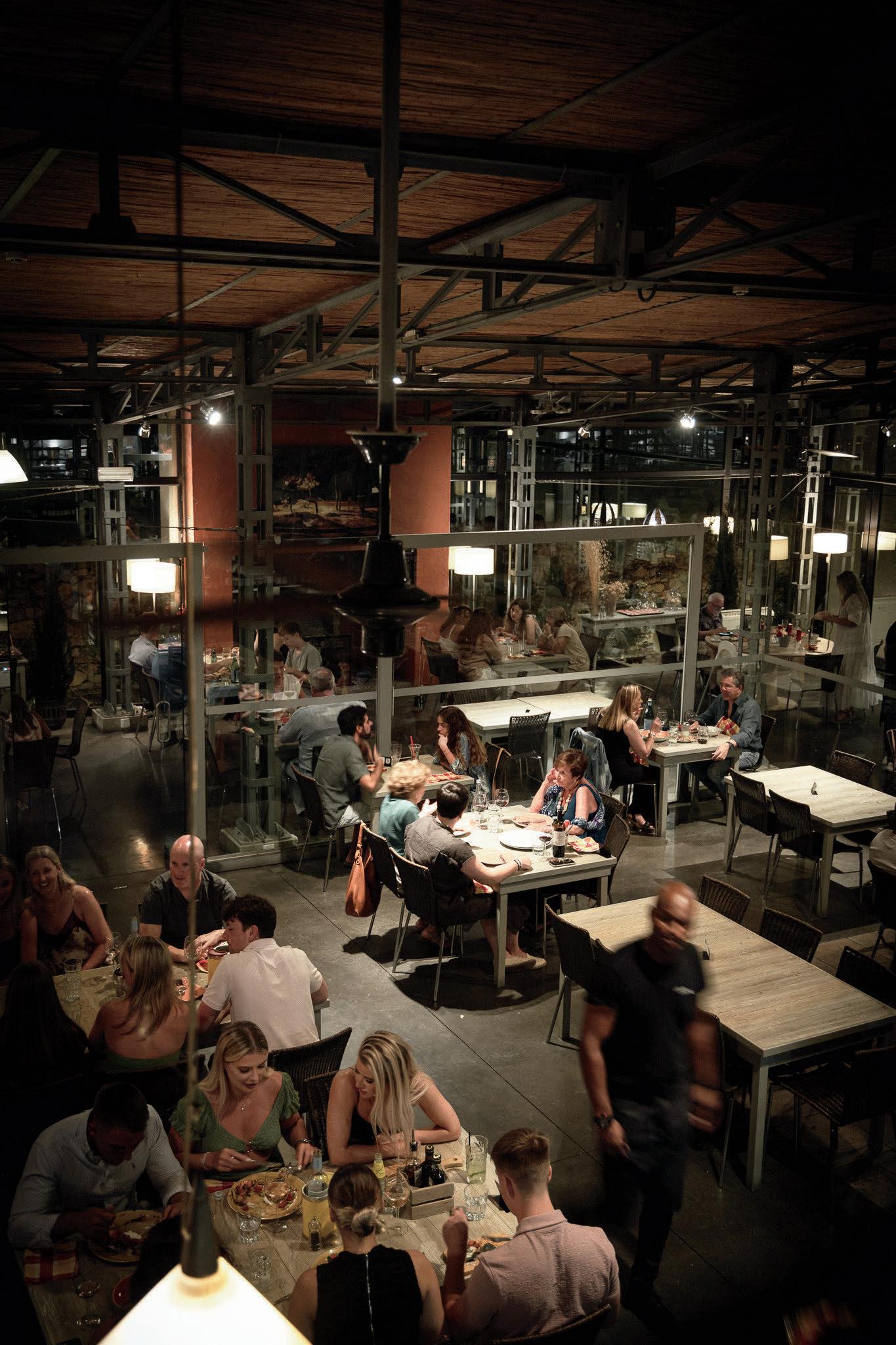



STEVE SCHAPIRO
In the Pink Advisory Quinta Shopping
Barbra Streisand in The Bathtub, 1974, gelatin silver print, 50x30cm

MIGUEL REDONDO
Tavira d’Artes 962 012 111
Taviradartes.com
Mar Portil 1, acrylic on canvas, 100x100cm

KATHRYN BARNARD
The Art Studio, Tavira 910 573 265
Flamingo Dance 2019, by photographer Kathryn, sizing and price on request.
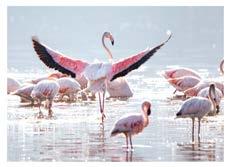

KSENIYA RAI
Lady in Red
R. Infante D. Henrique 140 Portimão 282 356 131 galerialadyinred.com On now
Pool Before Sunset, from the Sunny Days Exhibition. Oil on canvas, 150x90cm

Galeria Alfa
Rua Brites de Almeida, 18, Loulé On until 14 June, alfaia.org
Angelo Gonçalves, Bruno Grilo, Leandro Marques, Miguel Cheta, Pedro Cabral Santo, Sara Navarro, Susana de Medeiros e Xana. Installations, sculptures, images, objects and drawings invoking the beach as a space for speculation and transformation. Here, work by by Miguel Cheta.

Museu do Traje, São Brás, 966 329 073 amigosdomuseu.com, Until 31 May Works by artists João Pinto, Lotti Klink, Thea Booijink and BJ Boulter. Here, Amber, by Lotti Klink, acrylic mixed media, 80x80cm

CLAIRE FONTANA
ArtCatto, Loulé, 289 419 447, info@artcatto.com, artcatto.com Plongeur-Plongeuse Variante 2, bronze and glass, 33x18x15cm

TERRY MOORE
Côrte Real Gallery
Paderne and Olhão 961 528 679 corterealarte.com
Armona, from a collection of treasured islands, by this mixed-media artist who is enchanted by them all, but especially Armona.

In the Pink Fine Photo Art Praça da República 69-75 Loulé in-the-pink.com
Colorama is an exhibition of works by Johnny Mae Hauser and Teresa Freitas who aboth push the boundaries of traditional photographic representation, using their unique palettes to challenge how we see and feel the world around us.
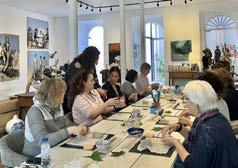
GALERIA MEINKE FLESSEMAN
Portimão, 917 937 564 galeriameinkeflessman@gmail.com meinke-flesseman.com
10 May, 10h00–13h00 Ceramic Workshop with Sara Rainha Teixeira, €50 per person
10 and 24 May, 15h00–18h00 Life Drawing Session with Jill Stott, €30 per person
GAMA RAMA
Rua do Prior 13, Faro 961 371 891
16 May, 10h00–13h00
€40 per person (materials included)
Making a notebook with Coptic stitching with Juliett Sarmiento Nieto, visual artist and graphic designer who is currently developing handmade bookbinding projects, inspired by places, nature and architecture.

E: loulecriativo@cm-loule.pt, FB: @loulecriativo IN: @loule_criato, W: loulecriativo.pt
NEW! DRY ROPE PAINTING WORKSHOP
Palácio Gama Lobo, Loulé
3 May, 10h00–13h00
Partner: Inês Pedro Registration: info@sanpi.pt €50
POTTERY WHEEL WORKSHOP – MOTHER ’ S DAY SPECIAL
Palácio Gama Lobo, Loulé 3 May, 15h00–18h00
Partner: António Medeiro –Olaria Xavier Registration: antoniomedeiro@gmail.com
€35
A workshop for mothers and children where each pair creates two pottery pieces on the wheel that complement each other, reflecting their special bond.
TAPESTRY WORKSHOP WITH ALGARVE PLANTS
Palácio Gama Lobo, Loulé 10 May, 10h00–13h30 Partner: Susana Mendez Registration: susana.m.mendez@gmail.com
€50
A creative experience that combines textile art and nature, creating small tapestries inspired by the local landscape and flora.
969 335 749, hello@figsonthefuncho.com figsonthefuncho.com
COOKING HOLIDAY
9-13 May
A cuisine-based break to learn vegetarian Mediterranean cooking.
COOKING WORKSHOP
12 May, 11h45–15h00
Master the Vegetarian Mediterranean with Middle Eastern flavours.
CERAMIC PAINTING WORKSHOP
Palácio Gama Lobo, Loulé 17 May, 10h00–12h30
Partner: Sandra Dionisio Registration: sandra.ie.dionisio@gmail.com €25

5 SENSES WALK WITH QUINTA DA TÔR
Quinta do Rosal, Loulé 26 May, 17h00–17h30
Partner: Joana Almeida Registration: j.banha.almeida@gmail.com €40
A sensory walk to connect with nature. Listen to birds and insects, feel the freshness of the stream and its scents, observe the surrounding landscape, and taste wines from the Barrocal region.

COMPOSER ’ S PORTRAIT AMIGOS DE M Ú SICA Os Agostos Santa Bárbara de Nexe amigosdemusica.org
6 and 8 May Doors open at 18:00 and concerts start at 19:00 British pianist Lucy Parham, together with narrator Joanne David will perform I Clara, the story of the life and music of Clara Schumann (1819-1896). Wine, fruit juices and canapés will be available for self-service from 18h15 before the concert and during the interval. For programme details, visit the website. To book, email reservasconcertos@gmail. com. Entry donation including refreshments is €30pp for Amigos, guests and nonmembers, payable in advance.

ORQUESTRA DO ALGARVE 289 860 890 orquestradoalgarve.com
9 May: Albufeira, 21h30
Auditorio Municipal Martin Andre, conductor Zachary Spontak, violin Bruch, Beethoven and Schubert
15 May, Faro, 19h00
Teatro Lethes Chamber Music Group 2 violins, 1 viola, 1 cello Histórias Imaginérias
30 May, Lagoa, 19h00
Auditorio Carlos do Carmo Pablo Urbina, conductor António Pereira, viola Arnold. Mozart and Haydn
republica14.pt, Reservas@republica14.pt
19h00 and 21h30
3 May, 19h00 and 21h30
AZURA
Sara Badalo and Léo Vrillaud present a dialogue between the cello and the guitar, born from a meeting of affinities between these two incredible musicians. They met in a small village near Viseu and from this encounter came the album Jardim de Inverno, a record inspired by the colours, textures, and atmospheres of Portuguese roots.

10 May, 20h00
RODA DE SAMBA
Weather permitting, on the open back terrace, the fabulous Nani Medeiros and her group in a night full of joy and fun, with music and food to match.

17 May, 21h00
NANOOK SINGS THE BLUES
Tércio Nanook, and another night of great joy.

24 May, 21h00
LALA TAMAR
Reclaiming her North-African heritage with an attitude, Lala Tamar is pop music’s new Eastern muse. Expect ancient hymns turned into punchy pop songs with dance and hip hop beats.
31 May, 21h00 O LUDO
The current lineup in this Portuguese indie pop rock band, born and raised in Olhão, includes four of the founding members: Davide Anjos, João Baptista, Paulo Ferreirim, and Nuno Campos.





Join austa on Sunday 4 May for a special ‘Sunday Service’ – a one-off opportunity to experience their full evening à la carte menu at lunchtime. Reservations at austa.pt


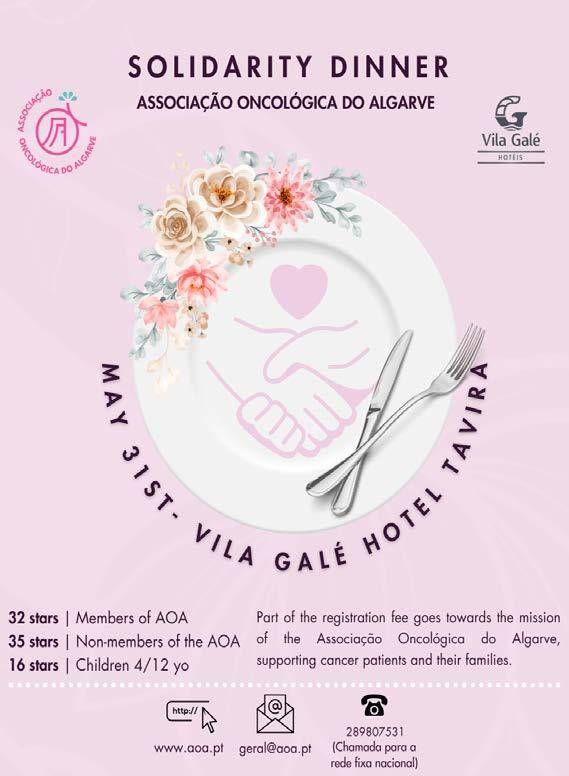
THERE COMES A TIME IN EVERYONE ’ S LIFE WHEN CURIOSITY GETS THE BETTER OF YOU AND THE NEED TO SEE WHAT ’ S BEHIND THE CUPBOARD DOORS BECOMES SOMETHING OF A MISSION. PROMPTED BY HIS WIFE, ANTHONY MARTIN TOOK ON THE CHALLENGE TO INVESTIGATE AND WAS SUPRISED BY HIS FINDINGS

FIFTEEN YEARS AGO, the 16th of this month was the date I metamorphosed from the urbane, culture-loving city dweller and owner of more Armani ties than could be found in the boutiques of Milan’s Galleria Vittorio Emanuele, to the Jed Clampett of the southern Algarve, finally disposing of my long-held city wardrobe.
And now, on yet another wet weekend, on one of the three – depending on who you worship – designated days of rest, the day when we can lay in bed a while longer, the day when we blokes don’t have to shave and the day when you can, should you wish, laze about in your dressing gown or hoodie, read the papers or watch a crap film on Netflix, it is, unfortunately, also the day when your wife, well in my case, my wife, decided to change the sheets.
And that rather knocks the lay-in on the head and, even more unfortunately leads to: “as you’re up anyway, can you clear out the storage cupboard.”
Ah yes, the storage cupboard. I may have mentioned this before, it’s the elephant in the room in any conversation we have regarding the house, for this is not a pokey little space under the stairs; the bloody thing is two and a half metres high, can take four men standing and was formed when the builders discovered they had misread the plans and found they had an unexpected void.
your sister brought us?” “Dunno, put it in the storage cupboard for now.” And there it goes, along with the cousin-by-marriage’s golf clubs, the grandchildren’s inflatable ostrich, a dozen UK bayonet fitting light bulbs and multiple toolboxes, which I swear are mating in there, as each time I look the collection seems to have grown. But facing up to the fact that eventually I shall have to bite the bullet, grapple with the inevitable and sort out the damned cupboard, I started to remove things and lay them on the floor.
At first it was easy, as the ones from the front were the last things in, and apart from the occasional: “I wondered where that was” all went smoothly, until I got in a little deeper and found items from past interests. Golf balls, snorkels, photographic lighting, an electronic keyboard with sheet music and sets of stone working chisels. Three plastic tubes containing 1970s signed silk-screen prints by ‘upand-coming artists’ who never quite came up. Mixed in with these were a collapsible Zimmer frame, plastic orthopaedic boot, a set of crutches and a raised toilet seat.
Next out were the heavy-duty tools, circular saw, bench drill, pipe bender, assorted clamps and a chain block hoist – where did that come from?
Coming to me with the Portuguese equivalent of “ere guv, wot do we do wiv this?” I suggested they put some doors on it, and behold, the storage cupboard was born. Yes, we creatives may think outside the box, but when the box is full it creates other problems.
We started to fill the cupboard in the late 80s with all those objects you can’t find a home for. You know the situation: “What shall I do with the hideous vase
Next out were the heavy-duty tools, circular saw, bench drill, pipe bender, assorted clamps and a chain block hoist – where that came from Lord only knows. Then came the Yoga mat together with assorted seat cushions from long gone plastic chairs. and then we were into the soft furnishing department.
Here were the bed covers that matched the original curtains, a large rug, made in the same style and stitch as the Arraiolos carpets but this one had been made by a factory in China rather than an artisan up north, duvets which at the time were either too heavy, too light, too big or too small, and two crates of electrical wiring, plugs, switches, wall boxes and assorted undefined electricals.
And eventually there I was, facing an empty cupboard. Did I congratulate myself? No. My only thought was to put everything back and seal the doors up.

